World War II Research Essay Topics
Frank Whitney / Getty Images
- Writing Research Papers
- Writing Essays
- English Grammar
- M.Ed., Education Administration, University of Georgia
- B.A., History, Armstrong State University
Students are often required to write a paper on a topic as broad as World War II , but you should know that the instructor will expect you to narrow your focus to a specific thesis. This is especially true if you are in high school or college. Narrow your focus by making a list of words, much like the list of words and phrases that are presented in bold type below. Then begin to explore related questions and come up with your own cool WWII topics. The answer to questions like these can become a good starting point for a thesis statement .

Culture and People
When the U.S. entered into war, everyday life across the country changed drastically. From civil rights, racism, and resistance movements to basic human needs like food, clothing, and medicine, the aspects of how life was impacted are immense.
- African-Americans and civil rights. What impact did the war years have on the rights of African-Americans? What were they allowed or not allowed to do?
- Animals. How were horses, dogs, birds, or other animals used? Did they play a special role?
- Art. What art movements were inspired by wartime events? Is there one specific work of art that tells a story about the war?
- Clothing. How was fashion impacted? How did clothing save lives or hinder movement? What materials were used or not used?
- Domestic violence. Was there an increase or decrease in cases?
- Families. Did new family customs develop? What was the impact on children of soldiers?
- Fashion. Did fashion change significantly for civilians? What changes had to be made during wartime?
- Food preservation. What new preservation and packaging methods were used during and after the war? How were these helpful?
- Food rationing. How did rationing impact families? Were rations the same for different groups of people? Were soldiers affected by rations?
- Love letters. What do letters tell us about relationships, families, and friendships? What about gender roles?
- New words. What new vocabulary words emerged during and after WWII?
- Nutrition. Were there battles that were lost or won because of the foods available? How did nutrition change at home during the war because of the availability of certain products?
- Penicillin and other medicine. How was penicillin used? What medical developments occurred during and after the war?
- Resistance movements. How did families deal with living in an occupied territory?
- Sacrifices. How did family life change for the worse?
- Women's work at home. How did women's work change at home during the war? What about after the war ended?
Economy and Workforce
For a nation that was still recovering from the Great Depression, World War II had a major impact on the economy and workforce. When the war began, the fate of the workforce changed overnight, American factories were repurposed to produce goods to support the war effort and women took jobs that were traditionally held by men, who were now off to war.
- Advertising. How did food packaging change during the war? How did advertisements change in general? What were advertisements for?
- Occupations. What new jobs were created? Who filled these new roles? Who filled the roles that were previously held by many of the men who went off to war?
- Propaganda. How did society respond to the war? Do you know why?
- Toys. How did the war impact the toys that were manufactured?
- New products. What products were invented and became a part of popular culture? Were these products present only during war times, or did they exist after?
Military, Government, and War
Americans were mostly against entering the war up until the bombing of Pearl Harbor, after which support for the war grew, as did armed forces. Before the war, the US didn't have the large military forces it soon became known for, with the war resulting in over 16 million Americans in service. The role the military played in the war, and the impacts of the war itself, were vast.
- America's entry into the war. How is the timing significant? What factors are not so well known?
- Churchill, Winston. What role did this leader play that interests you most? How did his background prepare him for his role?
- Clandestine operations. Governments went to great lengths to hide the true date, time, and place of their actions.
- Destruction. Many historic cities and sites were destroyed in the U.K.—Liverpool, Manchester, London, and Coventry—and in other nations.
- Hawaii. How did events impact families or society in general?
- The Holocaust. Do you have access to any personal stories?
- Italy. What special circumstances were in effect?
- " Kilroy was here ." Why was this phrase important to soldiers?
- Nationalist Socialist movement in America. What impact has this movement had on society and the government since WWII?
- Political impact. How was your local town impacted politically and socially?
- POW camps after the war. Where were they and what happened to them after the war? Here's a starting point: Some were turned into race tracks after the war!
- Prisoners of war. How many POWs were there? How many made it home safely? What were some long-lasting effects?
- Spies. Who were the spies? Were they men or women? What side were they on? What happened to spies that were caught?
- Submarines. Were there enemy submarines on a coast near you? What role did submarines play in the war?
- Surviving an attack. How were military units attacked? How did it feel to jump from a plane that was disabled?
- Troop logistics. How were troop movements kept secret? What were some challenges of troop logistics?
- Views on freedom. How was freedom curtailed or expanded?
- Views on government's role. Where was the government's role expanded? What about governments elsewhere?
- War crime trials. How were trials conducted? What were the political challenges or consequences? Who was or wasn't tried?
- Weather. Were there battles that were lost or won because of the weather conditions? Were there places where people suffered more because of the weather?
- Women in warfare. What roles did women play during the war? What surprises you about women's work in World War II?
Technology and Transportation
With the war came advancements in technology and transportation, impacting communications capabilities, the spread of news, and even entertainment.
- Bridges and roads. What transportation-related developments came from wartime or postwar policies?
- Communication. How did radio or other types of communication impact key events?
- Motorcycles. What needs led to the development of folding motorcycles? Why was there widespread use of military motorcycles by the government?
- Technology. What technology came from the war and how was it used after the war?
- TV technology. When did televisions start to appear in homes and what is significant about the timing? What TV shows were inspired by the war and how realistic were they? How long did World War II affect TV programming?
- Jet engine technology. What advances can be traced to WWII needs?
- Radar. What role did radar play, if any?
- Rockets. How important was rocket technology?
- Shipbuilding achievements. The achievements were quite remarkable during the war. Why and how did they happen?
"America's Wars Fact Sheet." U.S. Department of Veterans Affairs, May 2017.
- Understanding the Progressive Era
- Women and Work in World War I
- Who Were the Viet Cong and How Did They Affect the War?
- America and World War II
- Women in World War I: Societal Impacts
- Guns or Butter: The Nazi Economy
- Mexican Involvement in World War II
- Famous Americans Killed in World War II
- History of Government Involvement in the American Economy
- Rosie the Riveter and Her Sisters
- 67 Causal Essay Topics to Consider
- Top 10 Things to Know About the Aztecs and Their Empire
- The Major Wars and Conflicts of the 20th Century
- The Postwar World After World War II
- Causes of World War II
- World War II: Churchill Tank
205 World War 2 Essay Topics & Examples
Looking for good World War 2 topics to explore? Look no further! In this list, we’ve collected the best topics of WW2 for middle school, high school, and college students. No matter what aspect you’re interested in, you will definitely find here something for yourself.
In addition to WWII topics, we’ve also included some helpful tips and essay examples. Check them out below!
🤫 Secrets of Powerful Essay on World War 2
- 🏆 Best WW2 Topic Ideas & Essay Examples
👍 Good Essay Topics on World War 2
- 🥇 Most Interesting WW2 Topics to Write about
🔎 Simple & Easy World War 2 Essay Topics
❓ ww2 essay questions, ✅ world war 2 research topics, ✍️ world war 2 topics for a project.
From diplomacy and espionage to battlefield events and the fate of nations, World War 2 essay topics are broad in range and require their writer to have an in-depth knowledge of various details.
Thus, writing a World War 2 essay may seem daunting due to the weight of the necessary historical analysis. However, writing an excellent paper is as easy as keeping in mind a few minor but cornerstone circumstances.
WWII Topics: Important Events
Everyone knows about the Atlantic and D-Day, but World War 2 essay prompts go further than the standardized level of knowledge. Paying due attention to the topic of the Eastern Soviet front, the French Vichy government, and the Blitz over Britain should be essential centerpieces of your essay.
All Ally members, just like all Axis partners, had their crucial moments and roles to play, and focusing on standalone countries does a disservice to a war that involved more than 30 countries.
Even if your central theme centers on a single country, you can gauge the independence of their politics and tactics per its allies. Remember that all events are interconnected and each action creates a reaction!
Creating a timeline, or finding one, will help you understand the continuity of the war’s narrative.
You should frame for yourself the time between events, the countries affected by them, and their outcome. Doing so, regardless of the problem you are tackling, will make your paper flow smoothly from one subject to another, touching upon interconnected ideas.
Topics of WW2: Prominent Personalities
When writing about World War 2, most essayists focus only on Adolf Hitler’s adverse role and outright criminal actions. However, you can and should go beyond even Franklin Delano Roosevelt, Joseph Stalin, and Winston Churchill.
Focus on the country that you are tackling; find what connections it had, and what tactics it pursued, and note its leader.
For example, if you are writing about the Eastern front, then mentioning the characters of Zhukov for war-related events, Molotov for diplomacy, and Kalinin for internal affairs will illustrate that you have a comprehensive knowledge of various interconnected topics.
Do your research keeping in mind the essentiality of the personal factor, even in worldwide affairs.
WW2 Topics: The Positive and Negative Consequences
Even today, there are demographic implications and political repercussions of the war. Thus, World War 2 essay questions should demonstrate all consequences of such an event, if possible with vivid examples.
Use quotations, studies, and book and journal titles to support the information you are presenting.
From the accounts of the event’s contemporaries to photo materials and recordings, there are millions of sources on the circumstances of World War 2, many of which are readily available online.
Let your bibliography be representative of your academism and include relevant, credible, and varied sources in it.
Paper Structure
Creating an outline for your paper in the pre-writing stages will help you overview the planned working process and see its weak aspects. Doing so includes seeing what themes are underdeveloped and which you have overpowered with information, as well as correcting this issue promptly.
Furthermore, doing so gives you an understanding of excellent World War 2 essay titles, which are pivotal in getting your readers interested in your work.
If you feel like your paper is lacking something, structurally or informatively, then you can read sample essays on similar issues and judge for yourself what you can apperceive from them.
Does your paper still feel daunting? Let IvyPanda give you some inspiration! Get motivated, writing, and graded “excellent”!
🏆 Best World War 2 Topic Ideas & Essay Examples
- The World War 2 Positive and Negative Repercussions The Effects Of The 2nd World War: The fall of world major powers: The war did not just end, but it had some positive and negative effect to the countries both involved and those that […]
- Could the US Prevent the Start of World War II? Some believe that the United States of America could prevent the outbreak of the war. Therefore, it is possible to assume that the USA could not have prevented the start of the Second World War […]
- World War 2 Consequences The major causes of this Great War were the unresolved issues that resulted from the World War 1. Another thing that led to the World War 2 was the failure of the League of Nations.
- Miscommunication Problems: the US and Japan in World War II At the beginning of 1945, the leaders of such countries as the United States, the United Kingdom, and China offered the document that outlined the conditions of the Japanese surrender under which Hirohito could stay […]
- World War II Propaganda Posters in America The imagery of the boot stepping on the American church is not just a threat to the religious ideals of the country but a threat to freedom itself as the church often doubled as the […]
- Shintoism and World War II in Japan The impact of religions on the world throughout history is undeniable, it can be seen how different religions include in their teachings all of the life aspects and affect them in a way or another.
- Causes of World War II Therefore the desire by the Germans under Hitler to conquer other countries and the desire by the Japanese to expand their territory was the key cause of the war in Europe and subsequently the World […]
- Effects of the Pact of Steel Agreement on World War II He was a strong believer in the strength of the people as the backbone of the country and not the strength of the individual.
- World War II Innovations Named as the Manhattan Project during World War II, the nuclear program of the Allies led to catastrophic consequences for the Axis forces, particularly in the context of the bombings on Hiroshima and Nagasaki, which […]
- How Cars Changed the United States After World War II The national rail network allowed the farmers to become part of the national economic recovery that started at the beginning of the Second World War and continued throughout 1960.
- Propaganda During World War II The Second World War was a complicated time for both the general public and the authorities since while the former worried for their safety, family, and homeland, the latter needed to maintain the national spirit […]
- World War 2 Leaders Comparison: Benito Mussolini and Adolf Hitler World War 2 remains one of the most significant and historically important events in the entire world because the United States of America, Japan, and the majority of European countries were involved in it.
- Nationalism in World War II Another critical “nation-statehood making” is the break of the Soviet Union and the end of cold war between Soviet Union republic and the United States.
- The Neutrality of Vatican City During World War II Despite the moves made by the Pope Pius XII for the Vatican City to remain neutral in the World War II, the actions he made were seen as a great violation of stance.
- Causes of WWI and WWII: Comparing and Contrasting In the following paper, Kenneth Waltz’s levels of analysis will be used for the comparison and contrast of causes of WWI and WWII. The second similarity refers to the distribution of power and the division […]
- The World War II: Impact and Consequences The Allies and the Axis were reluctant to follow any line that risked running into the antagonism of the other for fear of alienating their ally and therefore endangering one of the precepts of their […]
- World War II Propaganda and Its Effects The purpose of this paper is to examine the confrontation between the German and the Soviet propaganda machines during the period of the Second Patriotic War, outline the goals and purposes of each, and identify […]
- American Women in World War II: Oral Interview In fact, the participation of women in the event was prepared during the First World War. Interviewee: Yes, I will give you any information that you may want because I was part of the historical […]
- Dwight D. Eisenhower: World War II Hero and U.S. President In addition to his leading role as a peace and desegregation crusader, prior to his election as the 34th American president and even after his rise to the top seat, Eisenhower was a well known […]
- World War II: A Very Short Introduction The questions addressed in the book were not very often discussed previously, as the author states in the introduction; Weinberg examines Germany’s responsibility for World War II, the reasons behind the eventual victory of the […]
- WWII History: How Hitler Died From the onset of the war, Hitler proved to be a trustworthy leader. In the US, tests done on a part of the skull purported to be Hitler’s have given unconvincing results.
- Development Theories After Second World War Consequently, the rate of growth and development could be measured by the level of savings and investment in physical capital in the country. This theory has included changes in technology into the model of growth […]
- World War II in “Slaughterhouse-Five“ Novel by Kurt Vonnegut To make a detailed description of the expressed opinion and to prove it, we should consider the characteristic features of the heroes and the general perception of novels which are directed at the description of […]
- Women in World War II The involvement of women in the war was quite significant to the women as they were able to have a strong arguing point after the war and this made it possible for the women to […]
- War Crimes During the World War II It is clear that the holocaust was a war crime by the fact that, these were innocent civilians who were targeted specifically because of the hatred that Hitler had for them.
- World War II, Causes and Outcomes: Lesson Plan It includes the key concepts, objectives, materials, and the description of the activities that teachers can use to introduce new material to the students in the 11th and 12th grades.
- The Role Played by Texans in World War II Involvement in the war was expected because the US was against Japan’s entry into Middle East, and colonization of Africa and certain regions of Europe by Germany and Italy. The US was greatly perturbed after […]
- Child Labor, Great Depression and World War II in Photographs The impression is of isolation and yearning for daylight, freedom, and a childhood foregone, in the midst of a machine-dominated world.
- V-2 Rocket and Its Impact on World War II and Today US Army The V-2 rocket was influential not only in the Second World War but also shaped the concept of the future of the US Army and is the prototype for many modern weapons.
- US Holocaust Policy During World War II However, the anti-Nazi campaign was not successful, and the main reason for this was the harsh foreign policy of the USA.
- Canada’s Role and Experiences in World War II The book emphasized the painful experiences the victims of the soldiers went through and the traumatizing memories they had. In the accompaniment of readers, the authors describe strategic bombing as a series of military activities, […]
- The Bonds or Bondage World War II Poster Analysis The current paper explores an example of a poster created in the early years of the war. During WWII, tax increases did not cover the military spending enough, and Henry Morgenthau, Jr, Secretary of the […]
- Important Questions on America Since World War II A significant part of Truman’s failures happened due to the inconsistency of his actions and his unwillingness to commit to social change.
- The US Foreign Policy in the Post-World War II Era In other words, rather than concentrating on maintaining peace in the region, the government deployed military troops to alleviate the domination of any power hostile to the US and its citizens.
- German Strategy During the Beginning of WWII The German’s use of the Nine Variables – Elements of Strategy aided them with great success at the beginning of the war from 1939 – 1941, and the failure to accurately access the Nine Constants […]
- The Office of Strategic Services Operational Groups in World War II The study of the importance of O.S. To investigate the impact of O.S.
- World War II and the US Decision to Stay Out The United States was not involved in the war until 1941 since it had a Neutrality Act which established limits to the sale of weapons to fighting parties.
- The Result Japan’s Fall in World War II The Allies needed to stop the advance of the Imperial Japanese army along the Solomon Islands and prevent the occupation of New Guinea.
- The Role of Propaganda During World War II The poster encourages men to enroll in the army to protect the peaceful lives of women and children. By manipulating emotions and feelings, propaganda influenced people to enroll in the army or work harder.
- Researching of Turning Points in WWII The most discussed battles that possibly created or marked the momentum of the remaining part of the war are the battle of Midway, where the United States were able to gain advance, and the battles […]
- The Effectiveness of WWII Bombing Campaigns The German trial with two-engine fighters was a failure; the American one, on the other hand, was notably effective in the Pacific because of the broader range.
- Wartime Conferences of World War II The wartime conferences of World War II were genuinely significant in deciding the strategy undertaken by the Allies but also helped shape the world order during and in the aftermath of the world.
- D-Day: The Role in World War II By the end of 1944, Paris was released after the Allies approached the Seine River. D-Day became a significant event that influenced the pace of World War II.
- Promoting Production During World War II As the fighting continued, there arose the need to produce equipment to sustain the war: this came to be called wartime production.
- The World War II Discussion: The Convoy Tactics The last year of the war accounted for 60% of the total volume of military supplies that passed along the path of the polar convoys.
- The World War II Propaganda Techniques All the parties to the war, including Germany, the Soviet Union, and Britain, invested many resources in propaganda, but the present essay will focus on the United States’ effort. Furthermore, propaganda messages were created to […]
- World War Two and Its Ramifications The United States imposed economic sanctions on Japan in order to deter Japanese aggression and force the evacuation of Japanese soldiers from Manchuria and China.
- South Africa During World War II Years Clark’s topic is the impact of World War II on the independence of South Africa. The main point of the author is that South Africa’s history during and immediately after World War II is underresearched.
- Contribution to World War II of Chinese and Native Americans Despite the dire conditions many of them lived in and white Americans’ discrimination against them, they used the war as the opportunity to prove themselves as loyal patriots.
- The Role of the United States in World War II The policy worked under the terms that the United States could sell arms provided that the buyer could pay in cash and seek their means of transportation.
- Doing Academic World War II Research Researchers can use the information on the authors at Britannica to determine the reliability of the information provided on the website.
- The Use of Radio in German Propaganda During the World War II One of the techniques used by the Nazis to persuade German people and shape their worldview was the use of such media as radio.
- Arguments Against the Use of Nuclear Weapons in World War II The firebombing campaign was against the use of atomic weapons in the form of nuclear bombs as it was aimed at urban centers and completely discriminatory.
- The European Theatre of Operations in WWII The Eastern front fought against the Western front, demonstrating various air and land campaigns. Battle of the Bulge.
- The Significance of the Iron Curtain at World War II and the Cold War Churchill encouraged the US and the UK to unite and ensure that they ended the actions that the Soviet Union was exercising.
- Soviet and American Perspectives on World War II Through Movies The theme is the same to show the rise and fall of the German Nazi empire. The first remarkable feature of the movie is the humor with which Mikhail Romm, the director of the movie, […]
- Pre-World War II South Africa: Centuries-Old Exploitation Afrikaners: from agriculture to “white-collar” work 1970s: 90 per cent of state top executive and managerial positions are taken by Afrikaners.
- Wikipedia: Posts About World War II There have been arguments voiced against the reliability of internet sources such as Wikipedia as a source of scholarly information. Wikipedia commands a huge following on the internet as a source of information.
- Winston Churchill, a Leader During the World War II He faced this disorder before the development of effective medication, and hence had to live with untreated Bipolar Mood Disorder throughout his life.
- Battle of Kursk: Germany’s Lost Victory in World War II Although the fighting efficiency of the Nazi troops decreased due to a decrease in the number of available equipment and the transfer of auxiliary units to the front, it was still a formidable force.
- The Decolonization in Asia and Africa in the Post-WW2 Period According to Tignor et al, WW2 resulted in the following – the war itself left the unresolved issues of WW1 and heightened them, such as plans of Germany and Japan to expand their political impact […]
- Kurt Vonnegut. Wailing Shall Be in All Streets and Slaughterhouse-Five. Reflections on World War II The two literature pieces under consideration in the following paper can be acclaimed as a strong attack to the motives of those participating in the World War II along with the use of powerful irony.
- Comparing World War II to September 11th Both attacks were condemned on a global scale, and a huge fraction of the rest of the world rallied behind the US. Over 16 million soldiers were deployed to settle the score with the Japanese, […]
- Americanization in Germany Post WWII Most of these changes have indeed played a major role in improving the status of Germany only that the Germans now have little to be proud of in terms of heritage as most of it […]
- World War Two Marked the End of Modern Age All major countries in the whole world were eventually involved in the war that remarkably led to the transfer of the title of the ‘world’s superpower’ from Western Europe to USSR.
- Women in Canada During World War II The analysis of the role of Canadian women in the most devastating war of the century presents special interest for us due to nontrivial results concerning the place of women in history that can be […]
- World War II and Germany’s Invasion Plans The invasion of Great Britain was important to Adolf Hitler because in this way the great air force power of Great Britain would have been destroyed.
- American Culture in the Post World War II Years Further still, the improvisation of Jazz music set a stage for new music culture in the American society that incorporated and appreciated the works of the black population.
- Women’s Role in World War II The significance of this event is not only due to the destruction and the great number of people that were killed in the said conflict but also the numerous precedents that help changed the course […]
- The Nature of the Fighting in World War I and World War II So, the results of this war were awful, but still, speaking about the losses of the World War II, it can be said, that it was the bloodiest conflict in human history. The most obvious […]
- Soviet Strategy Before World War II A closer look at the soviet strategy before WWII reveals that the government has almost destroyed the ability of the people to become the army as the program of collectivism, hunger, and the increasing dissatisfaction […]
- The Influence of the Second World War on the 20th and 21st Centuries’ Cinema The movie follows the lives of a German Wehrmacht infantry platoon as they are shuttled from the North African front to Italy and finally to the Russian front where they find themselves part of the […]
- Anti-Japanese Propaganda During World War II The content of propaganda was much the same as that of broadcast propaganda: emphasis on the Allies’ growing war potential, ridicule of the more preposterous assertions of the National Socialists, evidence of self-contradictions in the […]
- American Economic History After World War II In the beginning, it’s been the United States displacing Great Britain as the world’s largest economy and in the end it’s the globalization that made the biggest noise.
- Politics and Warfare of World War II Realism in the background of international relations includes a diversity of hypotheses and advances, all of which allocate a belief that states are chiefly inspired by the desire for military and financial power or safety, […]
- WWII to 1965: Administration, Policies, Preeminence The legislation that created it aimed to unify and streamline the governance between the whole army while in turn maintaining the individuality of the various army units.
- Issue of World War II Regarding Comfort Women In 1991, the issues regarding comfort women exploded in the public when a woman from South Korea came out to the public and testify the issue regarding comfort women.
- Culture and Customs of Japan After WWII It must be admitted, however, in the interests of truth, that the traditional mode of living and ways of thinking, both good and bad, are deeply rooted in the life of the Japanese people of […]
🥇 Most Interesting World War 2 Topics to Write about
- Impacts of the Pacific War and World War II in Japan Japan surged with the inversion trend undeterred, in 1937, it launched a large-scale inversion of China and four years later in 1941, it attacked the US, triggering the entry of America to the Second World […]
- Could the World War II Have Been Avoided? First of all, arguing on the matters of the inevitability of World War II it is necessary to point out, that the causes of it take the roots at the end of World War I, […]
- Nazi’s Crimes Against Jews During World War II The holocaust of the 20th century was the worst persecution of the European Jews by the Nazis in German between 1933 and 1945.
- Newspaper Coverage of Japan-America Internment in WW2 and the Civil Rights Movement The media covered this because this movement persuaded whites to join them in their mass protests and they were killed in the event.
- Post-World War II Propaganda Art According to Arendt, the “who” is revealed in the narratives people tell of themselves and others. We humanize what is going on in the world and in ourselves only by speaking of it, and in […]
- The United States From the World War II to the 1990s From the economic boom enjoyed in the 1950s, to the rise of civil rights movement in the 1960s, to the concern about the Vietnam War in 1970s, to the end of the Cold War in […]
- Politics, the Israel-Palestine Conflict, and Oil: After the WWII In retrospect, the current situation regarding the confrontations between the ME and Israel, as well as the tensions in the ME’s political arena, can be seen as the inevitable side effects of the self-determination process.
- Shifting Images of Chinese Americans During World War II Therefore, it is important to elaborate on the history of relationships between Japanese Americans and Chinese Americans in the period between 1920 and 1940. Thus, the tendency for the distinguishing and distancing of the Chinese […]
- World War II and Its Impact on Asian Americans In general, most Asian Americans benefited from war as the Filipino, the Chinese, and Indians were wartime allies of the United States.
- Atomic Bomb as a Necessary Evil to End WWII Maddox argued that by releasing the deadly power of the A-bomb on Japanese soil, the Japanese people, and their leaders could visualize the utter senselessness of the war.
- Women Photojournalists During World War II Her photographs worked as evidence of indignities at the camps, and due to this, her work was greatly censored by the then government.
- The Marshall Plan’ Effects on Post WW2 Design To, some extent, the impacts of the Marshall on design can be explained by the economic situation in Europe at that time, and especially the necessity to reduce the costs of production.
- Deindustrialization After the World War II The battle for equality in different working environments led to the passage of the Fair Employment Practices Commission. The tightening labor market in the country also resulted in new employment patterns.
- “Western Renaissance” in Europe After World War II Modernization in the economical sphere, particularly in trade and agriculture created an opportunity to improve the activities of such countries as Italy, Great Britain, Western Germany, and the USA. However, the problems remained and in […]
- The Major Pivot of Post-WWII American History Nowadays, it became a commonplace assumption among many Americans that the causes, behind the rise of the Civil Rights Movement, during the course of the 20th century’s sixties, had to do with the fact that […]
- World War II Facts in Wikipedia Article This article will use the information from the article written by Harris to evaluate Wikipedia’s article on World War II with the aim of establishing if the information from the site can be regarded as […]
- Civilians as Victims of World War II The aim of this paper is to explore the suffering of civilians in the pursuit of victory in World War II.
- Post-World War II and Modern Women in the US I would be used to the things that, according to Dubois and Dumenil, the society demanded of women at the time, and I would readily stay at home and take care of my children, husband, […]
- Racism in the United States: Before and After World War II The U.S.government went from supporting racism against African Americans in the New Deal era to fight against racism by the 1960s because of World War II.
- Australian Workforce Changes After WWII It should be noted, however, that the Australian male breadwinner model is of particular concern, as in the early fifties the model was totally revaluated.
- Roosevelt’s New Deal and Joining World War II It led to the restructuring of the American economy and the establishment of the new model of relations between business, labor force, and the state.
- American Homefront During World War II The people who remained at home also had to change their lives to suit the war. On the same note, the people left at the homefront had to work together in order to survive.
- France Before World War I and After World War II To overcome the negative consequences of the Franco-Prussian War, France needed to focus on new perspectives for the state’s economic and political development, and such an approach could provide the state with the necessary resources […]
- Hitler’s and British Policies in World War II Britain was among the countries that did not welcome the idea of another war due to the bloodshed that had ensued in the World War I.
- Invasion of Normandy in World War II One of such legendary operations is the one that happened on D-Day, the day that shifted the balance of powers of the whole war, the put the beginning to the victorious march of the armies […]
- World War II in “Our Secret” by Susan Griffin The details she provides about various events and the manner in which she chooses her words clearly points out that this is not a work of fiction.
- Japanese Americans Internment During the WWII Besides, the treatise reviews the historical dynamics that allowed for the internment of Japanese Americans and the impacts of internment in the Japanese American communities during and after the end of WW II.
- World War II in Eurasia and America The war ended with the defeat of the far rights; however, conflicts of interests of the winners led to the tension that persisted for long years after the war.
- The Life of a Freedom Fighter in Post WWII Palestine As World War II was coming to an end, the Zionist Movement leaders were hopeful that the British government would amend the White Paper policy, allow the Jews to migrate to Eretz, Israel, and govern […]
- Dwight D. Eisenhower’s Role in World War II That is why historians and the public pay much attention to the discussion of the role in this war of those personalities who persistently led the Western anti-Hitler coalition to the victory over Nazi Germany […]
- Has Security Been the Main Driver Behind European Integration Since World War Two? Backed with the spirit of its member states and the United States, the Union has continuously executed its mandate and enlarged in order to advance and augment its efficacy in its operations.
- The Post World War II Nuclear Arms Race Costs The nuclear arms race led to a monumental increase in the military expenditure of the US and the Soviet Union.
- Peace and Normalisation Treaties Signed After World War II The treaty that was signed by Japan and Taiwan and the one between Japan and Korea had the same specificity. Treaties signed between Japan, Korea, Taiwan and People’s Republic of China each have unique characteristics […]
- The Art of Being Lonely: A Portrayal of the Lives of Chinese Women of the Post-WWII Generation. Wang Anyi’s “The Song of Everlasting Sorrow” Analysis Because of their being not ready for the shift from a WWII to the post-WWII environment and the change in values, Chinese women were highly susceptible and extremely vulnerable to the lures of the “New […]
- WW II and Hitler’s Army After the massive defeat and deaths of the German army in the war that took place in the eastern side, it was evident that the traditional groups of the army were no longer working as […]
- “The Second World War: A Short History (Struggle for Survival)” by Robert Alexander Clarke The author traces the cause of the war from the Europeans and the Germans who were the key participants in the crisis.
- Was the American Use of the Atomic Bomb Against Japan in 1945 the Final Act of WW2 or the Signal That the Cold War Was About to Begin Therefore, to evaluate the reasons that guided the American government in their successful attempt at mass genocide of the residents of Hiroshima and Nagasaki, one must consider not only the political implications behind the actions […]
- Japanese Soldiers in the World War II Japanese recruits were forced to torture and maim their victims by their seniors to display their commitment and loyalty. Japanese soldiers thought they were highly respected by other Japanese civilians because of their willingness to […]
- United States – China Relations During World War II The war involved the greatest number of nations with all the major countries in the world playing a role in the war.
- Military Fascism in Pre-WWII Japan The military fascism was a way of expressing the Japanese economic, power and policy dissatisfaction by the west, and it hence contributed in some ways to the rise of World War II.
- Nazi Germany and Jewish Question The main theme of the entire speech made by SS in which we shall be analyzing in this section of the paper is about this group’s mission and strategies towards the implementation of orders handed […]
- The Influences of Neutral Countries in WW2 The validity of this suggestion can be illustrated, in regards to what historians know about the influences of the mentioned countries on WW2: Sweden Up until the year 1944, Sweden used to be in the […]
- Motivation in Combat: The German Soldier in World War II Omer Bartov’s Hitler’s army: Soldiers, Nazis, and war in the Third Reich represents a good example of such a literature, because in it, the author had made a point in trying to reveal the conceptual […]
- “The Blitzkrieg Myth: How Hitler and the Allies Misread The Strategic Realities of World War II” by John Mosier In order to present a clear picture of German participation in the war and the reasons, which provoked these people to fight and kill, it is necessary to concentrate on various sources and perspectives and […]
- Role of WWII in Shaping America’s History Boost to the Economy The entry of the United States into WWII was a major boost to the economy that was still reeling from the effects of the Great Depression of 1930.
- Controversies of World War II It is believed that Roosevelt wanted to engage Japan in war and the only way to achieve this was by allowing Japan to attack the Harbor.
- The Causes and Consequences of World War Two Some studies reported that the war caused around 62 to 80 million deaths, and this made it the deadliest fighting in the global history in terms of reported number of deaths compared with the world […]
- Western Women in World War Two The only means to win the war was to involve large population of women in employment since millions of men were at war and the rest of the male population was not enough to occupy […]
- Critical Analysis of “Walking Since Daybreak: A Story of Eastern Europe, World War II, and the Heart of Our Century” by Modris Eksteins The author presents a story of a people mixed with fear, anxiety and hope as the main characters of the book are caught in the traumatic experience of the war.
- World War II History The consequences of the war had an impact on the political affairs of the world and resulted in a major change of the course of the history of the world.
- New Zealands Diplomatic Relations With China Since World War II The Interaction between China and New Zealand became formal in 1976, as a mechanism for curbing USSR influence.”This event was marked when Muldoon travelled to Peking in 1976 to meet Mao Zedong”.”It was plainly stated […]
- Historical and Geographical Dynamics That Had Shaped China by the End of World War II The end of the World War II was made possible by the initiation of the so-called development processes in the nations that had been involved in the rapid wars, i.e, the implementation of policies that […]
- The Arab States After the Second World War and the Six-Day War The paper will also discuss the events that led to the six-day war, the major events of the war, the outcome of the war and its contribution to the current political situation in the Middle […]
- World War II as the Most Devastating War in World History The devastation of the war was mainly due to the advanced military weapons used, from the infantry on the front line to the ships in the sea and the planes in the sky, these weapons […]
- The Impacts of the Second World War on Asia The period after the Second World War saw the emergence and expansion of the world economies. Countries such as Japan and China started rebuilding their economies so as to compete with the rest of the […]
- World War II and Humanism Considering the problem of the effects of the World War II in the long term period it is also possible to find the remnants of the humanistic effect, if it was, or to come across […]
- The Second World War Unrest The Second World War was the greatest world unrest in the history of humanity. The war came at the time in which the global economy was recovering from a deep depression.
- European History During World War II This concept was crucial in the Second World War in Europe as there was a “large-scale mobilization of state resources for war to anticipate the modern concept of total war that was typically associated with […]
- The Major Powers of the Second World War After the First World War, the victors stated that they would do everything to preserve peace in the world. The countries that resisted Hitler’s ambition were referred to as the Allies of the Second World […]
- The Effects of the Second World War on US The war provided Americans with an opportunity to take control of the world and stamp authority in regions that belonged to other world powers.
- Analysis of Some US Documents in the Second World War The importance of this speech is in the statement of the reasons of the war, the development of the USA before its intrusion in the war and the betrayal of Japan which attacked the USA […]
- United States and the Second World War According to article 25-1, the attack on the Pearl Harbor was one of the reasons that forced the US to join the war.
- America in World War II – Experiences and Impacts During the World War II, aggression of Adolf Hitler and Nazi party led to persecution of Jews who lived in Germany.
- American History During World War Two The Nazi under the leadership of Hitler is ready to kill all the Jews as witnessed in the atrocities against them.
- Use of Arts in the Second World War by Nazi The films featured several themes such as the virtue of the Nordic or Aryan, the strength of the military and the German industry, and the evils of those who were perceived to be enemies.
- Second World War in U.S. History Studies on the Second World War have yielded varied perspectives; according to Erdelja, “there is no other experience that was more crucial to the development of the U.S.and Europe in the 20th century than the […]
- Race in World War II During the war and after the incarceration of the Japanese Americans, the American public was shown video footage and pictures that justified the confinement of Japanese Americans in the concentration camps.
- Pearl Harbor in the World War II Pearl Harbor is very significant in the history of the World War II because it is the place where the war started. This was another factor that contributed to the World War II, which began […]
- Political Causes of WWII for America and Germany This paper is an examination of the causes of involvement of America and Germany in the WWII. He is, in fact, said to be the person responsible for the start of the war.
- Thinking Government: Conservatism, Liberalism and Socialism in Post World War II Canada This leads to the second implication which was summarized by political scientists in the following statement: “nothing can be guaranteed in life and that all individuals are also free to fail, to stumble to the […]
- Challenges and Suggestions That British and American Government Faced After the Second World War In order to overcome these problems, the British politician insists on the necessity to singly out clearly the purposes, to grant simplicity of the decisions made, and declare the human rights and freedoms on the […]
- Foreign Policy: What Has Been the Main Emphases of America’s Foreign Policy From World War 2 to the Present Day? The main emphases of the foreign policy of the United States from World War 2 to the present day have been the containment of the Soviet Union and its allies, military domination, expansion of economy, […]
- Baby Boomers After World War II The government is campaigning for extension of retirement age, as this would boost the capacity of the social security trust fund to pay retirees.
- The Bombing of Dresden in World War II The first planes from the Royal Air force started the journey from 1,100 kilometers away and they were tasked with the role of identifying Dresden and releasing Magnesium flares to light up the areas that […]
- Developing Economy in Russian Federation After World War II Despite the presence of the war, Russia was able to sustain production in parts that were not affected by the war and this trend continued even after the war.
- Japanese Internment in the US During World War II The Japanese moved fast to occupy the territories previously in the hands of the US, and the more than 110,000 people of Japanese ancestry in the west coast raised issues for the president’s cabinet.
- Sexual Slavery and Prostitution During WWII and US Occupation in Japan He is the sole author of five titles, all of which are related to wars of the past and crimes against persons committed during the time.
- Was the Second World War Necessary?
- Why Did the British Government Decide to Evacuate Children From Britain’s Major Cities in the Early Years of the Second World War?
- Was London Prepared for the Outbreak of the Second World War?
- What Role Technology Played in the Second World War?
- How Far Did the Aims of Nazi Propaganda Change During the Course of WW2?
- Was the Second World War Inevitable and What Caused the Second World War?
- How the Relationship Between Australia and Japan Changed After WW2?
- Why Did the United States Fail the Second World War?
- Was Hitler Primarily Responsible for the Outbreak of the Second World War?
- How Did the Treaty of Versailles Help Contribute to the Start of WW2?
- How the Great Depression Ended by United States Entry Into the Second World War?
- How Did WW2 Affect American Society?
- How Did Germany Lose WW2?
- How Did WW2 Start?
- Was the Holocaust Planned During the Second World War?
- What Were the Cold War Fears of the American People After the Second World War?
- How Responsible Was Hitler for the Outbreak of WW2?
- Why Did Germany Lose WW2?
- How Did the Second World War Affect America?
- Why Did Germany Lose the Second World War?
- Was the Second World War a Consequence of Appeasement as an Aggressive German Foreign Policy?
- How Did WW2 Impact Canada?
- Were Japan and Germany Treated Differently by the United States During the Second World War?
- Was the Cold War in Europe the Direct and Logical Outcome of the Second World War?
- Which Factor Was the Most Important in Causing the End of the Second World War?
- How the United States Got Involved in WW2?
- How Did the First World War Set the Global Stage for the Second World War?
- How Did the Second World War Affect Family Life in Britain?
- How Did the Roles of Women Change During WW2?
- Women’s Contributions to World War II
- Battles and Strategies in the War against Japan
- The Complex Factors That Triggered World War 2
- How Technology Impacted Warfare and Military Strategies in WWII
- The Holocaust and Its Horrific Consequences
- How the Battle of Stalingrad Became the Turning Point of WW2 on the Eastern Front
- The Atomic Bomb and Its Impact on the Second World War
- The Nuremberg Trials and the Post-War Pursuit of Justice for War Crimes
- The Role of Propaganda in Shaping Public Opinion During WW2
- The Home Front and Civilian Experience During World War II
- Resistance Movements and Underground Networks during World War II
- The Global Economic Consequences of World War II
- The Strategies of Allied Commanders
- The African-American Experience in World War 2
- Espionage and Intelligence in World War 2
- The Scientific Legacy of Technology Transfer During WW2
- World War II and the Birth of the United Nations
- How Did Civilians Survive the German Air Raids?
- Post-War Reconstruction of Europe and Japan
- The Impact of World War 2 on Art and Popular Culture
- Chicago (A-D)
- Chicago (N-B)
IvyPanda. (2024, March 1). 205 World War 2 Essay Topics & Examples. https://ivypanda.com/essays/topic/world-war-2-essay-examples/
"205 World War 2 Essay Topics & Examples." IvyPanda , 1 Mar. 2024, ivypanda.com/essays/topic/world-war-2-essay-examples/.
IvyPanda . (2024) '205 World War 2 Essay Topics & Examples'. 1 March.
IvyPanda . 2024. "205 World War 2 Essay Topics & Examples." March 1, 2024. https://ivypanda.com/essays/topic/world-war-2-essay-examples/.
1. IvyPanda . "205 World War 2 Essay Topics & Examples." March 1, 2024. https://ivypanda.com/essays/topic/world-war-2-essay-examples/.
Bibliography
IvyPanda . "205 World War 2 Essay Topics & Examples." March 1, 2024. https://ivypanda.com/essays/topic/world-war-2-essay-examples/.
- Genocide Essay Titles
- Holocaust Titles
- Antisemitism Essay Titles
- Nazism Topics
- Auschwitz Research Topics
- World War 1 Research Ideas
- Eugenics Questions
- Civil War Titles
- Afghanistan War Essay Topics
- Cold War Topics
- Iraq War Research Ideas
- Vietnam War Paper Topics
- Rwandan Genocide Research Ideas
- Torture Essay Ideas
157 World War 2 Essay Topics + Examples
If you’re searching for compelling World War 2 topics for projects, presentations, or essays, you’ve come to the right place! StudyCorgi has compiled a list of WW2 topics and questions to research or talk about. Feel free to use these essay topics as inspiring ideas for your writing assignments!
🔥 7 Hottest WW2 Essay Topics
🏆 best ww2 topics to write about, 💡 interesting world war 2 research topics, 👍 good world war ii research topics & essay examples, ✅ simple world war 2 essay ideas, ❓ research questions about world war 2, 💣 world war 2 topics for a project, 📝 ww2 research topics.
- Pacific Theater of World War II
- World War II Was a Continuation of World War I
- Consequences of World War I and World War II
- World War II Was Avoidable
- World War II, Its Origins and Consequences
- World War II: Causes, Objectives, and Lessons Learned
- Realist Theory View on World War II
- World War II-Occupations: What New Jobs Were Created? This paper discusses occupations in civil activity, in national defense, and to farm labor, and the evolution of unusual occupations from world war II military designation.
- Social Changes Caused by World War II This essay examines the most common social changes stemming from World War II and the reasons behind their occurrence.
- World War II, Its Causes and Long-Term Effects World War II resulted in a decisive power shift away from the leading European states to the Soviet Union and the United States.
- Japan After World War II: Main Events and Modifications This paper aims to investigate the situation in which Japan found itself after the events of World War II and how it influenced its society, culture and economic development.
- WWII and Iraq War Comparative Analysis This paper critically analyzes the use of theories to compare and possibly contrast the two wars, World War II and the War in Iraq.
- World War II: Why Germans Lost and Allies Won World War II began with Germany’s attack on Poland in 1939 and ended with the attack on Japan’s Hiroshima in 1945 with the atomic bomb.
- The Outcomes of World War II: Impact of Technology World War II’s scientific and technological accomplishments were among the most significant and long-lasting effects of a struggle that affected every aspect of society.
- Political, Cultural, Economic, and Social Implications of WWII for Germany This paper aims to analyze the transformation that happened to Germany after WWII: Political, cultural, economic, and social implications.
- Japan’s Transformation After World War II Despite the high technological level and dynamism, the economy of Japan remained as an economy of an industrial country and continued developing based on industrial dominants.
- Why World War II Was Inevitable The paper states that World War II was the most global war in human history. The war was inevitable and would start sooner or later.
- South Africa in World War II The paper states that without South African ports, thousands of Allies’ troops of World War II would not have reached the Middle East theatre.
- The Battle of Britain During World War II The Battle of Britain was the first large-scale military campaign in history to be fought exclusively in the air. It was part of World War II.
- Russian Climate and German Progression in WWII The country’s climate is close to generally continental, even though as it rises from west to east, the influence of the Atlantic Ocean reduces.
- Churchill’s Leadership as a British Prime Minister During World War II The objective of this paper is to analyze Churchill’s leadership qualities, characteristics, and leadership traits that contributed to his success during the Battle of Britain.
- The World War II Recruitment Poster Analysis This paper discusses a poster that was created during World War II to recruit men and women for the Women’s Army Corps and the U.S. Marines.
- World War II: Impact on American Society World War II had a tremendous impact on people, and its end promoted the middle and working-class Americans to live a better life than they lived before the war.
- Social Effects in the West After World War II The post-war period was marked by changes in all spheres of social life including social security reforms and employment.
- History of Aviation in World War I and World War II Aviation history has various periods that crafted its unique story. It began before the seventeenth century and is known for several momentous events that led to its development, such as World War I and World War II.
- Escape from Sobibor: World War 2 Holocaust Escape from Sobibor is one of the many movies that focus on the mass murder of Jews in German concentration camps.
- Women in the Workplace After WWII To understand how the position of women in the workplace changed after World War II was over, it is necessary to understand what conditions there were before the end of this war.
- World War II: The Influence on Japan Japan experienced a major shift in its economy, politics, legal framework, culture, and society as a direct result of World War II.
- Japan’s Position Regarding World War II The history of Japan in the Second World War is ambiguous. The main debate in this area is the position of Japan in the conflict.
- How and Why the US Entered World War 2?
- Cinema During the Great Depression and WWII
- Why Were the Japanese So Cruel in World War 2?
- Jewish Resistance During World War 2
- Relationship Between World War 1 and World War 2
- How the Versailles Treaty Helped Cause World War II?
- Europe After World War 2
- American Foreign Policy Since World War 2
- The Battle Between Russia and Germany During the WW2
- Australia and World War 2
- Crime Rates During World War II
- American Families During WW2
- How Did American Foreign Policy Change After World War 2?
- The Changing Foreign Policy and Alliances During WWII
- Innovations During World War 2
- The Holocaust and the Nazi Regime During World War 2
- Poland Was the Aggressor in World War II
- How Was Air Security Changed After World War 2?
- Women and Society After WWII
- Benito Mussolini and His Impact on World War 2
- Japanese Internment During World War II Japanese-American internment refers to the forced relocation of numerous Japanese Americans to detention camps by the United States Government during World War II.
- World War II Effects on American Women and Minority Groups The Second World War had a mixed impact on women and minority groups while some minority groups became even more oppressed.
- American Women in World War II American women in World War II became engaged in numerous missions that’s why the importance of the role and objectives of American women in World War II should be investigated.
- Effects of World War II on the Economy and Culture of the U.S. The paper states that WWII affected the U.S economy negatively more than it positively contributed to its growth and sustainability.
- World War I vs. World War II Differences The paper states that there is often a discourse among military historians that the First and Second World Wars are one event or two different ones.
- World War II: Holocaust and Discrimination of the Jews The research paper aims to review several primary and secondary sources discussing the World War II and specifically the discrimination faced by the Jews.
- The Role of the Nazi Ideology in World War II World War II is characterized by the growth of the Nazi ideology, which became the primary factor leading to genocide, civilian murders, and violence peculiar to military actions.
- Changes in Practices of Warfare Since World War II The most important and striking trend in the change in the practice of warfare in the world is that the number of armed conflicts has significantly decreased.
- Las Pachucas During World War II World War II led to social changes and the destruction of old formations with the subsequent creation of new ones. This tendency may be traced to the example of Pachucas.
- World War II and Communism Impact on the US Over the decades, the central economic policy that contributed to the significant growth index in America has been capitalism.
- Fighter Planes: The Role in World War II Fighter planes played the most important role during World War II. These planes were the fastest and easiest to maneuver as they even could be controlled remotely.
- Air Defense Artillery in World War II The history of Air Defense Artillery as an independent branch of the United States Army started on the 20th of June 1968.
- “Battle of Tinian” Role in World War II The Tinian Island in World War II represented one of the core strategic areas that were central to the U.S. army’s success in fighting the enemy.
- American Presidency During World War II and the Cold War World War II and the advent of the Cold War taught many lessons regarding the American presidency, especially on matters of foreign military policies and strategies.
- “Children in the Holocaust and World War II” by Holliday The book “Children in the Holocaust and World War II” describes what difficulties a brother and a sister experienced in the Lodz Ghetto in Poland during World War II.
- World War II Atrocities: Crimes Against Humanity This paper focuses on the crimes against humanity in World War II. The crimes are not on the battlefield and are unconnected with specific military activities.
- World War II: Maskirovka Military Deception and Denials Operations This paper investigates the impact of maskirovka military deception and denials operations, a component of information warfare. The case study is set during World War II.
- The United States and the World War II: Fighting on Two Fronts The Second World War became the most significant conflict in human history because more than 50 million people were killed, including civilians and jews.
- World War II in the Pacific Region While it is a belief that the Japanese attack on Pearl Harbor on February 7, 1941, was a massive success for the Axis forces, Imperial Japan failed to achieve all its objectives.
- The Role of American Women in World War II World War II empowered women and opened their liberties as equal citizens of the U.S. Women played a critical effort in the war, reducing the gap in industrial labor.
- The Rise and Fall of Communism After World War II Czechoslovakia’s communism was flawed and destined for failure, being devoted to the Russian paradigm and unsuited for a better-industrialized society.
- Battle of the Midway During World War II The Battle of Midway Atoll was a major naval battle of World War II in the Pacific in June 1942. The victory of the US Navy marked a turning point in the Pacific War.
- Post-World War II Civil Rights Movements The post-war time period was essential for all the minorities who chose to protest for their rights to be established and protected by the US government.
- The United States’ Participation in World War II While the United States had significant resources and influence in the West, the country could not have prevented the occurrence of the Second World War.
- World War II: The History of Hiroshima and Nagasaki World War II was a global war that perpetrated the greatest struggle for mankind. This paper undertakes a critical review of why the United States deployed atomic bombs on Japan.
- What Effect Did the World War II Wartime Experience Have on African Americans? World War II was the battle of all races: white, Asian, and Black people. This essay will discover whether they were treated differently during and after the initial strife.
- World War II: “Once Upon a Time” Book by Humphrey The paper reviews Humphrey’s book Once Upon a Time: The 99th Division in World War II based on the USA’s patriotism, internal divisions, and unity of purpose themes.
- Divisions Between the Soviet Union and the USA at the End of the WWII The current paper uses examples to present the issues that led to the division between the United States and the Soviet Union after the Second World War.
- Communism in Europe and America After World War II A review of the factors leading to communist growth in Europe and its failure in the United States is valuable for understanding this critical historical period and its outcomes.
- Camps for Displaced Persons After the End of World War II In the years after the end of World War II, there were many camps for displaced persons – the liberated people had nowhere to return, or it was challenging to do.
- Change of Population in the USA Since World War Two The population of the minorities since World War II experienced a notable increase. The minority group is consists of Hispanics, Asians, and the growing American Indian people.
- African Americans During World War II During World War II, African Americans served in every capacity while simultaneously struggling to advance their status in society and gain more civil rights.
- Nazis Prosecution for the World War II Crimes The violence introduced to the world by Nazi Germany deserves a transformation of the war crime notion. It is the only privilege the participants of criminalistic schemes deserve.
- Nazi Germany’s Resources and Demise in World War II The efforts of different countries managed to deliver victory after Nazi Germany became unstable and incapable of supporting the ongoing war.
- The United States and East Asia Since World War II World War II changed the world forever for the key players. While the USA and the Soviet Union fought together against the Nazi regime, the relationship between the two remained tense.
- Atomic Bomb Technology and World War II Outcomes The Hiroshima bombing, the event that ultimately led to the surrender of Japan, was an indication of the level of technological advancement.
- American-Japanese Military and Race Conflicts in the Book “War Without Mercy: Race and Power in the Pacific War” The issues of prejudice, tunnel vision and inability to see the situation from all sides are described in the present book.
- The Fall of the Grand Alliance Against the Axis Powers Before the End of WWII War is political. International politics have an influence on global wars. The Second War was a war of actions, words, and fierce battles between the UK, US, former Soviet Union and the Nazi rule.
- How World War Two Affected Black Immigration? The black population benefited from World War Two in various ways but they also faced untold sufferings at the hands of people who considered them as none or less human beings.
- Post World War II Artist Big names in the sculpture industry as David Smith of the United States of America also could arguably be named as the most influential artists in the industry general.
- Impact of World War II on Balkan Nationalism, States and Societies To the Balkans, the impacts of World War II were enormous on states and societies. The interplay of military and political events from the war affected the region both positively and negatively.
- Women’s Backlash in the 1950s due to WWII The Second World War provided many horrors of war. The perspective of a woman’s position was changed forever. During WWII many women had jobs and were gaining independence.
- World War II: Internment of the Japanese Americans President Roosevelt at the peak of World War II authorized the internment of Japanese citizens living in the United States.
- Social and Economic Problems After World War II Having borne the brunt of the Great Depression and World War II, the American people experienced serious social and economic problems.
- Great Depression and World War II Impact on the United States Economy Both the Great Depression and World War II heavily impacted the US economy in the first half of the previous century.
- Battle of the Bulge During World War II In retrospect, the Battle of the Bulge can be seen as one of the largest strategic mistakes made by Germany due to the false assumption of military superiority.
- Great Depression and World War II for Americans The Americans encountered numerous problems during the period of the Great Depression. The Second World War also led to many problems in the United States.
- World War II Impact on Racial Issues in the United States The situation with Japanese-American internees during World War II represents a unique and distinctive experience in American history.
- American Women in WWII-Related Film and Poster This paper examines the film “Casablanca” and the poster “It’s a Woman’s War Too!” in the context of determining the role of women, emphasizing contribution during wartime.
- Women’s Representations Before and After World War II This paper analyzes two paintings representing young women performing leisurely activities and shows the differences between the painting, as well as their common theme.
- United States-Japan Relations During World War II The development of relations between the United States and Japan, which led to the outbreak of war between the two countries, was a very complicated process.
- American Foreign Policy Since World War II This paper is a book review of American Foreign Policy since World War II, by Hook and Spanier. An acclaimed literary work, researchers have used the book in educational and political fields.
- History: American Foreign Policy since World War II The post-Cold War era in the American society can be deemed as an essential epoch in the U.S. history, as it allowed for retrieving the answers to some of the most complicated questions.
- World War II, The Cold War and New Europe The WWII and its aftermath resulted in the development of another opposition of superstates. The former allies were not able to able to determine the spheres of their influence and make a compromise.
- US – Japan Economic Relations in WWII The paper studies international relations between Japan and the USA, Japanese aggression and its role in World War II, and Japan’s economic growth.
- World War II Role for the United States World War II led to changing the women’s roles in the family and society, the general social pattern, and to worsening the economic situation in the United States.
- History of Post WWII Every leader had own plan for the Yalta Conference: Roosevelt claimed for Soviet support in the U.S. Pacific War against Japan, particularly invading Japan.
- The Crete Battle of World War II World War II consisted of various battles among them, the Crete battle in which Germany invaded the territory that was hitherto controlled by the British and Greece troops.
- What Happened in Egypt During World War 2?
- Why Did Japan Get Involved in World War 2?
- Who Defeated Japan in World War 2?
- What Role Did Military Intelligence Play in World War 2?
- Did the Soviets Win World War 2?
- What Are the Roles of African Americans During World War 2?
- How Did World War 2 Change the Attitudes of Women and Minorities Toward Their Status in American Society?
- How Did The Versailles Treaty Help World War 2?
- How Did World War 2 Affect Surgical Procedures?
- What Made Japan Lose World War 2?
- Why Did France Surrender to Germany at the Beginning of World War 2?
- How Did World War 2 Come to an End in Europe?
- What Was the Significance of D-Day to the Outcome of World War 2?
- Did Nordic Countries Recognize the Gathering Storm of World War 2?
- What Effect Did World War 2 Have on Life in Barking and Dagenham?
- Why Did Germany Keep Fighting in World War 2?
- How Did World War 2 Begin and End?
- Were the Atomic Bombs Used in World War 2 Justified?
- How Did World War 2 Affect Women’s Rights?
- What Was the Development Process of Atomic Bomb Which Leads Its Impact on World War 2?
- Was Bombing Hiroshima and Nagasaki Necessary to End World War 2?
- How Did World War 2 Affect Medical Treatment in Tennessee?
- When Did the Soviet Union Turn Against Germany in World War 2?
- Which Country Won the War 2?
- Was the Cold War Inevitable After World War 2?
- What Country Has the Most Deaths in World War 2?
- Why Were British Troops in Egypt in World War 2?
- Which Country Was the Most Important in World War 2?
- Did the Bretton Woods Conference Help the World Economy After World War 2?
- How Did World War 2 Transform American Society and Government?
- The major battles of World War II.
- The Holocaust during WWII.
- The role of the Manhattan Project in WWII.
- Propaganda in WWII.
- Civilian support during World War II.
- Codebreaking in World War II.
- Resistance movements during WWII.
- War crimes in World War II.
- The Pacific theater of WWII.
- The impact of technology on the WWII course.
- The Battle of Stalingrad—the turning point in the Eastern Front.
- The impact of the Yalta Conference decisions.
- The Battle of Kursk—the largest tank battle in history.
- The challenges of the Allied invasion of Italy.
- The role of African Americans in WWII.
- WWII and the Chinese resistance.
- The costs of the Battle of Iwo Jima.
- The implications of the Tehran Conference.
- Long-term psychological effects of WWII on veterans.
- The Soviet partisan movement during WWII.
Cite this post
- Chicago (N-B)
- Chicago (A-D)
StudyCorgi. (2022, January 16). 157 World War 2 Essay Topics + Examples. https://studycorgi.com/ideas/world-war-2-essay-topics/
"157 World War 2 Essay Topics + Examples." StudyCorgi , 16 Jan. 2022, studycorgi.com/ideas/world-war-2-essay-topics/.
StudyCorgi . (2022) '157 World War 2 Essay Topics + Examples'. 16 January.
1. StudyCorgi . "157 World War 2 Essay Topics + Examples." January 16, 2022. https://studycorgi.com/ideas/world-war-2-essay-topics/.
Bibliography
StudyCorgi . "157 World War 2 Essay Topics + Examples." January 16, 2022. https://studycorgi.com/ideas/world-war-2-essay-topics/.
StudyCorgi . 2022. "157 World War 2 Essay Topics + Examples." January 16, 2022. https://studycorgi.com/ideas/world-war-2-essay-topics/.
These essay examples and topics on World War 2 were carefully selected by the StudyCorgi editorial team. They meet our highest standards in terms of grammar, punctuation, style, and fact accuracy. Please ensure you properly reference the materials if you’re using them to write your assignment.
This essay topic collection was updated on January 20, 2024 .
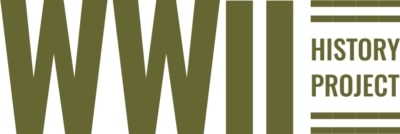
The World War II History Project
“Truth is incontrovertible, ignorance can deride it, panic may resent it, malice may destroy it, but there it is.”
2240 Encinitas Blvd. Suite D14 Encinitas, CA 92024 +1.760.452.7240

Becklingen Cemetery
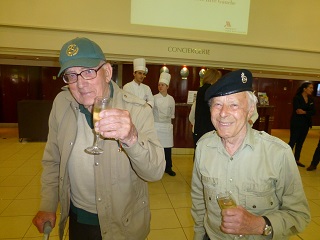
Lest We Forget
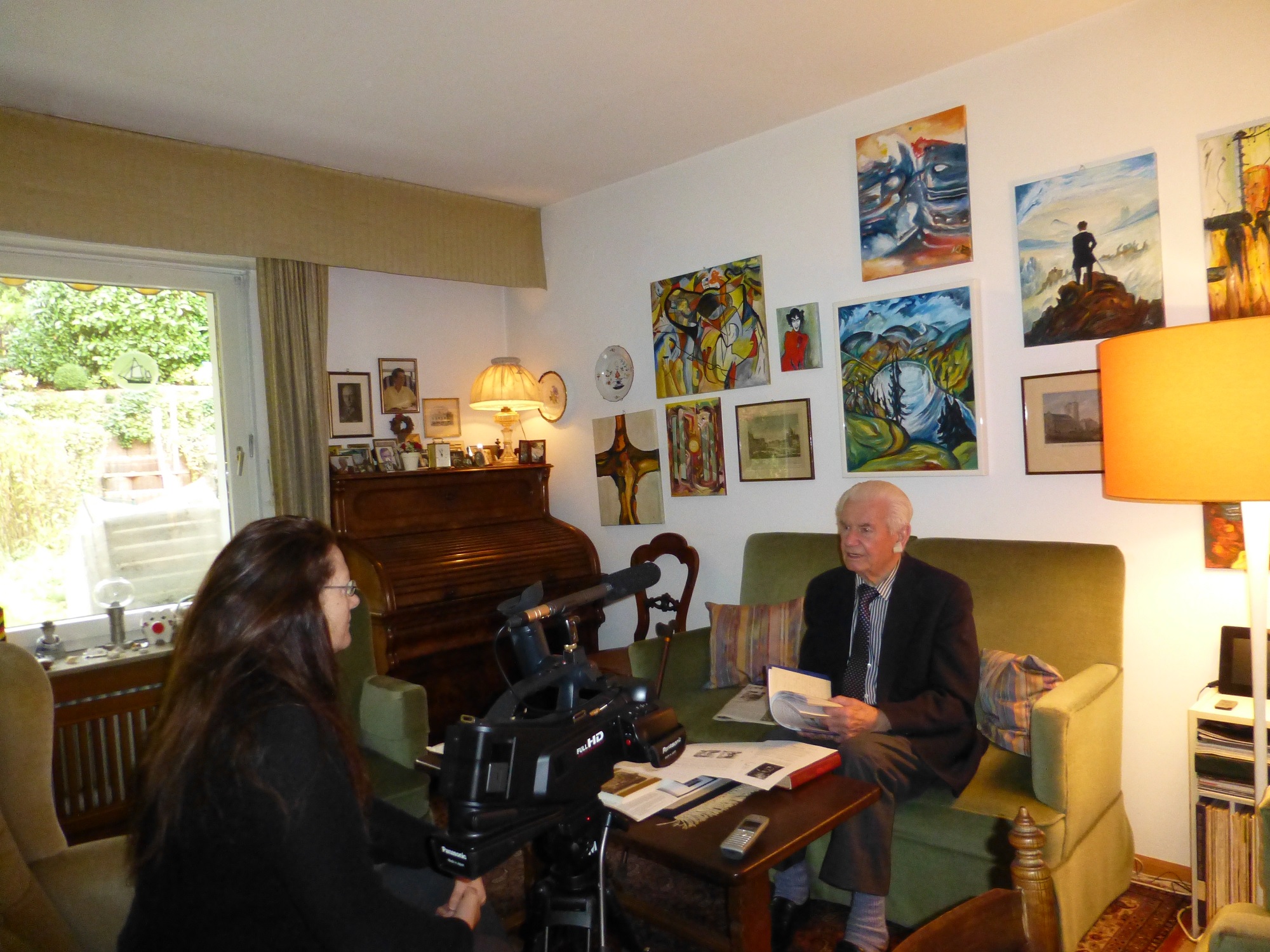
Stalingrad Survivor
Individual participation.
Personnel files, flight records, missing air crew reports, escape and evasion reports, death files, and much more....
Military Unit Records
Bomber and Fighter Mission Reports, Army After Action Reports, Unit Morning Reports, Naval Deck Logs....
Specialized Records
Counterintelligence, Resistance, POW Camps, War Crimes, Gestapo and Nazi Party Membership, Secret Weapons....
Family Mysteries
We can help you find a combination of individual participation, unit, and specialty records for your family member
Custom Tours
We will take you to the battlefields where your family member fought, hospitals where they recovered, and cemeteries where those who paid the ultimate sacrifice are honored
Historical Assistance
We assist you in understanding the documents we find
We are specialists
Our team speaks English, German, French, Flemish and Yiddish. We have decades of experience:
– conducting oral interviews with World War II veterans,
– touring WWII battlefields, crash sites, and historical locations,
– tenaciously uncovering WWII files for our clients in the:
- US National Archives in College Park, MD
- US Air Force Historical Research Agency in Maxwell AFB
- US Library of Congress
- Smithsonian Air and Space Museum Archives
- UK National Archives in Kew, London
- German National Military Archives in Freiburg
- Berlin Document Center
and regional archives throughout the US and Europe
Testimonials

Aaron Miller
It is no exaggeration to say that I am very lucky we met. As a PhD candidate with no experience in archival research, you shaped both my experience at the Archive, as well as my current research efforts. Not only did you offer critical insight as an experienced researcher, but you also took time away from your own efforts to introduce me to people and explain the inner workings of NARA II. Because of your expertise and generosity, I was able to navigate the body of documentary records within the National Archives and find the information I was looking for. Importantly, your assistance on my first day at NARAII allowed me to find the materials necessary to convince my committee that I had a viable dissertation -I will also note that your tutelage allowed me to teach a cohort of PhD-candidates here at Princeton how to conduct research at the Archives. Thank you.
Dr. Andrew Arthy
I've known Heather since 2013 through her work with The World War II History Project. In that time she has been an incredibly diligent military and oral historian, going to great lengths to contact and meet with surviving veterans of the Second World War. Given how few of those men and women remain, the work she is doing is of immense value to scholars of that conflict. She has demonstrated an excellent ability to track down these service personnel and conduct fascinating and revealing interviews with them. Her work ethic is impressive, and it's been a pleasure to help her with The World War II History Project.
Dr. Ingo Zechner
Many thanks for your knowledgeable, meticulous, and efficient work which was of great help to us and our project!
Our Veterans
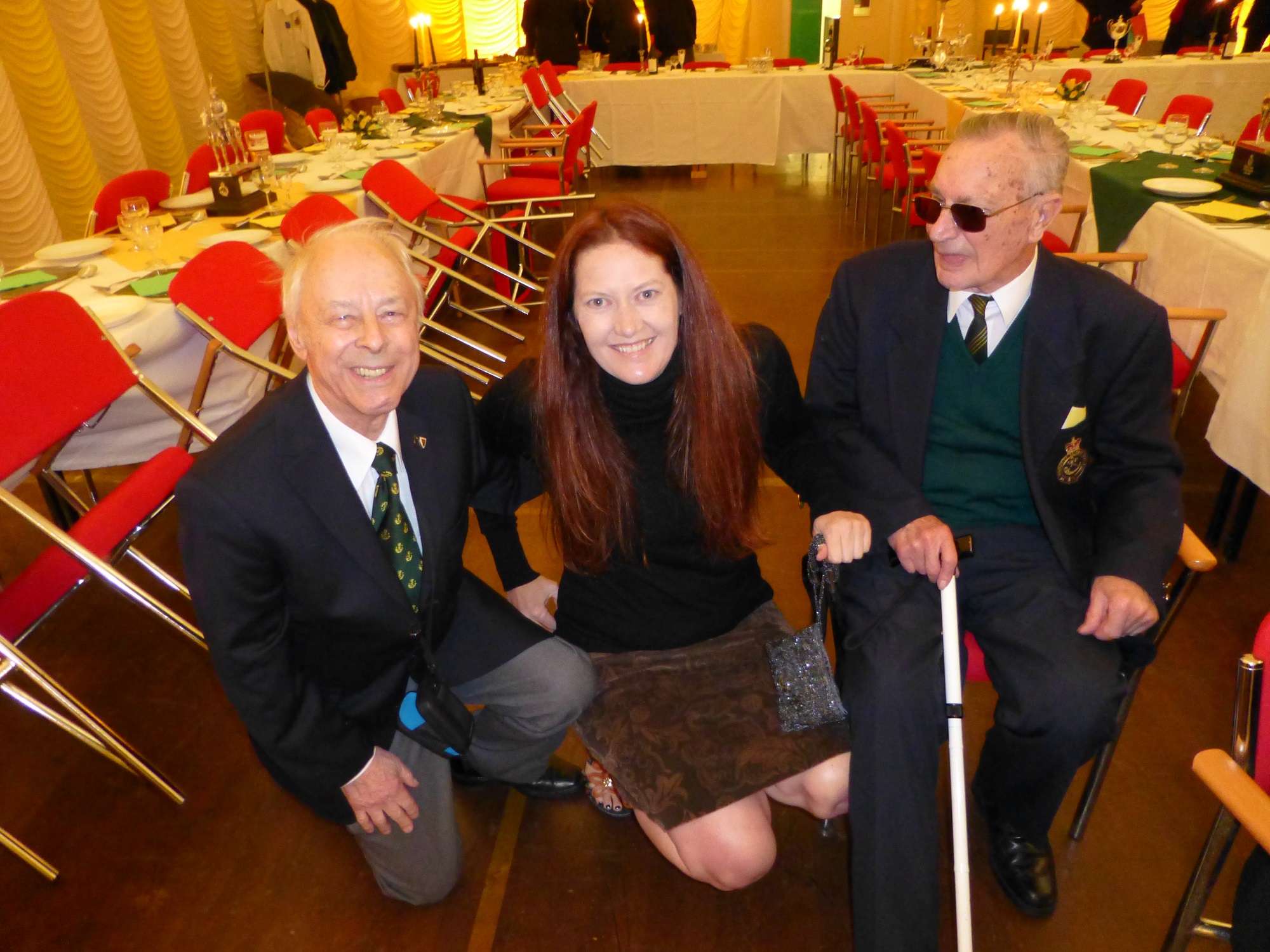
Charley Koenig & Bert Jenkins
Attending a Sherwood Rangers Tank Regiment Regimental Dinner in Nottingham with the last remaining British veterans and their German member, Charley Koenig
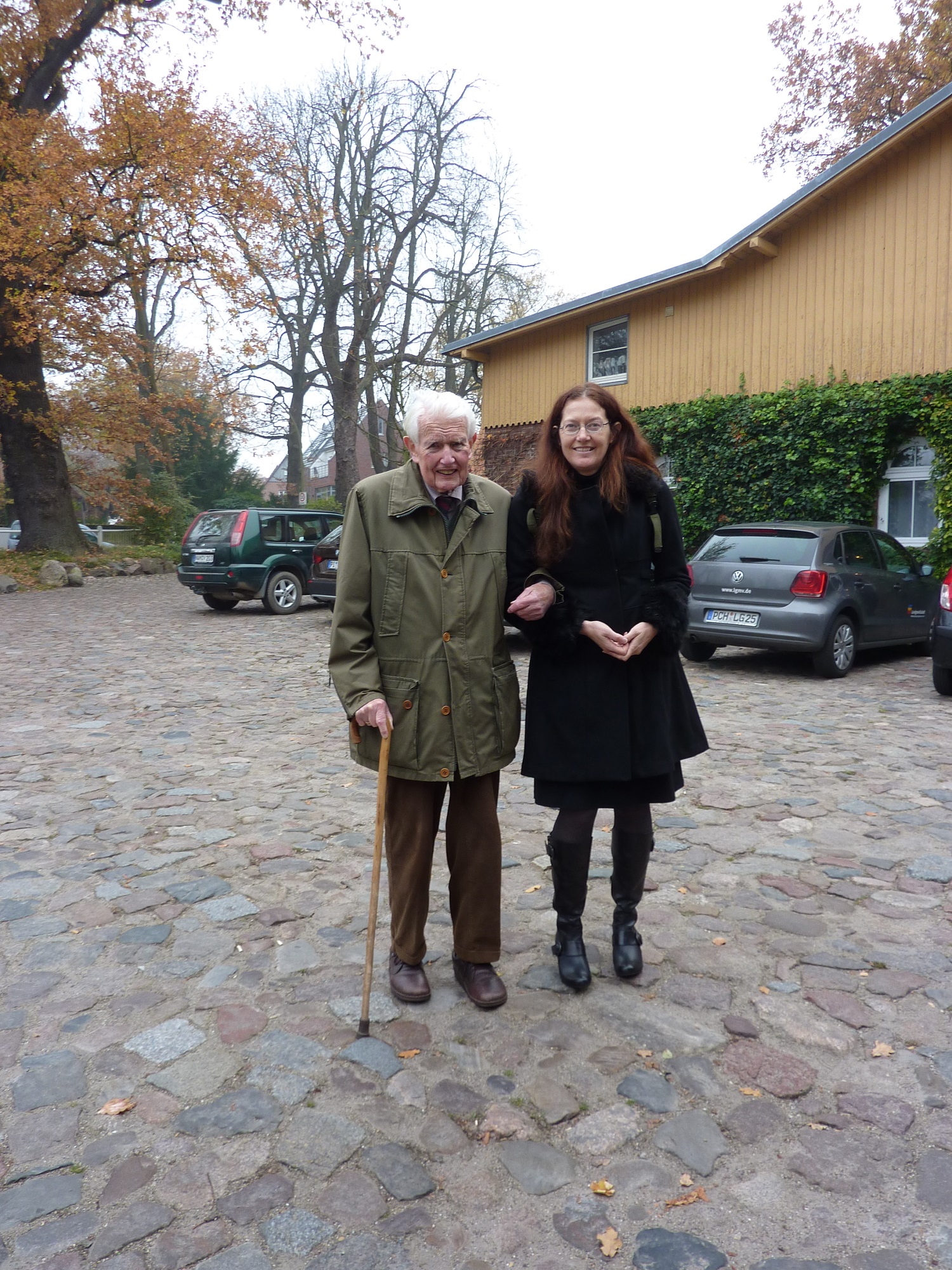
Christian von Lucke
Escorting Christian, a 16th Panzer Division Stalingrad veteran, to lunch in Hamburg
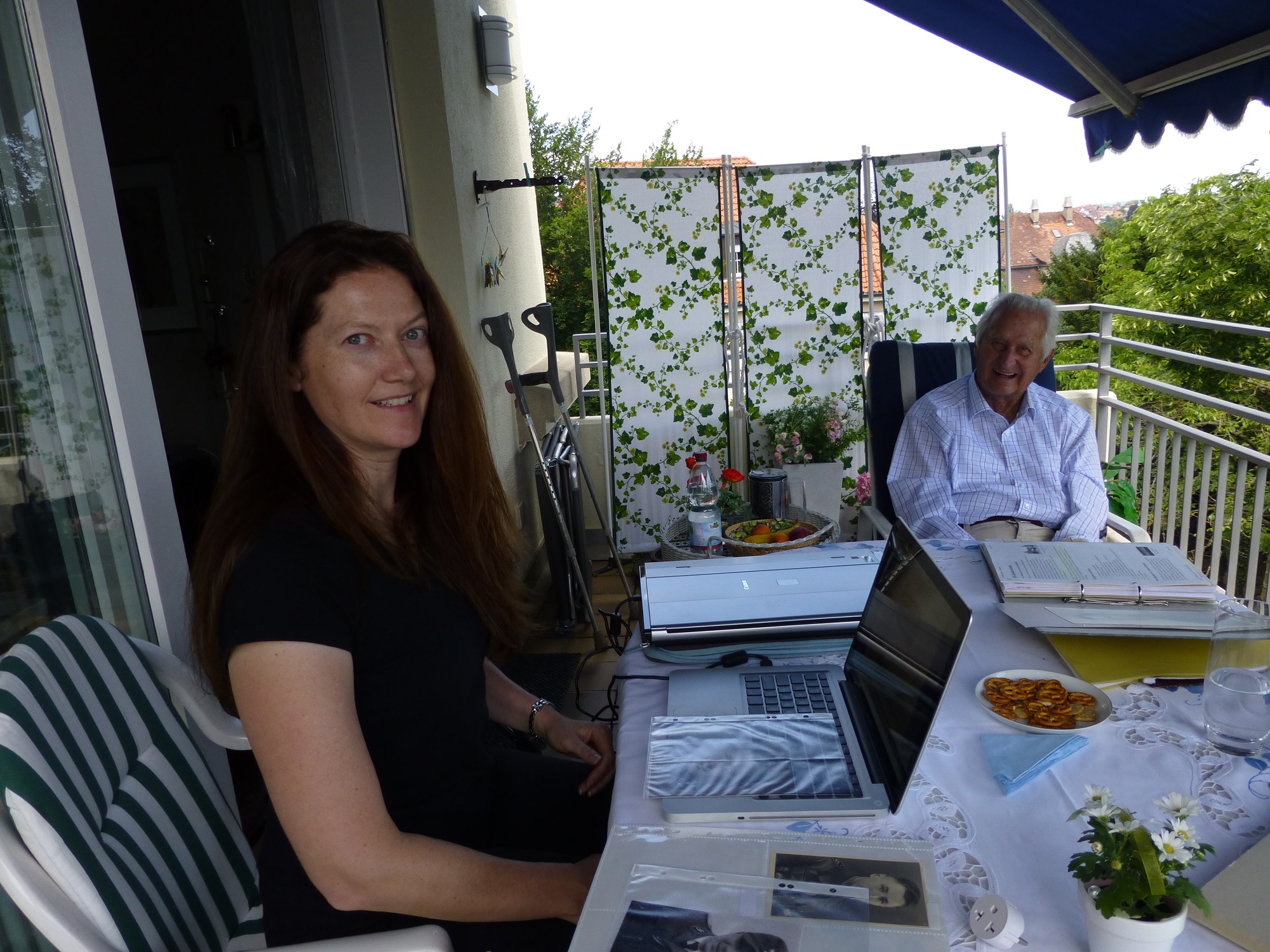
Panzer Commander Egmont Fortun
who fought under Rommel with 7th Panzer Division in France, and then through the Soviet Union, and after being wounded just outside of Moscow, with the 21st Panzer Division in Africa

Understanding the Scope of World War 2
World War 2 wasn’t just a series of battles. It was a global phenomenon that reshaped nations, cultures, and the very fabric of human civilization. To fully grasp the magnitude of this war, students must appreciate the broader picture— from the major events to the aftereffects that ripple into today’s geopolitics.
World War 2 wasn’t just a series of battles or mere dates in history textbooks; it was a transformative epoch that shifted the 20th century. It was a global phenomenon that reshaped nations, cultures, and the very fabric of human civilization.
The stories from the frontlines, while pivotal, are just one dimension. From the intense political maneuvers and espionage missions to the socio-cultural transformations that ensued, there’s an ocean of World War 2 topics to explore.
In my experience, many students get so engrossed in the prominent WW2 research topics that they sometimes overlook the profound societal and technological shifts. The war expedited technological advancements, leading to innovations and even the space race.
Choosing the Right Topic for WW2 Research Paper
The first and perhaps most crucial step is selecting your focus. While there are countless World War 2 consequences topics to explore, choosing one that genuinely piques your interest is essential. From the intricacies of military strategies to the socio-cultural impacts, every WW2 topic offers a unique perspective. According to general IB criteria, aligning your genuine interests with academic standards often yields the best results.
Going Thorough Research for WW2 Research Paper
As I know, thorough research forms the backbone of any compelling research paper. Primary sources, firsthand accounts, and authentic records give a factual foundation. On the other hand, secondary sources provide analysis and interpretation. Be sure to frame some pertinent research questions about World War 2 to guide your exploration.
The list of similar articles:
Essay on Military Leadership
Veterans Essay Ideas
Veterans Day Essay Tips & Tricks
Military Topics for Research Paper
How to write an essay on army values, making a strong thesis statement for ww2 research paper.
Every IB student understands the weight of a robust thesis statement. Your thesis should reflect your chosen WW2 research topic and provide a fresh viewpoint. For instance, if your focus is on WW2 project topics related to technological advancements, your thesis might revolve around how these innovations changed the course of battles.
Structuring World War 2 Research Paper
A clear structure is paramount. Start with an engaging introduction where you present your World War 2 research topic. In the body, dissect key events, figures, or consequences in detail. And in conclusion, tie all your findings together, highlighting the broader implications.

Revising and Proofreading World War 2 Research Paper
As any seasoned writer would advise, revisiting your work with fresh eyes can make a difference. It ensures factual accuracy, logical flow, and overall coherence.
Top WW2 Research Paper Topics to Consider
Drawing from my extensive background in the subject, and with a little help from our team of expert History essay writers , here are some intriguing topics to ignite your curiosity:
- Military Strategies & Tactics: The Art of War.
- The Political Landscape: Alliances and Treacheries.
- Women in WW2: Beyond the Home Front.
- Technology’s Role: From Enigma to the Atomic Bomb.
- The War’s Aftermath: The Dawn of the Cold War.
- WW2’s Influence on Modern Pop Culture.
- Propaganda’s Power: How Nations Were Moved.
- World War II’s Unsung Heroes.
- The Evolution of Warfare: Comparing WWI and WWII.
- The Human Cost: Stories Beyond the Battlefield.
- The Home Front: Mobilizing Industries and Morale.
- Resistance Movements: The Underground War. Tales of bravery from resistance fighters across Europe.
- The Holocaust: The Darkest Chapter. The most harrowing part of WW2.
- World War 2 and the Global Economy. Economic shifts and consequences that laid the foundation for today’s economic order.
- Naval Warfare: The Battle of the Seas. Understand the strategic importance of naval dominance.
- Intelligence and Espionage: Secrets of the War. Stories of spies, their tactics, and their role in the war.
- Asian Theatre: Japan’s Expansion and its Impact. Delving into the Pacific battles and Japan’s wartime strategy.
- The African Front: The War Beyond Europe’s Borders. Exploring the lesser-known battlegrounds.
- Children of the War: Youth Amidst Conflict. The tales of the youngest affected by the war.
- Medical Advancements and Challenges. How did medicine evolve in the cauldron of WW2?
- Prisoners of War: Life in Captivity. Personal accounts of soldiers taken captive.
- Aerial Battles: Dominance in the Skies. Chronicling key air battles and their significance.
- The Role of Artists and Writers in WW2. How did creatives contribute to the war effort?
- Allied Powers: Dynamics and Differences. Delving into the unity and tensions between allies.
- Decoding War Communications. Understanding wartime coding and the significance of breaking them.
Each of these topics not only represents an interesting WW2 topic but can lead to a nuanced understanding of the broader historical context. The depth and breadth of World War II offer countless avenues for study, and these topics are just the tip of the iceberg.
World War II remains an inexhaustible reservoir of research topics ripe for exploration. Tapping into this rich tapestry of events, characters, and consequences is more than just an academic exercise. It’s a journey into understanding the human spirit, resilience, and the complexities of global geopolitics. If ever you find yourself lost amidst the vast topics about World War 2, remember: it’s about finding a unique voice in the vast chorus of history.
In all other cases at Writing Metier , there is a team of writers who can help with World War 2 research papers . And always, always keep your passion for learning alive.
Free topic suggestions
Laura Orta is an avid author on Writing Metier's blog. Before embarking on her writing career, she practiced media law in one of the local media. Aside from writing, she works as a private tutor to help students with their academic needs. Laura and her husband share their home near the ocean in northern Portugal with two extraordinary boys and a lifetime collection of books.
Similar posts
Military essay topics.
Discover an Array of Engaging Military Essay Topics that will Ignite Your Curiosity
What is a Military Essay? Types, format and structure
What is a Military Essay? A military essay is a form of academic writing that examines different aspects of the military, including its history, strategy, operations, and societal influence. It allows students to delve into complex military topics and showcase their research and analytical skills.
How to write an Essay on Military Leadership?
Through a balanced narrative, we aim to unravel the essence of military leadership.
Army values, deeply entrenched in military ethos, serve as guiding beacons not just for soldiers but for society at large. These principles of loyalty, respect, and selfless service are more than mere words; they are the very foundation upon which harmonious societies can be built.
Military Ethics Paper Topics🎖️
Explore the intricate ethical dimensions within the military while selecting an engaging paper topic. Analyze the foundational principles guiding ethical decision-making and examine current dilemmas that challenge military professionals.
Military Topics for Research Paper - article offers students a guided exploration into the undercurrents of these pivotal regions, inviting fresh perspectives and deep understanding. Key global regions with this guide.
Veterans Day Essay Tips & Tricks 🎖️
Veterans Day, commemorating the courage and sacrifices of those who've served, ensuring a legacy of honor and freedom for future generations.
The heroics and sacrifices of veterans through writing can be a profoundly enlightening endeavor. In the 'Veterans Essay Ideas', we explore a plethora of topics.
War Essay Titles
Choosing topics from the monumental World Wars to the intricacies of modern military strategies, these titles serve as a gateway to unravel the complex nature of conflict.
We rely on cookies to give you the best experince on our website. By browsing, you agree to it. Read more

World War II: American perspectives
- American perspectives
- Foreign perspectives
- WWII: Databases
- WWII: Books
- Battle of Britain
- Library home page
Choosing a topic
- Research Starters
- World War II - History.com
- World War II: Newspapers.com
- World War II Research Essay Topics
Overview websites
- Guide to WWII Materials A compilation of online resources available from the Library of Congress and from external websites.
- Learn More about World War II A long bibliography of websites and books, to support the PBS documentary The War. There are a number of links to veterans' organizations at the bottom of the page.
- Military Resources: World War II Links to a number of online resources, from the National Archives.
- Refseek Refseek is a document search engine that locates otherwise hard-to-find websites and documents.
- The War in Europe by the Numbers Look here for statistical information about different aspects of the war.
- The War in the Pacific by the Numbers Data about the war in the Pacific, from the National WWII Museum.
- World War II Resources A collection of links to primary and secondary sources from Ibiblio.
Primary sources
- American Presidency Project A comprehensive collection of presidential papers, speeches, executive orders, etc. from President Washington through the current president.
- America on the Homefront Large collection of documents, images and audio files from the National Archives.
- Digital Collections of the National WWII Museum Photos and short video memoirs, from the museum located in New Orleans.
- Digital Public Library of America Large index of digitized materials from many collections and institutions.
- Eyewitness to World War II Memoirs, documents, radio broadcasts, etc. from the US and abroad during World War II.
- Franklin: Digitized Collections Primary source documents from the FDR Presidential Library and Museum.
- HyperWar Links to primary source documents from American and Great Britain.
- The Institute on World War II and the Human Experience Links to digitized collections of letters and memoirs from American servicemen and servicewomen.
- Internet Archive Large collection of historic images, text, sound files and video/film.
- Japanese American Relocation Digital Archives Primary sources related to Japanese internment.
- LoC: World War II Resource Guide The Library of Congress collection of a wide variety of materials related to World War II.
- National Archives World War II Records Collection of primary sources related to WWII from the National Archives.
- On the Homefront Posters and illustrations from WWII, compiled by the Library of Congress.
- Political cartoons research guide A link to the Political Cartoons research guide. Look for cartoons in the relevant time period.
- Roosevelt: A Call for Sacrifice The full text of Franklin D. Roosevelt's April 1942 speech.
- A Visual History: 1940–1963 : Political Cartoons by Clifford Berryman and Jim Berryman Cartoons illustrating issues during WWII and the early Cold War.
- Words of Peace, Words of War Treaties, declarations, words of surrender, etc., organized by year.
- World War II (Docs Teach) A collection of primary sources and lessons to teach analysis of these sources.
- World War II by the Numbers Statistical data on the war.
- World War II Documents A collection of primary source documents from the Yale University Avalon Project.
- World War II Sourcebook Documents from before, during and after World War II. Includes materials from Europe, Asia and the United States.
Jewish immigration to the US
- How Many Refugees Came to the United States from 1933-1945? Immigration data from the US Holocaust Memorial Museum
- Immigration Policy in World War II Data from the Gilder Lehrman Institute.
- Jewish Virtual Library Background information and current news about Judaism and Israel.
- Jewish Women's Archive Use this encyclopedia to find information about Jewish women authors.
- A Ship of Jewish Refugees Was Refused U.S. Landing in 1939 Background information about the St. Louis.
- United States Holocaust Memorial Museum Information about the Holocaust from the museum in Washington DC.
- Voyage of the St. Louis Primary and background information.
Atomic bomb
- Atomic Bomb and the End of WWII A collection of primary sources from the National Security Archive.
- Hiroshima and Nagasaki Large collection of documents related to the Trinity project and later testing of nuclear weapons. Includes government documents, photographs, data charts, and video footage.
- Hiroshima Peace Site Website for the Hiroshima Peace Memorial Museum.
- Tale of Two Cities US War Department footage of the bombings of Hiroshima and Nagasaki.
United Nations
- Formation of the United Nations Overview information from the US Department of State.
- History of the United Nations An overview of the origination of the UN, with links to important documents.
- UN History Project Educational resources for researching the history of the United Nations, developed by educators at Harvard University.
- United Nations Oral History Audio interviews and transcripts of memoirs important contributors to the work of the UN, including people who attended the 1945 San Francisco Conference.
- United Nations Documents Links to primary sources, from Yale's Avalon Project.
- Dr. Seuss Went to War Political cartoons drawn by Dr. Seuss during World War II.
- Powers of Persuasion A collection of WWII poster art from the National Archives.
- World War II Poster Collection Images from a Northwestern University collection.
African Americans in WWII
- Breath of Freedom A 2014 Smithsonian Channel television program about the post-war civil rights experiences of African Americans, available through a number of TV and online subscriptions.
- History of Black Women in WWII Information from the National Women's Memorial.
- Pictures of African Americans During World War II Images from the National Archives.
- Tuskeegee Airmen Documents and papers about the famed group.
- Why African-American Soldiers Saw World War II as a Two-Front Battle An article from Smithsonian Magazine.
Women in WWII
- Experiencing War: Women at War Audio and video interviews of women who participated in four different wars, including WWII.
- The History of Wartime Nurses Describes the roles of nurses serving in combat arenas from Revolutionary times through the Vietnam War.
- Women Airforce Service Pilots Read letters written by female US military pilots during WWII.
- Women of World War II Describes the roles of women in a variety of military branches.
Mexican Americans in WWII
- Fighting on Two Fronts: Latinos in the Military An article from the National Park Service.
- Hispanics in Service Library of Congress collection of hispanic veterans' narratives.
- Hispanics in the U.S. Army Historical information from the Army website. Scroll down to WWII.
- Mexican American Soldiers In World War Two Fought Abroad To Win At Home An article from the Huffington Post with links to data.
- US Latino & Latina World War II Oral History Project This is an archived copy of an online project. Not attractive but the links work.
- Next: Foreign perspectives >>
- Last Updated: Mar 1, 2023 11:45 AM
- URL: https://library.menloschool.org/ww2

- Customer Reviews
- Extended Essays
- IB Internal Assessment
- Theory of Knowledge
- Literature Review
- Dissertations
- Essay Writing
- Research Writing
- Assignment Help
- Capstone Projects
- College Application
- Online Class
World War 2 Essay Topics: 50+ Ideas and Examples for Your Paper
by Antony W
December 5, 2023
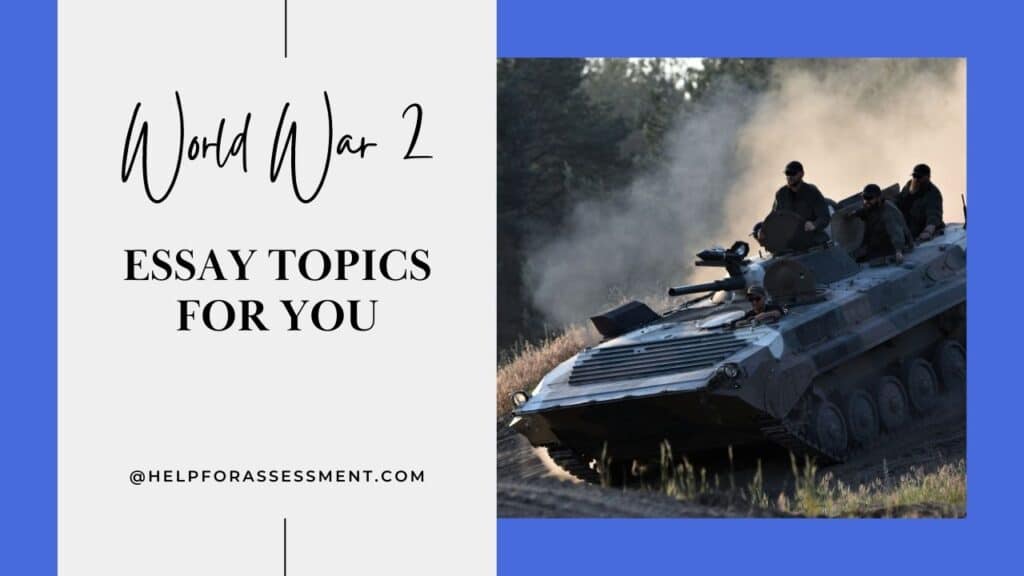
Perhaps the most difficult part about writing an essay on World War 2 is to find a title. Brainstorming ideas and doing preliminary research to determine if a topic is good can take a lot of time. To make the ideation process easier for you, we’ve put together a list of 50+ topics that you might love.
World War II is a broad subject. So you want to make sure you first read the assignment brief and narrow down your focus on a specific area that you can cover within the scope of the assignment.
Of course, a list of 50+ prewritten topics means you have an unlimited option when it comes to topic selection. Yet, given that you can cover only one topic at a time, it’s best to single out what topic would be best for you to explore and then develop it based on the assignment brief.
Key Takeaways
- While World War II is a broad area with hundreds of History essay topics , your focus should be on a specific topic that you can explore within the scope of the assignment.
- Choose a topic that you find fascinating, especially if falls within a theme that you’ve always wanted to explore.
- Refer to the assignment prompt if you’re in doubt about your topic, or seek guidance from your teacher for further clarity.
50+ Best World War 2 Essay Topics: 50+ Ideas for Your Paper
The following is a list of some of the best World War II topics for your next essay assignment:
Economy and Workforce Topics
The United States was already struggling to recover from the Great Depression, which means that World War II did have a severe effect on the economy and workforce of the states. Here are some topic ideas to consider.
- You can write an essay on how food packaging evolved during the war and the changes that occurred in advertisements.
- What were the newly created job roles, and who filled these new positions during the war
- Explain how the society reacted to the war’s propaganda, as well as the underlying reasons for these responses.
- How did Word War II alter the production of toys during the period that it lasted?
- What were the new products introduced that became part of popular culture during and after the war?
Culture and People Topics
Your essay can focus on the drastic changes to life after the United States of America got into World War II. From racism and civil rights to basic needs and resistance movements, here are some example topics to consider:
- What changes occurred in the rights of African-Americans during wartime?
- Did horses, dogs, birds, or other animals hold specific significance or functions in World War II?
- Was there a rise or decline in domestic violence cases during this period?
- Explain how the children of soldiers cope with the impact of the World War II.
- What changes did civilian fashion undergo during World War II and what were the impacts of the alterations?
- What do letters reveal about relationships, families, and gender roles during the World War II period?
- How was penicillin used, and was there any medical progress during and after the war?
Free Features

Need help to complete and ace your essay? Order our writing service.
Get all academic paper features for $65.77 FREE
Technology and Transportation Topics
World War II contributed quite significantly to the development of transportation and technology . This change the way news spread, how people entertained themselves, and the way human beings communicated. Here are some topic ideas that fit into this area:
- What advancements in transportation infrastructure emerged from wartime or postwar policies, specifically in bridges and roads?
- Explain how radio or other communication methods influence significant events.
- Write about the needs that drove the creation of folding motorcycles and why military motorcycles in use wide use by the government?
- State the technologies that originated from the war and explain their implementation after the World War II.
- Which TV shows drew inspiration from the war, and how accurate were they?
- Can we attribute the progress in jet engine technology to the World War II?
- How crucial was rocket technology during this period?
- Why and how did remarkable shipbuilding accomplishments occur during the war?
World War II Argumentative Essay Topics
An argumentative essa y topic on the Second World War requires you to take a side and use evidence, statistics, and reasons to defend that position. You’ll have to look at both sides of the arguments, but then use the strongest pieces of evidence to explain why you believe your take on the topic (or issue) is more believable than the other is. Here are some examples:
- Did the World War II even alter the global balance of power?
- Evaluate the roles played by nationalism, imperialism, and totalitarianism in causing WWII.
- Are there controversies surrounding the use of atomic bombs during the World War II?
- Look at the factors that facilitated the Holocaust on a massive scale during the Second World War.
- Did women have a strong contribution to the World War II and was their fight for equality during the time reasonable?
- Did propaganda affect public perception during the World War II?
- The World War II did not play a big contribution to the technological and scientific progress at the time.
- Was the internment of Japanese-Americans during World War II a violation of their civil rights?
World War II History Topics
- How did the Treaty of Versailles contribute to and influence the outbreak of World War II?
- Explain the factors that led to the ascension of Adolf Hitler and the Nazi Party.
- Assess the importance of the Battle of Britain in halting German advancement.
- What role did Winston Churchill play in guiding Britain through World War II?
- Examine the tactics and significant battles in the Pacific during World War 2.
- Analyze how resistance movements in occupied Europe contributed to the Allies’ success.
$4.99 Title page
$10.91 Formatting
$3.99 Outline
$21.99 Revisions
Get all these features for $65.77 FREE
About the author
Antony W is a professional writer and coach at Help for Assessment. He spends countless hours every day researching and writing great content filled with expert advice on how to write engaging essays, research papers, and assignments.

World War II
Best places to start, world war ii notes.
- Books & Films
- Journal Articles
- Primary Sources This link opens in a new window
- Special Topics This link opens in a new window
- Cite Sources
- Related LibGuides
- WWII Resources
- Encyclopedias & Databases
- Biographical Sources
- Chronologies & Maps
- Research Tips
- Salem History Online This link opens in a new window Full-text access to the Great Lives & Great Events Encyclopedias, which provide overviews of important events and major figures throughout history. Volumes begin with the ancient world and continue through the 20th century.
Provides information and insights into military conflicts, covering all time periods and regions. Includes essays, timelines, images, and primary sources.
- American National Biography This link opens in a new window Read biographies of presidents, military officers, secretaries of state, war correspondents and any other people who have shaped American history and culture.
- Oxford Dictionary of National Biography This link opens in a new window Read biographies of politicians, including prime ministers, military officers, and any other people who have shaped British history and culture.
- Salem History Online This link opens in a new window Provides overviews of the lives of major figures in world history throughout the twentieth century.
- United States Military Academy Atlases Includes atlases depicting individual battles from ancient times through modern Iraq.
- World War II Military Situation Maps "Contains maps showing troop positions beginning on June 6, 1944 to July 26, 1945. Starting with the D-Day Invasion, the maps give daily details on the military campaigns in Western Europe, showing the progress of the Allied Forces as they push towards Germany." (from Library of Congress)
Start with some background reading.
- Otherwise, identifying books and articles will take longer.
Tip: Use the links and books on this tab to help you locate names , dates , and keywords .
- Your research will be better and take less time!
- Use bibliographies to locate other books and articles.
- Watch out for authors and/or titles that are cited over and over; they may be important.
Important Names, Dates, & Facts
- World War II is also known as "the Good War"
- Presidents during the War -- Franklin Roosevelt, 1939 - April 1945; Harry Truman, April 1945 - 1952
- Bookends to US active involvement: 12/7/1941 - Pearl Harbor attacked by Japanese; Dropping of atomic bomb on Hiroshima (8/6/1945) and Nagasaki (8/9/1945)
- No armistice for WWII -- allies took the war into Germany to Hitler's front stoop and into Japan and drubbed both into submission
- V-E Day (Victory in Europe) = May 8, 1945
- V-J Day (Victory in Japan) = August 14, 1945
Important Associated Happenings
- Manhattan Project
- Internment camps for Japanese/Americans
- Nuremberg war crimes trials (also lesser publicized Japanese war crimes trials)
Important Outcomes/Changes because of the War
- United Nations
- Nationhood of Israel -- direct response to world reaction to Holocaust
- Nuclear age
- Integration of armed forces
- Women moved from the home to the work force -- effect on marriage, children, labor...
- Next: Books & Films >>
- Last Updated: Dec 1, 2023 8:19 AM
- URL: https://hbl.gcc.libguides.com/ww2
Your browser is not supported
Sorry but it looks as if your browser is out of date. To get the best experience using our site we recommend that you upgrade or switch browsers.
Find a solution
- Skip to main content
- Skip to navigation

- Back to parent navigation item
- Find resources
- Experiments and investigations
- Cross-curricular activities
- Meet the scientists
- Boost your knowledge
- Beyond the classroom
- Get funding
- About the RSC

- More from navigation items
Science ideas webs
- 3 The Victorians
- 4 The Stone Age
- 5 Maya and Aztecs
- 6 The Romans
- 7 Ancient Egypt
- 8 The Tudors
- 9 The Vikings
- 10 The golden age of Islamic science
- 11 World War II
- 12 Ancient Greece
World War II
- No comments
A web of suggested ideas for linking science with the topic World War II.
This web acts as a tool to support topic planning and the embedding of cross-curricular links. Each topic is split into three age ranges to cover different abilities.
Tha an goireas seo ri fhaotainn anns a’ Ghàidhlig cuideachd

Faigh tionndadh Gàidhlig .
If you need to link a specific area of science to a topic, then science ideas webs can be used to provide relevant, scientifically-accurate links. Alternatively, if you have more flexibility as to the science embedded, the science ideas webs provide a variety of possible biology, chemistry and physics links for you to choose from based on what fits best contextually.
World War II - science ideas webs
How to use science ideas webs, additional information.
The science ideas webs in this resource are licensed under an Attribution-NonCommercial-NoDerivatives 4.0 International licence . © Royal Society of Chemistry 2015, CC BY-NC-ND 4.0 .

The Victorians

The Stone Age

Maya and Aztecs

Ancient Egypt

The Vikings

The golden age of Islamic science

Ancient Greece
- Teacher notes
- Lesson planning
- Cross-curriculum
- Properties of matter
- Asking scientific questions
- Making predictions
- Designing experiments
- Observing and measuring
- Recording data
- Interpreting data
Specification
- 1. Appreciate how scientists work and how ideas are modified over time.
Related articles
Space: science ideas webs.
A web of suggested ideas for linking science with the topic space. You can learn history and science together with activities for different age groups.
The Victorians: science ideas webs
A web of suggested ideas for linking science with the topic the Victorians. You can learn history and science together with activities for different age groups.
The Stone Age: science ideas webs
A web of suggested ideas for linking science with the topic the stone age. You can learn history and science together with activities for different age groups.
No comments yet
Only registered users can comment on this article., more from primary science.

Catherine’s chemistry practical skills sessions
Find out how Catherine organised her chemistry practical skills sessions and get tips for applying to the RSC Primary Science Teaching Empowerment Fund

CPD support from the Primary Science Teaching Trust
Explore professional development resources, webinars and support from the Primary Science Teaching Trust.

STEM careers and skills activities
Five out of five
Introduce primary learners to STEM careers and encourage them to explore their own skills. Includes a game, colouring poster, fact files and teaching notes.
- Newsletters
- Find your local education coordinator
Site powered by Webvision Cloud

- Research Guides
- Schlesinger Library on the History of Women in America
- World War II
Women in the Armed Forces
- Nursing and the Red Cross
- Women in Government
- Women on the Home Front: Supporters of the War Effort and Advocates for Peace
- Women Abroad: Civilians, Correspondents, and Volunteers
- Women in the Work Force
- Wartime Correspondence
- Wartime Diaries
- Memorabilia & Realia
- WAVES Training at Radcliffe
- Research Tips
- Ask a Schlesinger Librarian
Images from Schlesinger Library

Get Started
Start your archival research on Women in World War II with this guide.
Use the menu on the left to view additional material related to this topic.
Many of our collections are stored offsite and/or have access restrictions. Be sure to c ontact us in advance of your visit.
A list of archival materials and collections related to women's service in the armed forces, both at home and abroad, during World War II.
- Jane Barton (1918-2005) Jane Barton attended officer training for the Women Accepted for Volunteer Emergency Service (WAVES) at Mount Holyoke College. She was stationed in Washington, D.C., where she coordinated housing for WAVES officers and oversaw public relations for the Potomac River Naval Command and the U.S. Naval Barracks. She was editor of two newsletters for WAVES personnel, The Havelock and Scuttlebutt , and in 1947 initiated the first reunion of WAVES personnel. She served in the U.S. Naval Reserve until 1968, where she trained women recruits and oversaw public relations in the Albany, New York, area. During her naval service, Barton rose in rank from an Ensign to a Commander. This collection includes correspondence, scrapbooks, clippings, printed material, radio scripts, photographs, Naval Reserve recruiting brochures, and issues of The Havelock and Scuttlebutt. The collection documents her years as a WAVES officer during World War II, her role in organizing later reunions of the WAVES, and her service in the USNR from 1948 to 1968.
- Ruth P. Boehner Ruth P. Boehner, a teacher from Webster, Mass., enlisted in the Women's Army Corps in 1943. This collection consists of a typed letter from Boehner describing her first months in the Women's Army Corps; also a note concerning Boehner's subsequent career.
- Nona Baldwin Brown (1918-2014) Nona Baldwin Brown received an advanced degree in journalism from Columbia University (M.S. 1940) and was immediately hired by the New York Times . Brown temporarily left her job and joined the Women Accepted for Volunteer Emergency Service (WAVES) in the United States Naval Reserve, serving from 1942 to 1945 as a public relations press officer. In 1944, she married Clinton Bleecker Duma Brown in New York City, both in their military uniforms. Brown left the WAVES and returned to the New York Times Washington Bureau in 1945.
- Bertha Marie Strittmatter Clark Corporal Bertha Strittmatter enlisted in the Women's Auxiliary Army Corps (WAAC), later known as the Women's Army Corp (WAC). She was stationed at Stout Field, Indianapolis, Indiana. Strittmatter was a columnist for Wactivities and the Fielder . This collection consists of When WAC Was a Dirty Word, a personal account of Strittmatter's experiences as a WAC. Anecdotes illustrate unfavorable attitudes toward WACs, problems they encountered in their personal and work lives, and how sentiments changed with increasing recognition of their contributions to the war effort.
- Winifred Quick Collins (1911-1999) Navy captain Winifred Quick Collins was commissioned as an ensign in the Women Accepted for Volunteer Emergency Service (WAVES) in August 1942, and in 1948 she was in the first group of women commissioned in the United States Navy. In 1957 she was appointed Chief of Naval Personnel for Women, the most senior position for which women were eligible; she was the only woman line officer with the rank of captain. She retired in 1962 and was active in a number of organizations, including the National Navy League, in which she was the first woman elected vice-president and director (1965).
- Ernestine R. Etienne (1921-1996) Ernestine R. Etienne was an African American member of the Women's Army Corps during World War II. Etienne, from New Roads, Louisiana, enlisted in the Women's Army Auxiliary Corps in Houston, Texas, on December 17, 1942, when she was 21 years old. She trained at Fort Des Moines, Iowa, and worked as a baker for the 1550th Station Complement at the Women's Army Corps facility at Fort Knox in Kentucky. This collection includes a service record book with entries from Etienne about her personal experiences, a United States Army Separation Qualification Record, and photographs primarily depicting African American military members.
- Vivian M. Gammons (1922-2000) Vivian M. Gammons lived in Quincy, Massachusetts, and joined the Women's Army Corp (WAC) in 1943. She served in France and was promoted to sergeant. The collection consists of a wooden WAC box with Okerfelt's name and identification number stenciled on it; letters to her, mostly from her boyfriend Joseph Wisnowski, a soldier stationed in the Pacific; photographs; and other materials from the war.
- Marjorie B. Healey Marjorie B. Healey served in Europe during World War II with the Army as a dietitian. This collection consists of letters, mostly to her parents, from Healey's service abroad.
- Harriet R. Hulett Harriet R. Hulett joined the Women's Army Auxiliary Corps (WAAC) in 1942 and was sent to Des Moines, Iowa, and Nacogdoches, Texas, for training. This collection consists of a (disassembled) scrapbook including WAAC brochures and memoranda, programs, photographs, postcards, and clippings.
- Katherine M. Keene (1919-2013) Katherine Mildred Keene enlisted in the U.S. Women's Army Auxiliary Corps (WAAC) in December 1942, and in the Women's Army Corps (WAC) in August 1943. From September 1943 to May 1945, she was stationed in London, England, working for the secret intelligence and research and analysis branches of the Office of Strategic Services (OSS). Following Victory in Europe Day, Keene became secretary to the head of the OSS Research and Analysis Branch in the European Theatre of Operations and served in briefly in Paris, France, before being stationed in Germany. She was demobilized in October 1945 and returned home to Seattle. This collection contains correspondence, diaries, photographs, a WAC uniform, and ephemera documenting Keene's service.
- Harriette Gould Myerson (b. 1919) Massachusetts native Harriette "Hat" Gould Myerson entered the Women's Army Auxiliary Corps (WAAC) in August 1942, reporting to the Training Center at Fort Des Moines, Iowa. In 1943, she went to Adjutant General's School at Fort Washington, Maryland, and after completing her training was sent to the Army Administration School in Richmond, Kentucky, to be a Classification and Assignment Officer. Myerson worked at various posts before she was discharged from the Army in 1946. She later attended Radcliffe College, graduating from the Management Training Program in 1947. This collection includes photographs, WAAC graduation programs, military decorations, correspondence between Myerson and fellow WAACs during World War II, and her military personnel file.
- Ruth Thompson Peirce (1911-1994) Peirce, a native of Boston, Mass., was recruited by the FBI in 1941 to work as an undercover agent. She joined the Women's Army Corps in August 1942 and was one of the first women intercept operators for the Boston Intercept Command. She was later stationed as a flight dispatcher in Bangor, Maine, and at Mitchell Air Force Base, Long Island, New York. She was discharged from the military in 1945. Throughout her life she retained an avid interest in women in the military, collecting clippings and other information on the subject.
- Radcliffe College Archives War Records This collection includes information about Radcliffe College students who served in the armed forces in World War II. It is arranged by class (1936-1943) and by individual, and includes clippings, photographs, certificates, newsletters, postcards, correspondence, and a reminiscence by Mabelle Gertrude Lutze (1983).
- Elizabeth Reynard (1898-1962) Elizabeth Reynard was assistant director of the Women Accepted for Volunteer Emergency Service (WAVES) during World War II. This collection includes correspondence, articles, reports, newsletters, manuals, photos, clippings, phonograph records, and other material reflecting Reynard's career in the Navy, including her assignments with the WAVES at WAVES training school, the Naval Training School, and on the U.S.S. Hunter. It also includes information about WAVES personnel and organization regulations, and about other units of military women in the U.S., Canada, and Great Britain.
- Josephine Biase Schinto [in Jeanne Schinto] Josephine Biase Schinto served with the Women Accepted for Volunteer Emergency Service (WAVES) during World War II. This collection includes documents and photographs pertaining to her service.
- Lavonne Shand (1910-1997) Lavonne (Howerton) Shand was a telephone operator in Longview, Washington, when her husband enlisted in the Navy in 1943. She signed on with the WAVES (Women Accepted for Volunteer Emergency Service) and was trained at the U.S. Naval Training School in the Bronx. Other postings were in Rhode Island; Milledgeville, Georgia; Camp Parks, California; and Camp Douglas, Utah. The collection consists of one scrapbook documenting her time in the WAVES and includes newsletters, programs, correspondence, photographs, clippings, cartoons, sheet music, and other memorabilia.
- Ruth Streeter (1895-1990) In 1943, Ruth Cheney Streeter became the first woman to attain the rank of major in the United States Marine Corps and became the first director of the United States Marine Corps Women's Reserve. She retired in 1945 as a colonel. This collection contains a typescript copy of History of the Marine Corps Women’s Reserve: A Critical Analysis of Its Development and Operation, 1943-1945 , written for the Department of the Navy by Streeter and Colonel Katherine A. Towle, assistant director and later director of the Marine Corps Women’s Reserve. Also included is a 1981 article about Streeter and two images from Streeter's self-published book, Tales of an Ancient Marine .
- Katharine Wolcott Toll (1913-2007) Katharine Wolcott Toll was a social worker and lieutenant in the WAVES (Women Accepted for Volunteer Emergency Service). While the bulk of her World War II material is housed in other archives, the collection does contain some correspondence pertaining to her service in the WAVES.
- United States Naval Reserve Women's Reserve The Women's Reserve of the U.S. Naval Reserve, formerly known as the Women Accepted for Volunteer Emergency Service (WAVES), was established on July 30, 1942. This folder contains biographies of Captains Winifred Redden Quick and Louise K. Wilde; a history of the WAVES; and papers of a conference of women District and Air Command Assistants.
- Dorothy Warren (1905-2008) Dorothy Warren served as Director of Training and Records Officer for the United States Women's Army Corps (1942-1946). The collection includes a copy of Dorothy Warren's birth certificate, resumes, letters of recognition, correspondence, and manuscripts of an article Warren wrote. Most of the collection relates to Warren's military service, and includes clippings, orders, memos, training manuals, photographs, and printed material.
- Hazel Hitson Weidman (b. 1923) Medical anthropologist Hazel Marie Hitson Weidman joined the Women Accepted for Volunteer Emergency Service (WAVES) in 1943; she attended boot camp at the U.S. Naval Training School at Hunter College, Bronx, New York. After taking aptitude tests during boot camp, Weidman was sent to the Atlanta Naval Air Station to learn to instruct pilots in celestial navigation, which encompassed instrumental flight and radio navigation. During the war she served at several naval air bases including the New Orleans Naval Air Station and the Alameda and Livermore Naval Air Stations in California. Included in the collection are love letters received by Weidman during World War II, which offer glimpses into the lives of Navy and Army pilots during the war and the difficulties of maintaining long-distance romances during wartime.
- Women's Overseas Service League Transcripts Founded in 1921, the Women's Overseas Service League (WOSL) is a national organization of women who served overseas with the United States Armed Forces. In 1983 WOSL began a project entitled "Carry On: An Oral History of Women's Overseas Service League Members." This collection consists of transcripts of seven interviews as well as one publication regarding the WOSL.
- Next: Women in the Armed Forces >>
- Harvard Library
- Last Updated: Jan 19, 2024 9:31 AM
- URL: https://guides.library.harvard.edu/schlesinger/WWII
Harvard University Digital Accessibility Policy
World War II Research Project
Please log in to save materials. Log in
- EPUB 3 Student View
- PDF Student View
- Thin Common Cartridge
- Thin Common Cartridge Student View
- SCORM Package
- SCORM Package Student View
- 1 - Modern World History / Fall 2021
- 2 - Modern World History / Fall 2021
- View all as one page
Modern World History / Fall 2021
World History
Unit 6 – The Second World War
Research Project
Thursday 10/28
The research project is a 3-part assignment. All of the details and explanations for each part are explained below. This assignment is to be completed individually.
I. Research Paper (250 Points)
Students will create and write a minimum 3-page research paper on a topic related to the Second World War.
Research papers should be typed and double-spaced with 12-point font and 1-inch margins all around. Proper spelling, grammar, capitalization, and punctuation is expected.
Research papers should include a title page that contains your name and topic. This does not count towards the required 3 pages.
Research papers must include a bibliography page that does not count towards the required 3 pages. All sources used in the research paper must be properly cited in the bibliography page. A minimum of 3 sources must be used.
Websites : Provide the address and a brief 2-3 sentence description of the website’s content. Penalties will be assessed for using sources that are not truthful and credible. Wikipedia is NOT permitted on this assignment. Be sure to ask if you are unsure if a particular website is appropriate or not.
Due Date and Late Papers :
All research papers are due on Thursday 10/28. Late papers will be penalized each day they are late. Papers may be emailed, shared on Google Classroom, or turned in as a hard copy.
Plagiarism :
All work must be in your own words. Any sign of plagiarism will result in a grade of 0/250 on the research paper.
Examples of plagiarism:
*Cutting and pasting
*Changing 1 or 2 words in a paragraph and cutting and pasting everything else
You must paraphrase all sources correctly. The best way to do this is to (1) read and study your sources and (2) rewrite your sources in your own words.
It is very easy to determine if plagiarism exists in any paper.
II. Power Point Presentation (250 Points)
Students will give a 5-7 minute power point or Google slides presentation on their research topic. Presentations will begin on Thursday 10/28 and continue until all students have presented. The order of the presentations will be determined randomly. If you are called to present and are not ready you will receive a grade of 0/250.
All power point presentations must be shared on Google Classroom.
Reading directly from your paper or power point will result in a low presentation grade. You may use note cards during the presentation, but you need to have a solid understanding of your topic throughout the presentation.
All presentations should include visual aids. Videos may be used, but they must be pre-approved before Thursday 10/28 and only a very small part of it may be shown. Successful power point presentations include lots of pictures and other visuals and less words.
III. Presentation Notes (100 Points)
All students are required to take detailed notes on each presentation (not counting your own.) Notes will be collected after the final presentation.
Research Paper Rubric
1. Content/material – 150 points
a. Thoroughness and accuracy of information researched
2. Sources – 50 points
a. Are the sources accurate and relevant to the topic?
b. Are there 3 sources used in the paper?
c. Are the sources properly cited at the end of the paper?
3. Mechanics – 50 points
a. 3 full pages
b. Double-spaced
c. 1-inch margins
d. 12-point font
e. Proper spelling/grammar/capitalization/punctuation
f. Paragraph breaks
g. Title page
Research Presentation Rubric
1. Content/material - 150 Points
a. Thoroughness and accuracy of information presented
2. Delivery – 50 points
a. Presenting material without reading directly from
paper, note cards, or power point
3. Visual aids - 50 points
a. Quality and quantity of visual aids
b. No spelling, grammar, capitalization, or punctuation
mistakes in the power point
Presentation Notes Rubric
1. Presentation notes - 100 Points
a. Do the notes contain the main points of each
presentation topic?
b. Are all of the presentation notes contained in the packet?
The Second World War Research Project Topics (1 st Block)
1) Battle of Stalingrad – (Jonah)
2) Japanese Americans and the Second World War / Executive Order #9066 – (Bush)
3) Operation Overlord / D-Day – (Fabi)
4) Battle of the Bulge – (Zainah)
5) Allied bombing raids over Dresden (Germany) & Tokyo (Japan) – (Caitlyn)
6) The Manhattan Project / Hiroshima & Nagasaki – (Tiffany)
7) Battles of Iwo Jima & Okinawa – (Gabe)
8) Battle of Midway – (Mackenzie)
9) Pearl Harbor / December 7, 1941 – (Kylie)
10) Battle of Britain / The Blitz – (George)
11) The Home Front (USA) - victory gardens, rationing, war bonds, Office of War Information (OWI) – (Omar)
12) Operation Husky / The Italian Campaign (1943) – (Connor)
13) Battle of Guadalcanal / Island Hopping – (Macy)
14) U.S. women and the Second World War / Rosie the Riveter – (Bella)
15) Operation Torch / North Africa (1942) – (Micaela)
16) Siege of Leningrad (Soviet Union) – (Jada)
17) African Americans and the Second World War (USA) / Tuskegee Airmen – (Angelina)
18) The Holocaust in the Soviet Union / Einsatzgruppen – (Jovany)
19) Spies and the Second World War (specific people, technologies and gadgets) – (Takari)
20) The Nanjing Massacre & Bataan Death March - Japanese treatment of civilian and military prisoners – (Alexa)
21) The Holocaust in Europe – focus on Nuremberg Laws, Kristallnacht and ghettos – (Brie’Ana)
22) The Holocaust in Europe – focus on The Final Solution and Nuremberg Trials – (Mason)
23) New inventions and technologies developed because of the Second World War – everyday products, medicines, etc. – (Hailey)
24) Battle and evacuation of Dunkirk (1940) – (Carson)
Attached Resources
Research Project Guidelines
File size 13.4 KB
World History - Unit 6 Research Project - Grading Rubrics
File size 12.4 KB
World History - Unit 6 - The Second World War Research Project Topics - 1st Block
File size 12.7 KB
- History Classics
- Your Profile
- Find History on Facebook (Opens in a new window)
- Find History on Twitter (Opens in a new window)
- Find History on YouTube (Opens in a new window)
- Find History on Instagram (Opens in a new window)
- Find History on TikTok (Opens in a new window)
- This Day In History
- History Podcasts
- History Vault
World War II
By: History.com Editors
Updated: March 13, 2024 | Original: October 29, 2009

World War II, the largest and deadliest conflict in human history, involved more than 50 nations and was fought on land, sea and air in nearly every part of the world. Also known as the Second World War, it was caused in part by the economic crisis of the Great Depression and by political tensions left unresolved following the end of World War I.
The war began when Nazi Germany invaded Poland in 1939 and raged across the globe until 1945, when Japan surrendered to the United States after atomic bombs were dropped on Hiroshima and Nagasaki. By the end of World War II, an estimated 60 to 80 million people had died, including up to 55 million civilians, and numerous cities in Europe and Asia were reduced to rubble.
Among the people killed were 6 million Jews murdered in Nazi concentration camps as part of Hitler’s diabolical “Final Solution,” now known as the Holocaust. The legacy of the war included the creation of the United Nations as a peacekeeping force and geopolitical rivalries that resulted in the Cold War.
Leading up to World War II
The devastation of the Great War (as World War I was known at the time) had greatly destabilized Europe, and in many respects World War II grew out of issues left unresolved by that earlier conflict. In particular, political and economic instability in Germany, and lingering resentment over the harsh terms imposed by the Versailles Treaty, fueled the rise to power of Adolf Hitler and National Socialist German Workers’ Party, abbreviated as NSDAP in German and the Nazi Party in English..
Did you know? As early as 1923, in his memoir and propaganda tract "Mein Kampf" (My Struggle), Adolf Hitler had predicted a general European war that would result in "the extermination of the Jewish race in Germany."
After becoming Chancellor of Germany in 1933, Hitler swiftly consolidated power, anointing himself Führer (supreme leader) in 1934. Obsessed with the idea of the superiority of the “pure” German race, which he called “Aryan,” Hitler believed that war was the only way to gain the necessary “Lebensraum,” or living space, for the German race to expand. In the mid-1930s, he secretly began the rearmament of Germany, a violation of the Versailles Treaty. After signing alliances with Italy and Japan against the Soviet Union , Hitler sent troops to occupy Austria in 1938 and the following year annexed Czechoslovakia. Hitler’s open aggression went unchecked, as the United States and Soviet Union were concentrated on internal politics at the time, and neither France nor Britain (the two other nations most devastated by the Great War) were eager for confrontation.
Outbreak of World War II (1939)
In late August 1939, Hitler and Soviet leader Joseph Stalin signed the German-Soviet Nonaggression Pact , which incited a frenzy of worry in London and Paris. Hitler had long planned an invasion of Poland, a nation to which Great Britain and France had guaranteed military support if it were attacked by Germany. The pact with Stalin meant that Hitler would not face a war on two fronts once he invaded Poland, and would have Soviet assistance in conquering and dividing the nation itself. On September 1, 1939, Hitler invaded Poland from the west; two days later, France and Britain declared war on Germany, beginning World War II.
On September 17, Soviet troops invaded Poland from the east. Under attack from both sides, Poland fell quickly, and by early 1940 Germany and the Soviet Union had divided control over the nation, according to a secret protocol appended to the Nonaggression Pact. Stalin’s forces then moved to occupy the Baltic States (Estonia, Latvia and Lithuania) and defeated a resistant Finland in the Russo-Finnish War. During the six months following the invasion of Poland, the lack of action on the part of Germany and the Allies in the west led to talk in the news media of a “phony war.” At sea, however, the British and German navies faced off in heated battle, and lethal German U-boat submarines struck at merchant shipping bound for Britain, sinking more than 100 vessels in the first four months of World War II.
World War II in the West (1940-41)
On April 9, 1940, Germany simultaneously invaded Norway and occupied Denmark, and the war began in earnest. On May 10, German forces swept through Belgium and the Netherlands in what became known as “blitzkrieg,” or lightning war. Three days later, Hitler’s troops crossed the Meuse River and struck French forces at Sedan, located at the northern end of the Maginot Line , an elaborate chain of fortifications constructed after World War I and considered an impenetrable defensive barrier. In fact, the Germans broke through the line with their tanks and planes and continued to the rear, rendering it useless. The British Expeditionary Force (BEF) was evacuated by sea from Dunkirk in late May, while in the south French forces mounted a doomed resistance. With France on the verge of collapse, Italy’s fascist dictator Benito Mussolini formed an alliance with Hitler, the Pact of Steel, and Italy declared war against France and Britain on June 10.
On June 14, German forces entered Paris; a new government formed by Marshal Philippe Petain (France’s hero of World War I) requested an armistice two nights later. France was subsequently divided into two zones, one under German military occupation and the other under Petain’s government, installed at Vichy France. Hitler now turned his attention to Britain, which had the defensive advantage of being separated from the Continent by the English Channel.
To pave the way for an amphibious invasion (dubbed Operation Sea Lion), German planes bombed Britain extensively beginning in September 1940 until May 1941, known as the Blitz , including night raids on London and other industrial centers that caused heavy civilian casualties and damage. The Royal Air Force (RAF) eventually defeated the Luftwaffe (German Air Force) in the Battle of Britain , and Hitler postponed his plans to invade. With Britain’s defensive resources pushed to the limit, Prime Minister Winston Churchill began receiving crucial aid from the U.S. under the Lend-Lease Act , passed by Congress in early 1941.
Hitler vs. Stalin: Operation Barbarossa (1941-42)
By early 1941, Hungary, Romania and Bulgaria had joined the Axis, and German troops overran Yugoslavia and Greece that April. Hitler’s conquest of the Balkans was a precursor for his real objective: an invasion of the Soviet Union, whose vast territory would give the German master race the “Lebensraum” it needed. The other half of Hitler’s strategy was the extermination of the Jews from throughout German-occupied Europe. Plans for the “Final Solution” were introduced around the time of the Soviet offensive, and over the next three years more than 4 million Jews would perish in the death camps established in occupied Poland.
On June 22, 1941, Hitler ordered the invasion of the Soviet Union, codenamed Operation Barbarossa . Though Soviet tanks and aircraft greatly outnumbered the Germans’, Russian aviation technology was largely obsolete, and the impact of the surprise invasion helped Germans get within 200 miles of Moscow by mid-July. Arguments between Hitler and his commanders delayed the next German advance until October, when it was stalled by a Soviet counteroffensive and the onset of harsh winter weather.
World War II in the Pacific (1941-43)
With Britain facing Germany in Europe, the United States was the only nation capable of combating Japanese aggression, which by late 1941 included an expansion of its ongoing war with China and the seizure of European colonial holdings in the Far East. On December 7, 1941, 360 Japanese aircraft attacked the major U.S. naval base at Pearl Harbor in Hawaii , taking the Americans completely by surprise and claiming the lives of more than 2,300 troops. The attack on Pearl Harbor served to unify American public opinion in favor of entering World War II, and on December 8 Congress declared war on Japan with only one dissenting vote. Germany and the other Axis Powers promptly declared war on the United States.
After a long string of Japanese victories, the U.S. Pacific Fleet won the Battle of Midway in June 1942, which proved to be a turning point in the war. On Guadalcanal, one of the southern Solomon Islands, the Allies also had success against Japanese forces in a series of battles from August 1942 to February 1943, helping turn the tide further in the Pacific. In mid-1943, Allied naval forces began an aggressive counterattack against Japan, involving a series of amphibious assaults on key Japanese-held islands in the Pacific. This “island-hopping” strategy proved successful, and Allied forces moved closer to their ultimate goal of invading the mainland Japan.
Toward Allied Victory in World War II (1943-45)
In North Africa , British and American forces had defeated the Italians and Germans by 1943. An Allied invasion of Sicily and Italy followed, and Mussolini’s government fell in July 1943, though Allied fighting against the Germans in Italy would continue until 1945.
On the Eastern Front, a Soviet counteroffensive launched in November 1942 ended the bloody Battle of Stalingrad , which had seen some of the fiercest combat of World War II. The approach of winter, along with dwindling food and medical supplies, spelled the end for German troops there, and the last of them surrendered on January 31, 1943.
On June 6, 1944–celebrated as “D-Day” –the Allies began a massive invasion of Europe, landing 156,000 British, Canadian and American soldiers on the beaches of Normandy, France. In response, Hitler poured all the remaining strength of his army into Western Europe, ensuring Germany’s defeat in the east. Soviet troops soon advanced into Poland, Czechoslovakia, Hungary and Romania, while Hitler gathered his forces to drive the Americans and British back from Germany in the Battle of the Bulge (December 1944-January 1945), the last major German offensive of the war.
An intensive aerial bombardment in February 1945 preceded the Allied land invasion of Germany, and by the time Germany formally surrendered on May 8, Soviet forces had occupied much of the country. Hitler was already dead, having died by suicide on April 30 in his Berlin bunker.
World War II Ends (1945)
At the Potsdam Conference of July-August 1945, U.S. President Harry S. Truman (who had taken office after Roosevelt’s death in April), Churchill and Stalin discussed the ongoing war with Japan as well as the peace settlement with Germany. Post-war Germany would be divided into four occupation zones, to be controlled by the Soviet Union, Britain, the United States and France. On the divisive matter of Eastern Europe’s future, Churchill and Truman acquiesced to Stalin, as they needed Soviet cooperation in the war against Japan.
Heavy casualties sustained in the campaigns at Iwo Jima (February 1945) and Okinawa (April-June 1945), and fears of the even costlier land invasion of Japan led Truman to authorize the use of a new and devastating weapon. Developed during a top secret operation code-named The Manhattan Project, the atomic bomb was unleashed on the Japanese cities of Hiroshima and Nagasaki in early August. On August 15, the Japanese government issued a statement declaring they would accept the terms of the Potsdam Declaration, and on September 2, U.S. General Douglas MacArthur accepted Japan’s formal surrender aboard the USS Missouri in Tokyo Bay.
African American Servicemen Fight Two Wars

World War II exposed a glaring paradox within the United States Armed Forces. Although more than 1 million African Americans served in the war to defeat Nazism and fascism, they did so in segregated units. The same discriminatory Jim Crow policies that were rampant in American society were reinforced by the U.S. military. Black servicemen rarely saw combat and were largely relegated to labor and supply units that were commanded by white officers.
There were several African American units that proved essential in helping to win World War II, with the Tuskegee Airmen being among the most celebrated. But the Red Ball Express, the truck convoy of mostly Black drivers were responsible for delivering essential goods to General George S. Patton ’s troops on the front lines in France. The all-Black 761st Tank Battalion fought in the Battle of the Bulge, and the 92 Infantry Division, fought in fierce ground battles in Italy. Yet, despite their role in defeating fascism, the fight for equality continued for African American soldiers after the World War II ended. They remained in segregated units and lower-ranking positions, well into the Korean War , a few years after President Truman signed an executive order to desegregate the U.S. military in 1948.
World War II Casualties and Legacy
World War II proved to be the deadliest international conflict in history, taking the lives of 60 to 80 million people, including 6 million Jews who died at the hands of the Nazis during the Holocaust . Civilians made up an estimated 50-55 million deaths from the war, while military comprised 21 to 25 million of those lost during the war. Millions more were injured, and still more lost their homes and property.
The legacy of the war would include the spread of communism from the Soviet Union into eastern Europe as well as its eventual triumph in China, and the global shift in power from Europe to two rival superpowers–the United States and the Soviet Union–that would soon face off against each other in the Cold War .

Photo Galleries

Sign up for Inside History
Get HISTORY’s most fascinating stories delivered to your inbox three times a week.
By submitting your information, you agree to receive emails from HISTORY and A+E Networks. You can opt out at any time. You must be 16 years or older and a resident of the United States.
More details : Privacy Notice | Terms of Use | Contact Us

- District 215 School Calendar
- Thornton Fractional South High School Parchment Transcripts
World War Two Research Project
Websites you may find useful for your world war ii research project, the united states holocaust memorial museum.
http://www.ushmm.org/learn/students This site contains information on many aspects of the Holocaust, including concentration camps, ghettos, and war criminal trials.
The Nizkor Project
http://www.nizkor.org/ Nizkor is a Hebrew word meaning "we will remember." This site has Holocaust information and some biographical information of major figures in the Holocaust.
Holocaust Cybrary
http://remember.org/ "Remember.org offers contributors (survivors, liberators, historians, and teachers )a place to connect and share the best research resources and stories through art, photography, painting, audio/video, and remembrance."
Yad Vashem Holocaust Resources
http://www1.yadvashem.org/yv/en/holocaust/index.asp The "world center for documentation, research, education and commemoration of the Holocaust".
BBC History: World War II
http://www.bbc.co.uk/history/worldwars/wwtwo/ Information about many different battles and strategies of the war, including D-Day and the outcome of the war.
History.com World War II information
http://www.history.com/topics/world-war-ii Lots of information about people in World War Two, like FDR, Hitler, and Mussolini, and information about popular themes, like Women in WWII.
Finding Magazine and Newspaper Resources for World War II
TF South subscribes to Ebsco, a database that contains articles from over 6,000 magazines and newspapers from around the world. Ebsco also contains biographies, maps, photographs, and more.
To search Ebsco, visit http://search.ebscohost.com and enter TF South's user name and password. This is NOT your ID number; if you cannot remember the user name and password please email the librarian or your English teacher. Once you are logged in, choose the Student Research Center to begin searching.
Tips for searching Ebsco:
- Do not type a sentence in the search box. Begin your search with one or two words, like "climate change" or "polar ice caps."
- The more words you type in the search box, the less results you will get.
- The result list will have a "Subject" box at the left. Clicking on any subject in the box will narrow your search to articles with only those topics.
- You can limit your search to only magazines, newspapers, etc. by using the tabs at the top of the screen.
Books on World War II
TFS has a large collection on World War II. You may view these titles by clicking below.
Click here for a list of books available through TF South's library
If you are interested in a book from a public library, please consider calling the library to check availability before making the trip to pick up an item.
Click here to search Lansing Public Library's catalog Click here to search Glenwood-Lynwood Public Library's catalog
You may also search the System-Wide Automated Network (SWAN) to find resources in Calumet City, South Holland, Chicago Heights, and many other Illinois libraries.
The Long-Run Impacts of Public Industrial Investment on Local Development and Economic Mobility: Evidence from World War II
This paper studies the long-run effects of government-led construction of manufacturing plants on the regions where they were built and on individuals from those regions. Specifically, we examine publicly financed plants built in dispersed locations outside of major urban centers for security reasons during the United States' industrial mobilization for World War II. Wartime plant construction had large and persistent impacts on local development, characterized by an expansion of relatively high-wage manufacturing employment throughout the postwar era. These benefits were shared by incumbent residents; we find men born before WWII in counties where plants were built earned $1,200 (in 2020 dollars) or 2.5 percent more per year in adulthood relative to those born in counterfactual comparison regions, with larger benefits accruing to children of lower-income parents. The balance of evidence suggests that these individuals benefited primarily from the local expansion of higher-wage jobs to which they had access as adults, rather than because of developmental effects from exposure to better environments during childhood.
We are grateful to Anna Aizer, Daniel Bernhardt, Allison Ehrich Bernstein, Mark Borgschulte, Eric Chyn, James Feigenbaum, Claudia Goldin, Bhash Mazumder, Walker Hanlon, Edward Glaeser, Nathaniel Hendren, Taylor Jaworski, Réka Juhász, Lawrence Katz, Patrick Kline, Dmitri Koustas, Brian Kovak, James Lee, Trevon Logan, Robert Margo, Nathan Nunn, Lowell Taylor, and seminar participants at Harvard University, UIUC, Purdue, the Upjohn Institute, CEU, JKU-Linz, Marquette, UCL, Berkeley, Texas A&M, University de Montreal, UVA, MIT, NIU, UBC, Iowa, BEA, Pitt, ITAM, Colmex, the Bank of Mexico, and participants at workshops and conferences between 2016 and 2023 for helpful comments. We are grateful to Sunny Liu and Andrea Atencio De Leon for excellent research assistance. The authors are grateful for generous support from the Washington Center for Equitable Growth and the W.E. Upjohn Institute. This report is released to inform interested parties of ongoing research and to encourage discussion. Any views expressed on statistical, methodological, technical, or operational issues are those of the author and not necessarily those of the US Census Bureau or the National Bureau of Economic Research. Results disclosed under DRB # CBDRB–FY24–0120.
MARC RIS BibTeΧ
Download Citation Data
Working Groups
More from nber.
In addition to working papers , the NBER disseminates affiliates’ latest findings through a range of free periodicals — the NBER Reporter , the NBER Digest , the Bulletin on Retirement and Disability , the Bulletin on Health , and the Bulletin on Entrepreneurship — as well as online conference reports , video lectures , and interviews .

World War II Research Paper

View sample World War II research paper. Browse other research paper examples and check the list of history research paper topics for more inspiration. If you need a history research paper written according to all the academic standards, you can always turn to our experienced writers for help. This is how your paper can get an A! Feel free to contact our custom writing service for professional assistance. We offer high-quality assignments for reasonable rates.
World War II (1939–1945) is regarded as the most widespread and deadliest conflict in human history. The war involved many nations and was fought on battlefronts in Europe, North Africa and the Middle East, Asia, and the Pacific. Led by Great Britain, the Soviet Union, and the United States, the Allies emerged victorious over the major Axis powers, Germany, Italy, and Japan.
Academic Writing, Editing, Proofreading, And Problem Solving Services
Get 10% off with 24start discount code.
World War II developed, in part, from the resolution of World War I. The peace conferences ending World War I resulted in a victor’s peace, and the vanquished harbored a sense of unfair treatment. The worldwide economic depression that began in the 1920s and continued into the 1930s helped bring about totalitarian regimes in Italy, Japan, and Germany. When democracies could not agree on a forceful, common program to halt aggression in the late 1930s, war began; it expanded with the inclusion of the Soviet Union in June 1941 and the United States in December 1941. When the fighting finally stopped in September 1945, tens of millions of people had died worldwide; the great European colonial empires in Asia and Africa soon would end; and two great powers, the USSR and the United States, found themselves unable to bridge the divide between them and plunged much of the world into a Cold War that lasted until the collapse of the Soviet Union in the late 1980s.
The Build-Up to World War II
On 18 September 1931, the Japanese Kwantung Army claimed that Chinese bandits had blown up the main track of the South Manchurian Railway, and, within a year, Japan seized control of Manchuria and created a puppet regime, Manchukuo. Japan then moved into Inner Mongolia and the Chinese provinces outside the Great Wall. In July 1937, minor hostilities expanded into war. Within several years, the conflict settled into a strange, three-sided affair, as Chinese Nationalist forces, Chinese Communist guerrillas, and the Japanese army faced one another, with Japan largely controlling populated eastern China and the Yangzi (Chang) River valley, the Communists in their base area at Yanan, and the Nationalists at Qongqing in Sichuan Province.
Japanese aggression in Manchuria may have encouraged other dictators to disregard the League of Nations and to challenge the entire Versailles Peace Treaty structure. In January 1933, Adolf Hitler (1889–1945) became chancellor of Germany, and he expanded the army and navy, established an air force, and reoccupied the demilitarized Rhineland without serious protest from France or Great Britain. In March 1938, Hitler forced a unification of Germany and Austria—the Anschluss—and in September 1938 signed a peace accord with France and Great Britain that handed him the Sudetenland of Czechoslovakia. In March 1939, German forces seized Memel in Lithuania and took control of the remainder of Czechoslovakia. During the summer of 1939, France and Great Britain approached the Soviet Union to assure Poland’s territorial integrity, but the USSR shocked the world when it signed a treaty with Nazi Germany in late August.
Hostilities Begin
Hitler turned to war. On 1 September 1939, the Germany army unleashed a blitzkrieg against Poland, crushing the Polish army in three weeks. After a winter pause, Germany attacked Norway and Denmark on 9 April 1940, securing Norwegian ports and Swedish iron ore shipments. On 10 May 1940, Germany threatened a wheeling movement through the Low Countries and then struck through the supposedly impassable Ardennes forest, unleashing its panzer forces behind the advancing army, driving to the English Channel in several weeks. Only the valiant effort of British seamen lifting more than 300,000 British and Allied soldiers from Dunkirk prevented a complete German victory. Germany turned south against France and forced the French surrender. Hitler apparently wanted to invade Great Britain, in Operation Sea Lion, and the Luftwaffe fought for control over the skies of Britain. Germany’s air force was designed for tactical support of advancing ground forces and not for a strategic air campaign, and it changed objectives too often—from coastal radar stations to fighter air bases to industrial factories, to terrorizing cities. By late summer 1940 the air offensive had failed. Strangely, from late summer 1940 until spring 1941, the German army launched no new offensives; this perhaps represented a major opportunity lost.
Germany next turned east. On 7 April 1941, Germany attacked Yugoslavia and Greece, and quickly conquered both countries. On 22 June 1941, Hitler sent more than 3 million German troops; 3,300 tanks; 7,700 artillery pieces; 2,500 planes; and forces from satellite countries into the Soviet Union in Operation Barbarossa. Germany lacked accurate information on its enemy and greatly underestimated the challenge. But, in early summer, it appeared Germany would land the knockout blow: as its Army Group North drove on Leningrad, Army Group Center pulled off several huge encirclements of Soviet troops on the way to Moscow, and Army Group South neared Kiev. In late summer, the troops rested, and Hitler ordered the panzer forces of Army Group Center to turn north and south to help these peripheral drives. Turning south, tank forces of Heinz Guderian helped surround 665,000 Soviet troops near Kiev, the largest prisoner-of-war capture in history. When Germany resumed the advance on Moscow, the Soviet Union was ready. Operation Typhoon failed within sight of the Kremlin, and the Soviets counterattacked, catching the German army desperately unprepared. When the Soviet attack petered out in late winter, Germany had suffered grievous losses, and it seemed the Soviet Union could survive.
World War II in the Pacific
The Japanese defeat by the Soviets at the Battle of Nomonhan (Khalkin Gol) on the Mongolian border in August 1939 caused Japan to look south for raw materials; Japanese military leaders settled on a centrifugal offensive centered on the destruction of the U.S. Pacific Fleet at Pearl Harbor, Hawaii. On 7 December 1941, Japan attacked, and thereafter gained a series of striking victories, including capturing Hong Kong, the Malay Peninsula, and the British stronghold of Singapore, the Mariana and Gilbert Islands, the Philippines, Borneo, the Dutch East Indies, and other island groups to secure a vast resource area and territory behind which to defend these gains.
Japanese leaders, however, suffered from “victory disease,” and instead of building up their defenses in depth to withstand the American counterattack, they continued their offensive. They tried to isolate Australia and threaten India. The result was the fl awed Japanese attack against Midway in early June 1942, which led to the destruction of four fleet carriers, fatally weakening the Japanese navy.
Soviet Union Fights Back
Hitler returned to the offensive on the eastern front in summer 1942, but only had strength to attack to the south, aiming for Stalingrad and Soviet oil facilities by the Caspian coast. The distances exceeded German logistical capacity, and General Friedrich Paulus made a fateful decision to commit the German Sixth Army to a fight for Stalingrad. Under General Vasili Chuikov, the Soviet Sixty-second Army engaged in a valiant, desperate defense featuring house-to-house and even floor-to-floor resistance.
As the battle for Stalingrad raged from summer into the fall of 1942, General (later Marshal) Georgi Zhukov planned for a riposte, positioning vast Soviet forces on the vulnerable flanks of the German position at Stalingrad; the Soviets intended to crash through Romanian and Hungarian positions, race around the German Sixth Army and Fourth Panzer Army, and effect a double envelopment. The Soviets struck on 12 November, and several days later the spearheads met at Kalach and cut off the Germans; in early February 1943, the last survivors surrendered. The Soviets followed this victory with an offensive that pushed the Germans out of Caucasia.
When the spring thaw halted operations, there was a bulge into German defenses around Kursk, and Hitler planned for a double envelopment to destroy Soviet positions after which, presumably, he would go on the defensive. But Hitler delayed the start of Operation Citadel many times, waiting for the new, heavy German tanks, and this delay allowed Zhukov to plan for the expected German advance. The greatest tank battle in history began on 5 July 1943, and the German pincer effort from the north quickly stalled; however, the attack from the south, featuring the cream of the German ground forces, made some headway before Hitler suspended offensive operations owing to the Allied invasion of Sicily. Thereafter, the Soviets seized the initiative and by early fall 1943 freed the eastern Ukraine of German forces; they continued advancing into winter 1943 into the western Ukraine, creating a huge bulge on the southern flank of German Army Group Center.
The force and space ratios on the eastern front clearly favored the Soviet Union. Had Germany not attacked at Kursk and had it dedicated its limited productive capacity to defense, German tactical superiority might have withstood Soviet logistical superiority. But Hitler threw away precious panzers and artillery at Kursk, and the Soviets halted operations only when their supply lines ran out.
On 20 June 1944, the Soviets launched Operation Bagration. The Soviet military achieved a great surprise, fooling German commanders in the east into believing that the attack would go south; the Germans concentrated their limited panzer resources there, largely leaving Army Group Center without tanks. The Soviets attacked, and surged past German positions before the infantry could react or retreat. The advance carried from pre-1939 Russia all the way to the Vistula River and Warsaw in August, when Soviet forces outran their supply lines and halted.
In Air and at Sea
Meanwhile, on other fronts, the Axis powers retreated. To respond to Soviet calls for a “second front,” the United States and Great Britain opened a strategic bombing campaign. Before the development of long-range fighters, the U.S. Eighth Air Force, bombing in daylight, suffered heavy losses, while the nighttime Royal Air Force did little damage against German industrial targets. But Hitler wanted to maintain home front support and gradually withdrew fighter squadrons from the eastern front, and later from France and Italy, to defend Germany. After mid-1943 and the appearance of long-range American fighter planes, the outcome began to favor the Allies.
Similarly, the United States won the Battle of the Atlantic. At first, German U-boats enjoyed great success against the vulnerable American East Coast, and later in Caribbean and South Atlantic waters. Soon the United States constructed more cargo ships than the Germans could sink, and they built escort aircraft carriers, which accommodated only twenty airplanes. The U.S. Tenth Fleet, organized around these carriers and their support ships, hounded German submarines, denying them open areas in which to operate and to surface for battery recharging. The Allies sank more than 80 percent of German submarines.
The Ground War
Finally, the Western Allies began to contest the German army. In November 1942, they launched Operation Torch against French northwest Africa to complement the British Eighth Army’s attack on Erwin Rommel’s Afrika Corps positions near El Alamein in the Western Desert of Egypt. By early May 1943 they forced the Axis surrender in Africa. On July 10, they launched Operation Husky, the invasion of Sicily, and after a six-week campaign crossed into Italy. The Italian government surrendered in September, and most Italian army divisions melted away. The Germans under Field Marshal Albert Kesselring defended well, and progress up the Italian peninsula was slow and costly, but the drain on German resources meant that German commanders could not count on reinforcements from other theaters. On 6 June 1944, the Allies launched Operation Overlord, the invasion of France, commanded by U.S. army general Dwight Eisenhower. Three airborne divisions landed during the night, and five infantry divisions assaulted five beaches: Gold, Sword, Juno, Omaha, and Utah. Despite the difficulty of the hedgerows in Normandy, the Allies brought men and equipment ashore in the expanding beachhead. In late July 1944, the U.S. army launched Operation Cobra; as American forces moved down the Cotentin Peninsula to Avranches and broke out and around the German defense, the U.S. Third Army under General George Patton became operational, and it quickly spread west into the Brittany peninsula and east toward the Seine above Paris. German troops were surrounded near Falaise, and an invasion in southern France, Operation Dragoon, sent American and Free French troops up the Rhone River Valley to meet Patton’s forces near Dijon, cutting off German forces in France.
After Midway, the United States seized the initiative against Japan. At first, it was the desperate fighting on Guadalcanal from August 1942 to February 1943, and then the U.S. advanced on two axes. Admiral Chester Nimitz led the navy advance to the Gilbert Islands and Tarawa in November 1943, to the Marshall Islands and Kwajalein in February 1944, and then to the Marianas in June 1944, and the invasions of Guam, Saipan, and Tinian along with the Battle of the Philippine Sea (also called the Marianas Turkey Shoot). Army general Douglas MacArthur commanded a mixed force that moved up the Solomon Islands chain and leapfrogged Japanese strongpoints on the New Guinea coast, while isolating the 100,000-man Japanese Army in Rabaul in New Britain. In October 1944, MacArthur invaded the Philippines, although fighting would continue there until war’s end. Meanwhile, the Central Pacific offensive moved to Iwo Jima in the Bonin Islands in January 1945 and Okinawa in the Ryukyus in April 1945.
The attack on the Philippines cut off Japanese forces in Southeast Asia, and an Anglo-Indian offensive pushed the Japanese through Burma, though progress, owing to the difficult terrain, was slow. Meanwhile, Chinese government forces managed to occupy a great many Japanese divisions while conserving strength for the expected renewal of the civil war with the Communists.
Victory in Europe
In fall 1944, the pressure on Germany continued. Strategic bombing of Germany caused many casualties, although Albert Speer achieved a production miracle for war goods. The Red Army paused in the center, sweeping into the Balkans and trapping the Germans along the Baltic. By December 1944, the Soviets were at the 1939 German-Polish border and near Budapest in Hungary waiting to resume the offensive. In the west, Eisenhower ordered a halt in operations for winter, owing to supply difficulties. In late December 1944, Hitler launched a desperate gamble, an attack against weak American forces in the Ardennes, hoping to drive toward Antwerp, cut off the British, and force the Americans to surrender. But the German attack lacked sufficient fuel reserves; the Americans, especially around Bastogne, defended fiercely, and when skies cleared Allied airpower battered German formations. As the Soviets launched a winter offensive, the Allies drove to the Rhine and in March 1945 crossed, first at Remagen, and then along the upper Rhine and finally to the north. Meanwhile, the Red Army drove on Berlin, and Soviet forces under Zhukov and Marshal Ivan Koniev engaged in a race to Berlin, which was won by Zhukov’s men at terrible cost. In late April elements of the U.S. and Red armies met at Torgau on the Elbe, and Germany was divided. Hitler committed suicide in his underground bunker in Germany, and on 7 May, German commanders surrendered to Eisenhower in Rheims, France, followed on 8 May 1945, with a surrender to Soviet commanders in Berlin.
Japan Surrenders
The Japanese continued to resist, and American experts predicted a bloody and costly attack on the Japanese home islands. However, in July 1945, at Alamagordo, New Mexico, scientists exploded the first atomic bomb, and several weeks later the United States dropped an atomic bomb on Hiroshima (6 August) and one on Nagasaki (9 August), compelling Japan’s surrender on 2 September 1945 in Tokyo Bay. World War II ended.
The Aftermath of World War II
The end of World War II brought with it a wide range of significant consequences, many of which were aimed at preventing similar conflicts in the future. War crimes committed by the Axis powers, including the Holocaust, were addressed at the Nuremberg Trials and the Tokyo War Crimes Trial. The United Nations was established with the explicit aim of maintaining international peace and security. The Universal Declaration of Human Rights was instituted as a guarantee of the rights for all human beings. The international economic and financial architecture was overhauled and increasingly managed and regulated by the World Bank, the International Monetary Fund, and the World Trade Organization (formerly the General Agreement on Tariffs and Trade). The state of Israel was established. Many former colonies won their independence, while other states such as Germany and Korea were divided ideologically and politically. Women began to find new and expanding roles in society on the back of their important contribution to the war effort. War-time technologies, innovations, and management systems were put to good peacetime uses, few more important than the jet engine and the now indispensible computer. Particularly important, learning from the mistakes of the interwar period, Europe (including Germany) was rebuilt under the Marshall Plan, as was Japan, which would soon modernize and rise to major economic power status.
Bibliography:
- Crozier, A. J. (1997). The causes of the Second World War. Malden, MA: Blackwell Publishers.
- Delaney, J. (1996). The Blitzkrieg campaigns: Germany’s “Lightning War” strategy in action. New York: Sterling.
- Donnelly, M. (1999). Britain in the Second World War. New York: Routledge.
- Dupuy, T. N., & Martell, P. (1982). Great battles on the eastern front: The Soviet–German War, 1941–1945. Indianapolis, IN: Bobbs-Merrill.
- Glantz, D. M. (2001). Barbarossa: Hitler’s invasion of Russia, 1941. Stroud, U.K.: Tempus.
- Glantz, D. M., & House, J. M. (1995). When titans clashed: How the Red Army stopped Hitler. Lawrence: University Press of Kansas.
- Hart, B. H. L. (1971). History of the Second World War. New York: Putnam.
- Howard, M. E. (1968). The Mediterranean strategy in the Second World War. New York: Praeger.
- Hoyt, E. P. (1993). 199 days: The battle of Stalingrad. New York: Tor.
- Iriye, A. (1987). The origins of the Second World War in Asia and the Pacific. New York: Longman.
- James, D. C., & Wells, A. S. (1995). From Pearl Harbor to V-J day: The American armed forces in World War II. Chicago: Ivan Dee.
- Keegan, J. (1990). The Second World War. New York: Penguin Books.
- Kitchen, M. (1990). A world in flames: A short history of the Second World War in Europe and Asia, 1939–1945. New York: Longman.
- Levine, A. J. (1995). The Pacific war: Japan versus the Allies. Westport, CT: Praeger.
- Morison, S. E. (1963). The two-ocean war: A short history of the United States Navy in the Second World War. Boston: Little, Brown.
- Overy, R. (1995). Why the Allies won. London: Jonathan Cape. Smith, E. D. (1979). Battle for Burma. New York: Holmes & Meier.
- Spector, R. H. (1985). Eagle against the sun: The American war with Japan. New York: Free Press.
- Tucker, S. C. (2004). The Second World War. New York: Palgrave MacMillan.
- Weinberg, G. L. (1994). A world at arms: A global history of World War II. New York: Cambridge University Press.
- Williamson, M., & Millett, A. R. (2000). A war to be won: Fighting in the Second World War. Cambridge, MA: Belknap Press of Harvard University Press.
- Wynn, K. (1997). U-Boat operations of the Second World War. Annapolis, MD: Naval Institute Press.
- Zapantis, A. L. (1987). Hitler’s Balkan campaign and the invasion of the USSR. New York: Columbia University Press.
- Ziemke, E. F. (1968). Stalingrad to Berlin: The German defeat in the east. Washington, DC: Government Printing Office.
- Ziemke, E. F., & Bauer, M. F. (1987). Moscow to Stalingrad: Decision in the east. Washington, DC: Government Printing Office.
ORDER HIGH QUALITY CUSTOM PAPER

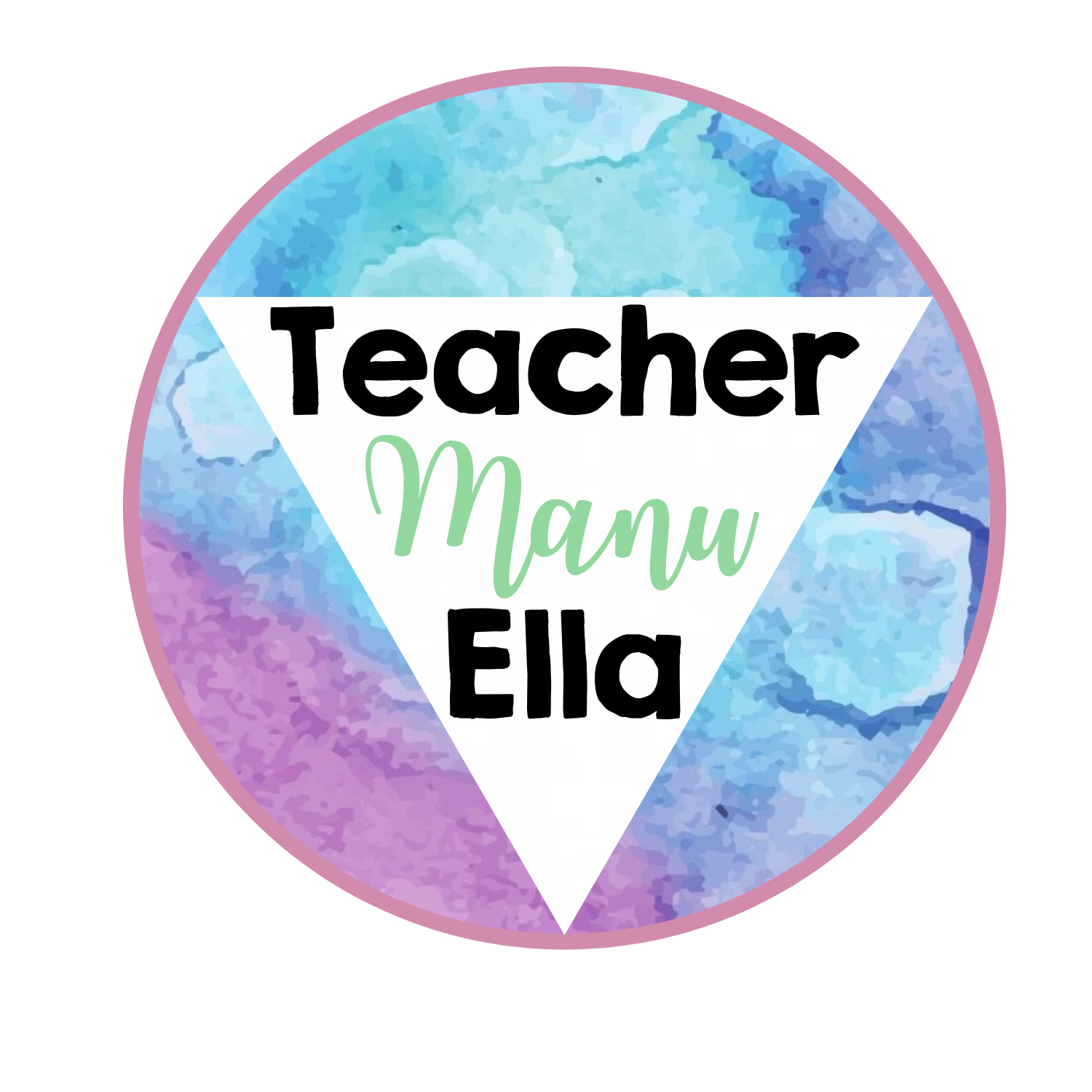
- My Resources
World War 2 Project ideas and activities: Free Interactive PPT Slides
Are you on the lookout for captivating World War 2 Project Ideas and activities? If so, then I have great news for you. One of the best ways to engage your students while they learn about this pivotal event in history is via a my visually stunning and captivating World War II Interactive PowerPoint . And the best part: You'll even get some of the slides for free . How do you get them? Just keep on reading!
Check out the preview video! Click the play button and turn on the volume!
Conquer Teaching Challenges and breathe Life into WW2 Education
Have you ever felt overwhelmed when it comes to teaching World War II in the classroom? Do you wish there were creative , engaging ways to get students excited about learning world history and expanding their knowledge of such an important global event like World War II? You're not alone! I understand how difficult it can be as a teacher to help your students grasp complex topics like WW2 or the Cold War for example. That's why I've crafted a visually stunning and exciting interactive PowerPoint about World War II. With this amazing tool, you'll be able to engage your class by providing thoughtful materials that make learning about the WWII era enjoyable.
Engage, Enlighten and Entertain Students with Dynamic Visuals.
One of the most effective ways to bring history to life is through visually stunning presentations. The World War II Interactive PowerPoint Slides offer a captivating and immersive experience, transporting your students back in time to the events that shaped the world. These dynamic visuals will ignite curiosity and create a memorable learning environment. Whether you're seeking to engage students, deepen their understanding, or inject excitement into your classroom, this teaching strategy will help you achieve remarkable results right away.
Get a Free World War 2 Project plus Interactive PowerPoint Slides and Sign Up
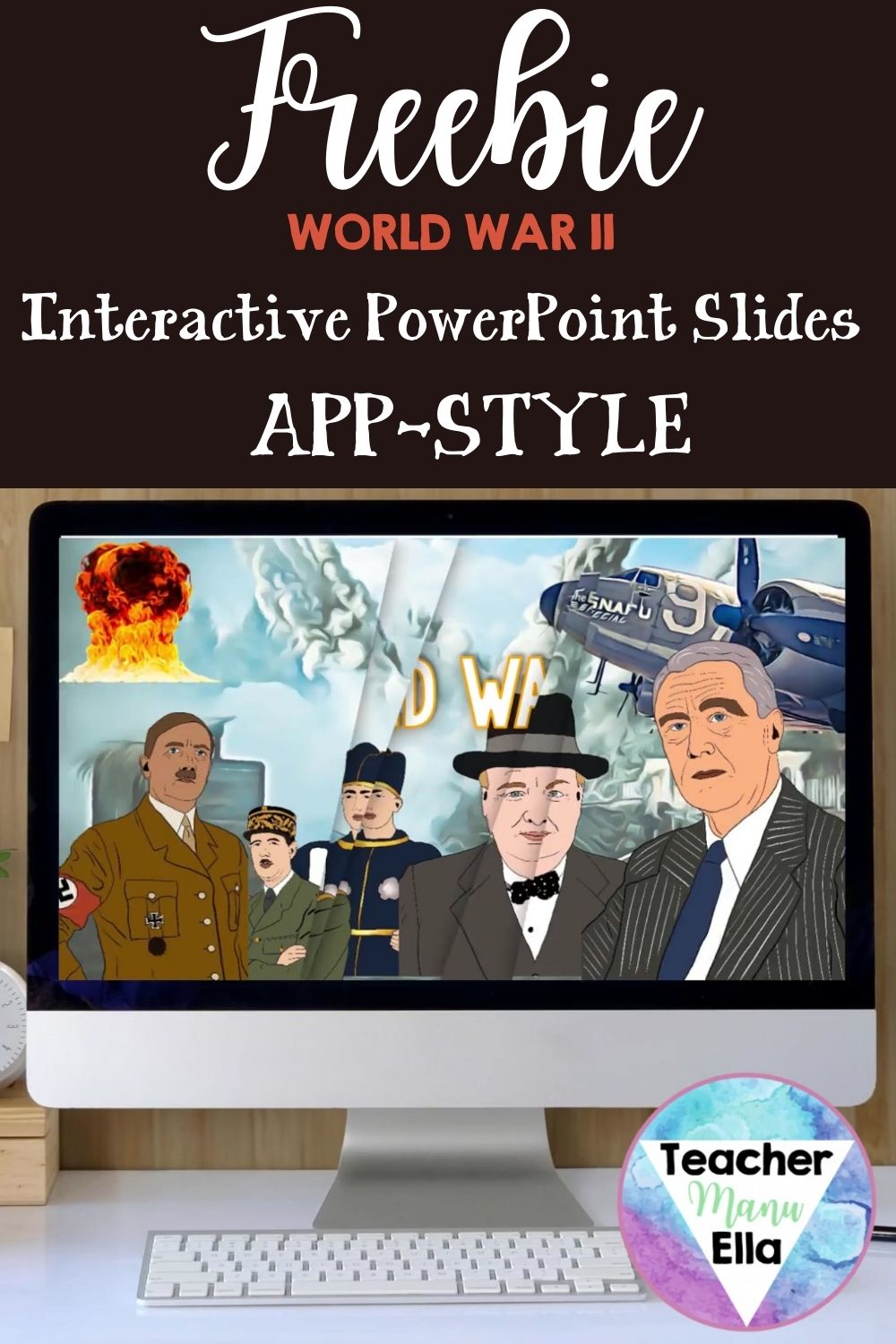
Sign up now to revolutionize your lessons with a valuable resource! Get 14 interactive PowerPoint slides, perfectly aligned with the free interactive Notebook pages, saving you weeks of prep time. These captivating slides bring World War II to life, providing a dynamic visual experience for your students. While this freebie offers a glimpse, the complete WW2 PowerPoint Presentation boasts over 60 slides of captivating content. Don't miss out on enhancing your teaching and engaging your students. Here is a preview video of my whole interactive PowerPoint presentation.
Hold up, that’s not all! Alongside complimentary Interactive Notebook pages and the interactive PowerPoint Slides about World War II, I’ve created a host of innovative teaching resources that are about to change the way you approach World War 2 lessons. Take advantage of a comprehensive 10-week curriculum, and a thought-provoking reading passage complete with questions and a solution key – all for free. These resources will be delivered straight to your inbox over four days. Save valuable time, engage your students, and unleash the full potential of your World War 2 teaching.
Although usable as a standalone, this material is designed to integrate seamlessly with the " WORLD WAR II BUNDLE ", creating a comprehensive and interconnected learning experience. This Bundle encompasses over 150 pages and includes the following four resources:
- WW2 Reading Passages & Worksheets
- WW2 Interactive Notebook
- WW2 Interactive PowerPoint
- WW2 Test – Assessment
I ntroducing World History Project with World War II Interactive PowerPoint
The WW2 Interactive PowerPoint offers a comprehensive learning experience for middle school social studies. It kind of acts like a World War II museum that covers important events , important political figures (e.g. important people like Adolf Hitler, Mussolini, Stalin from the Soviet Union, Churchill, Franklin D. Roosevelt, and more), causes of World War II, the home front, phases of the war, advances in science , the progress of the war effort, key battles, vocabulary and much more. Use it for engaging classroom presentations or individual exploration. Watch the preview video for a thrilling glimpse of this extraordinary resource.
Benefits of Using The WW2 Interactive PowerPoint Project

Main Benefits:
Active student participation:, seamless integration with curriculum:.
- Customization for Different Learning Styles
- Real-World Connections
Encourage active participation and critical thinking with interactive elements embedded within the PowerPoint slides. Tip: Incorporate engaging activities such as discussion prompts, multimedia content, and quizzes. These features will keep students actively engaged, enabling them to interact with the material and deepen their understanding.
Integrating the World War 2 Interactive PowerPoint Slides into your existing curriculum is seamless. Align the slides with your lesson plans and topics and enhance the content with interactive visuals. The PowerPoint slides act as a valuable resource, enabling you to effortlessly deliver comprehensive and impactful lessons .
Customization for Different Learning Styles:
Tailor the World War II Interactive PowerPoint Slides to cater to the diverse learning styles in your classroom. Whether your students are visual, auditory, or kinesthetic learners, these slides, when used with the complementary interactive Notebook pages, provide a versatile platform to accommodate different preferences.
Real-World Connections:
Tip: The visually powerful PPT Presentation helps you make history relevant and relatable by connecting World War II to contemporary events and global issues. Students can draw parallels between the past and the present, and you can encourage them to analyze historical events in a modern context. This approach fosters critical thinking skills and encourages students to become informed global citizens.
How to Use the interactive PowerPoint Effectively
Supercharge your classroom with the perfect combination: the WW2 Interactive PowerPoint and Interactive Notebook . Imagine your students diving into the world of significant battles like Pearl Harbor and D-Day, not just through dry textbooks, but with captivating real pictures brought to life in animated slides. Unlike Google Slides, PowerPoint adds that extra level of engagement that truly brings history to life. Plus, you can enhance your teaching with a differentiated approach that caters to every student's needs. Set a due date while offering a range of topics at different difficulty levels for students to choose from. This allows for personalized learning experiences and ensures that each student is challenged at their own pace.
With this dynamic duo you can unlock the full potential of your lessons and leave a lasting impact on your students.
Combining these materials enhances the learning experience. The presentation has a user-friendly interface, resembling a smartphone app with effortless navigation. No password is required, ensuring a hassle-free experience for you and your students. Simply click on the read-only mode . Explore the seamless integration of these resources and unlock the full potential of your WW2 teaching ideas.
By implementing these powerful teaching ideas and activities using the World War 2 Interactive PowerPoint Slides, you'll revolutionize your classroom and inspire a love for history in your students. From immersive visual learning to active student participation, seamless integration with your curriculum, customization for different learning styles, and fostering real-world connections, these strategies will elevate your teaching and drive remarkable results. Get ready to embark on an unforgettable learning journey with your students as you bring World War II to life like never before.
Check out an overview of ALL MY RESOURCES HERE .
Download the interactive powerpoint ww2 for FREE
Subscribe and get this FREEBIE plus more than two weeks' worth of FREE history teaching activities directly in your inbox, delivered over the course of 4 days . !
How to Teach Early Humans for Kids: 13 Steps to Bring the Stone Age to Life
Holocaust worksheets: unleashing interactive notebook power in teaching ww2 social studies, free ww2 one pager – worksheets and reading passages, world war 2 lesson plans: unlock the power of interactive notebooks and engage students, free modern world history curriculum: world war 2 lesson plans, ideas & activities, 10 reasons why my teaching resources will save you time and effort.
Sitzung abgelaufen
Bitte melde dich erneut an. Die Anmelde-Seite wird sich in einem neuen Tab öffnen. Nach dem Anmelden kannst du das Tab schließen und zu dieser Seite zurückkehren.
world war ii. research projects
All Formats
Resource types, all resource types.
- Rating Count
- Price (Ascending)
- Price (Descending)
- Most Recent
World war ii. research projects
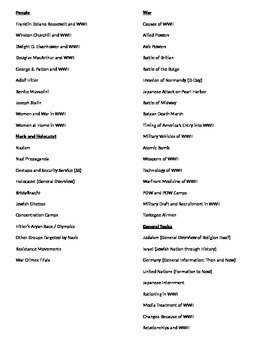
WWII Research Project Topic List

- Word Document File
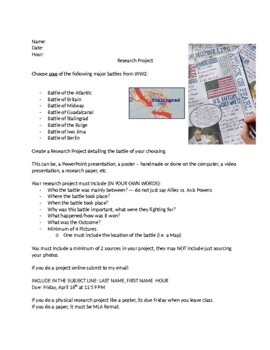
World War Two Battles Research Project

Causes of World War II research project

FREE - U.S. States | State Report | State Research Project | "Silhouettes"

Wretched World War 2 Internet Research Activity

World War 2 Museum Exhibit Creative Project

World War II Group Project

Key Battles of World War 2 video and article project

World War 2 Timeline Project

WWII Three Part Menu Style Project

Historical Fiction American Revolutionary War Civil War WWI WWII Vietnam

WWII Technological Warfare Mini Project

World War 2 Battles Presentation

WWII /Holocaust classroom conduct contract

World War 2 Leaders Digital Project | 4th - 8th | For Google Slides | PBL

Post WWII Group Presentation Project (Global History NY Regents exam curriculum)

- Google Docs™
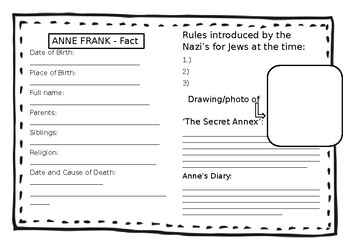
Anne Frank - Project template

Adolf Hitler Fact File - WW2 & Nazi Leadership

WWII Scrapbook Project

WW2 Famous Americans Project

Video Viewing Guide Crash Course World History World Wars I and II

- Internet Activities
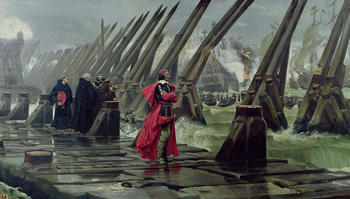
AP Euro - College Powerpoint Project

Decades of Memories Sample: A 1940s Oral History Project

FREE Making Inferences
- We're hiring
- Help & FAQ
- Privacy policy
- Student privacy
- Terms of service
- Tell us what you think
Skip to Main Content of WWII
Explore by topic, branches of service.
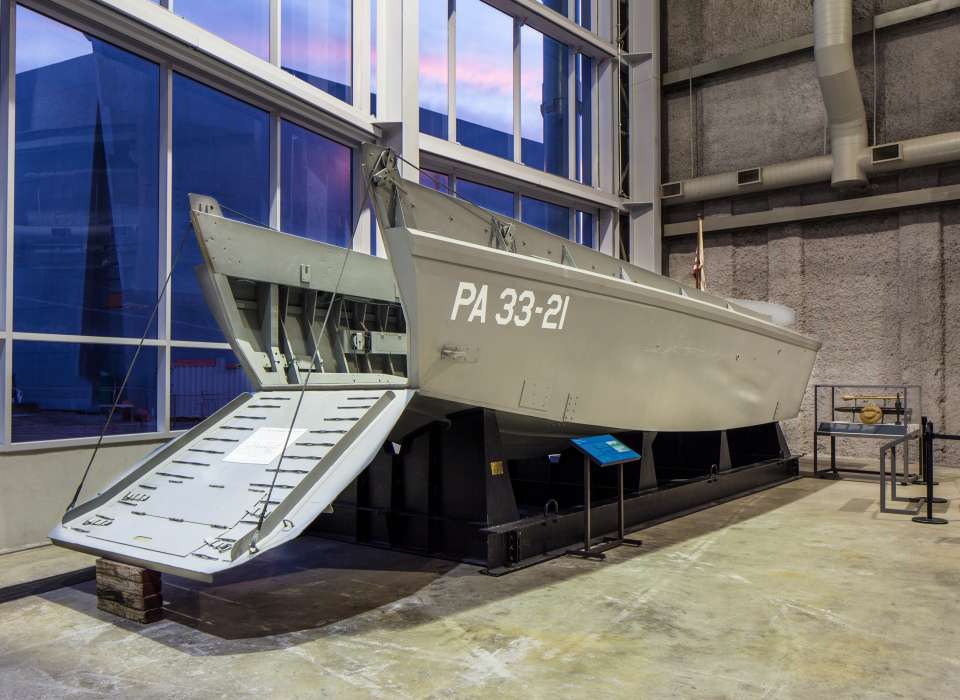
Coast Guard
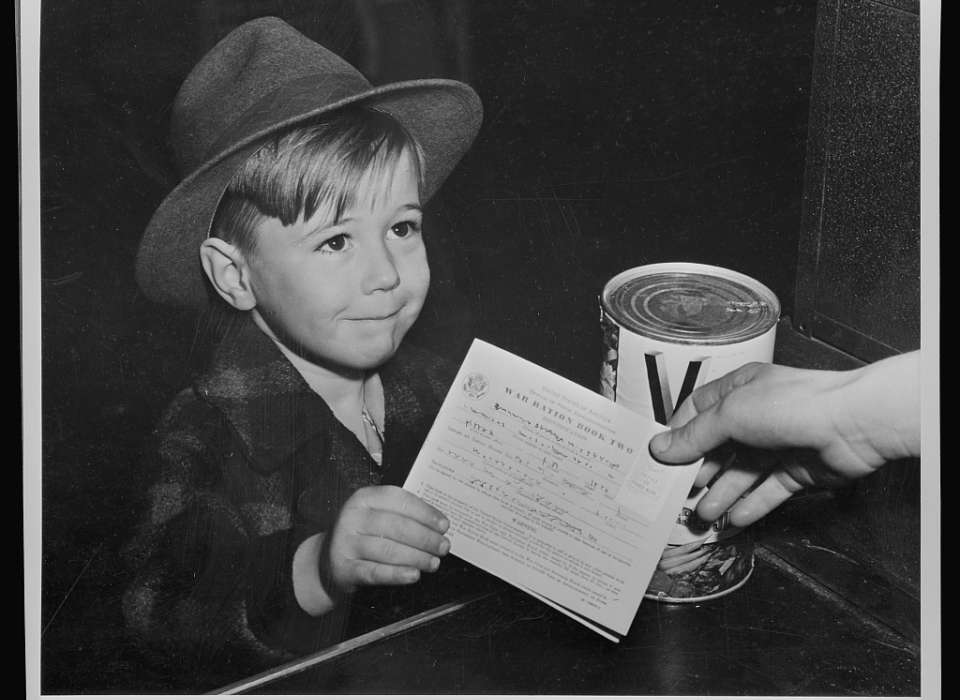
US Army Air Forces
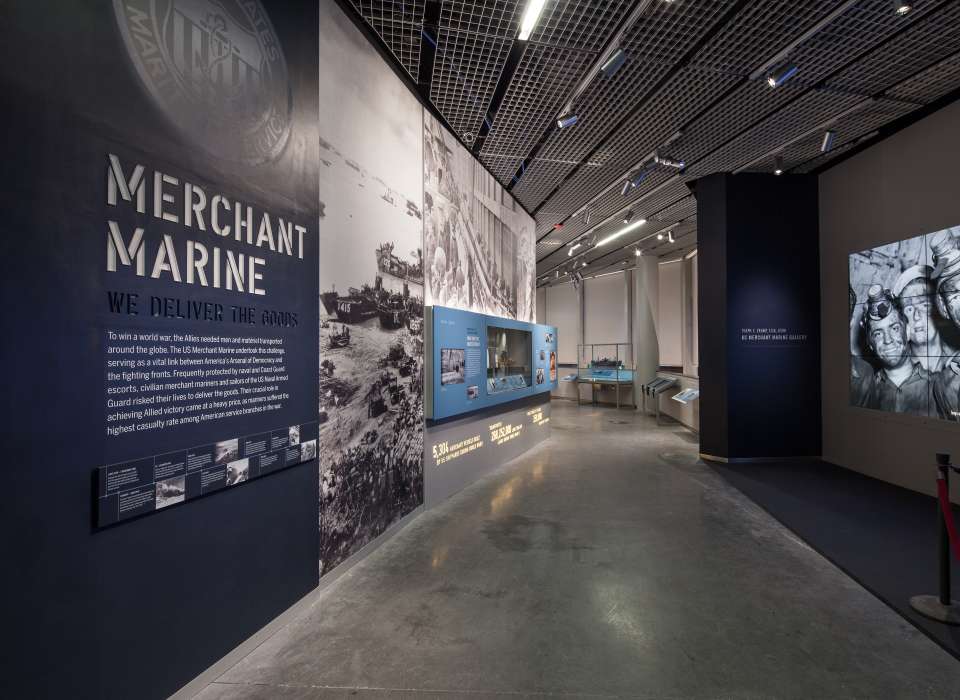
US Merchant Marine
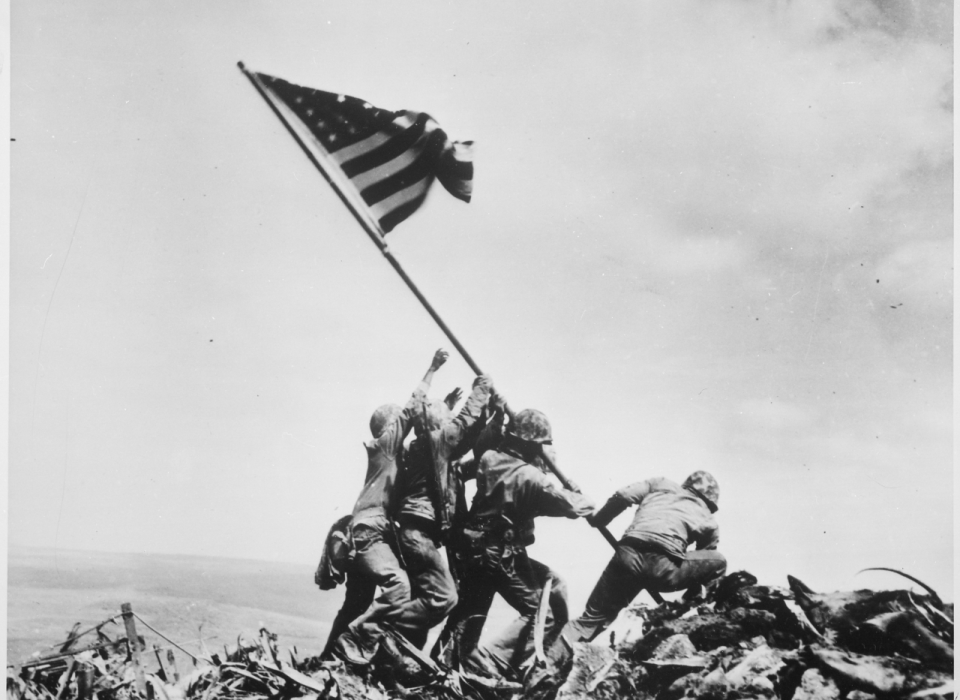
US Marine Corps
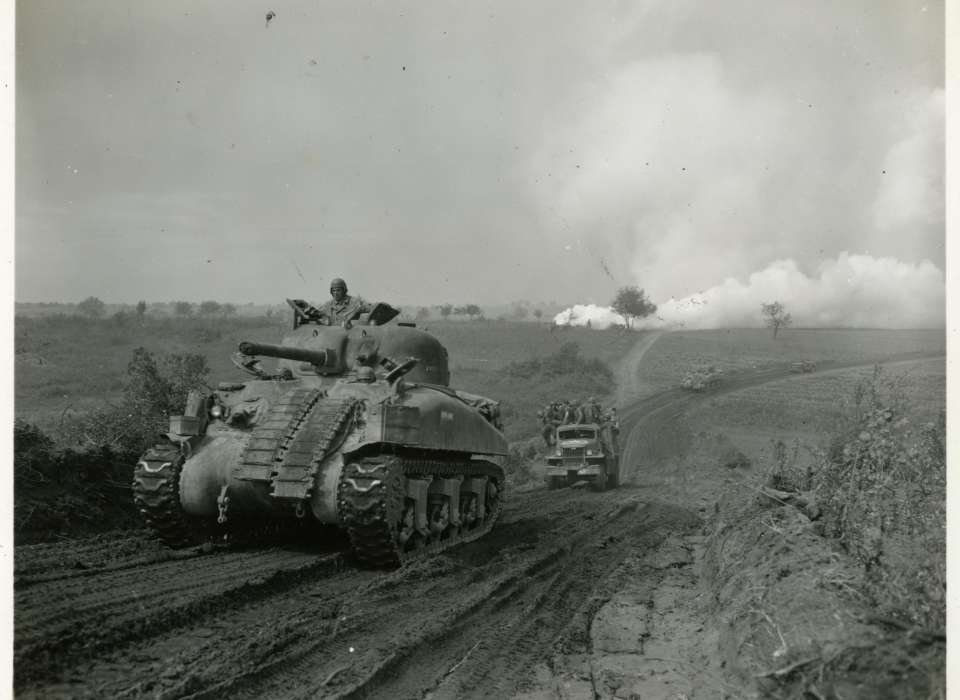
Theaters of Operation
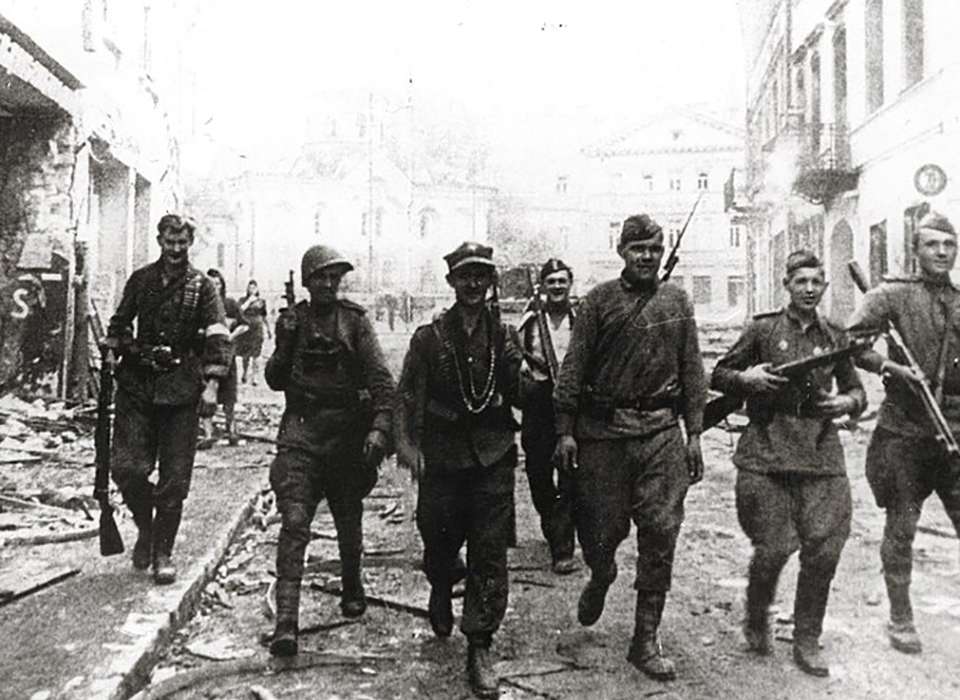
Eastern Front
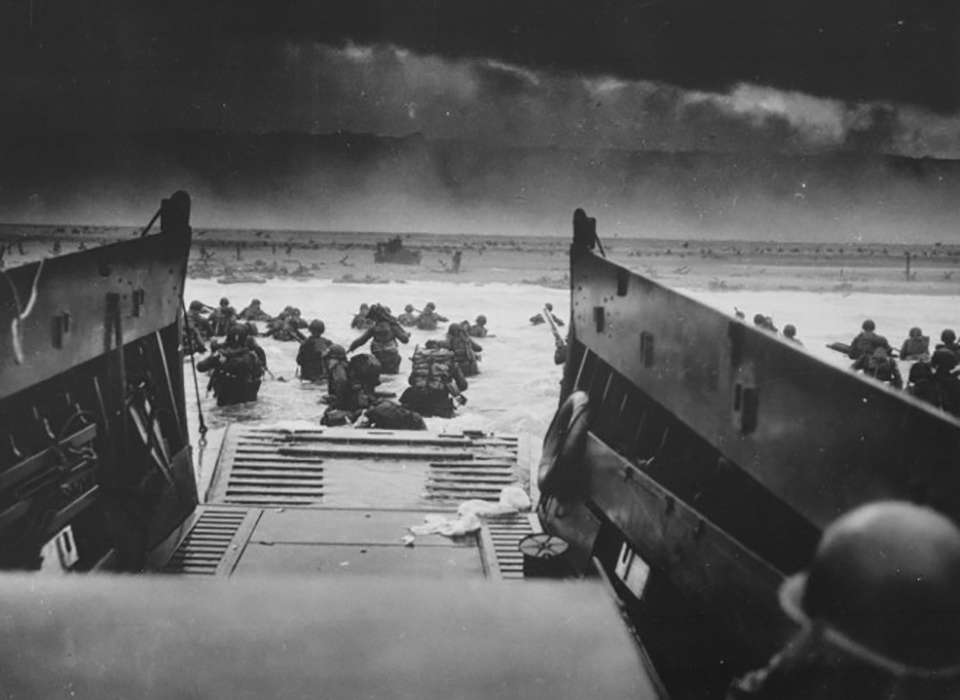
European Theater of Operations
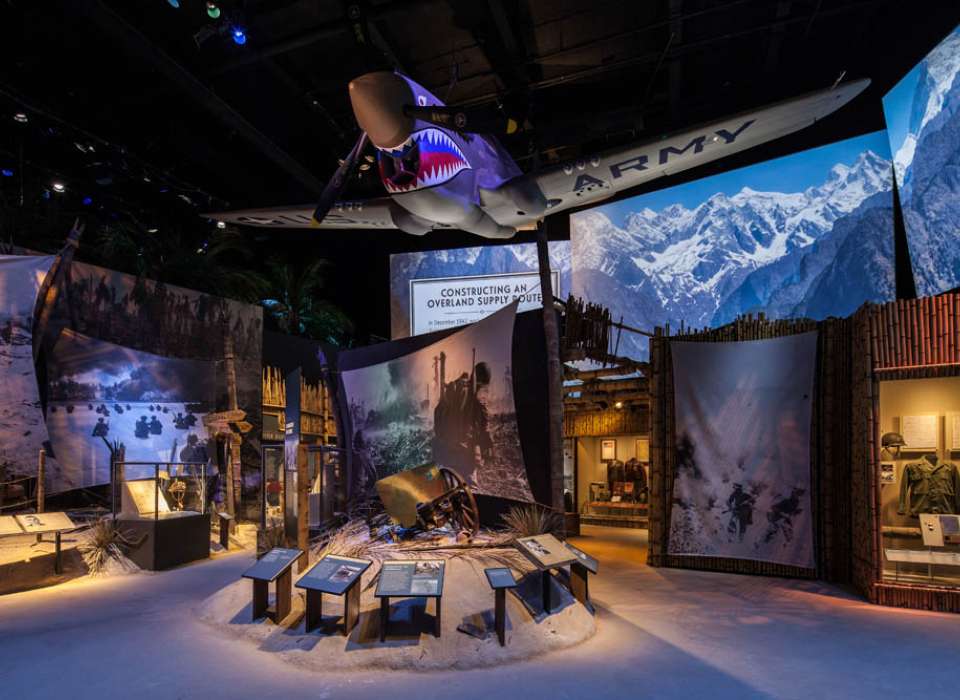
China Burma India Theater of Operations
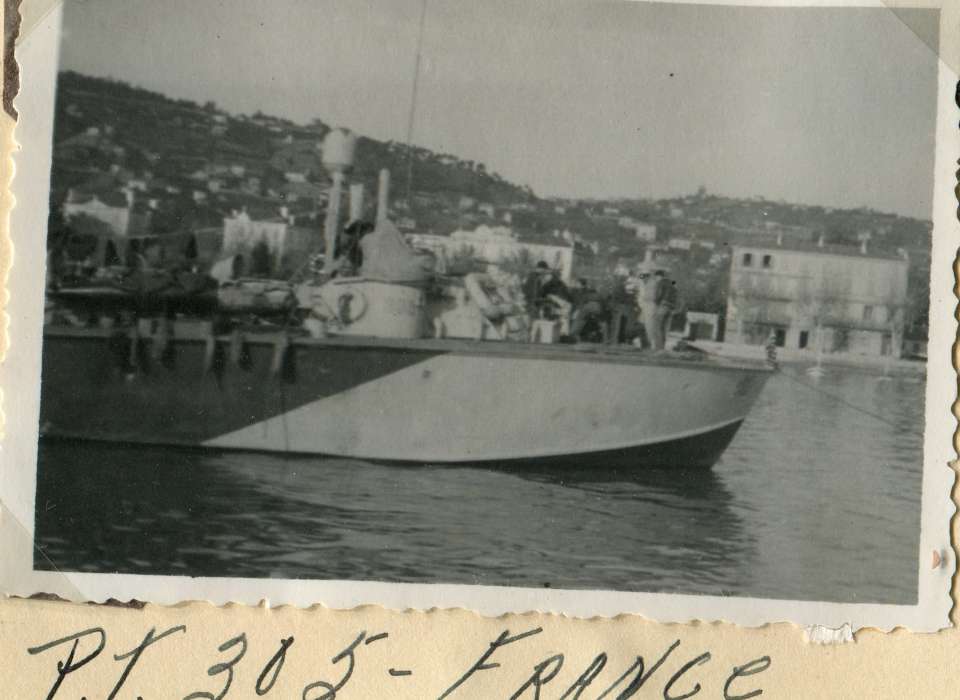
Mediterranean Theater of Operations
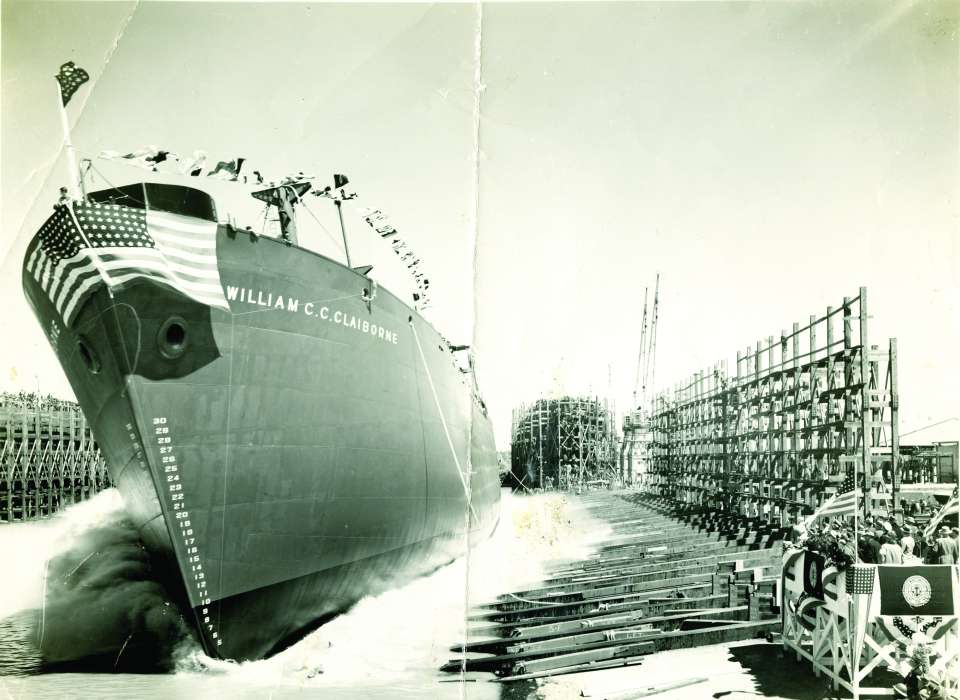
Atlantic Theater of Operations
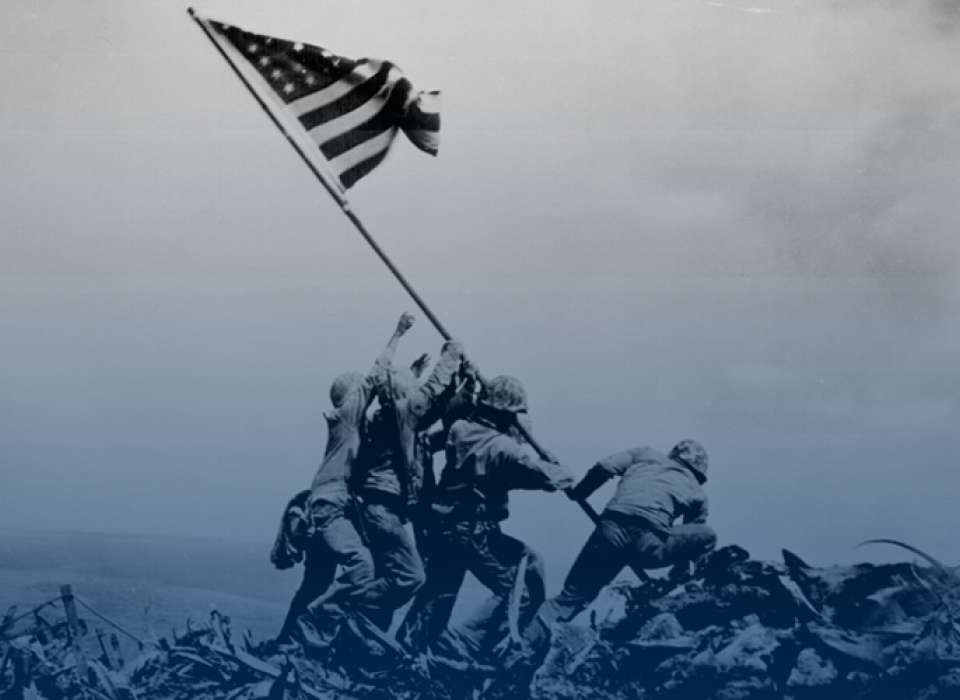
Pacific Theater of Operations
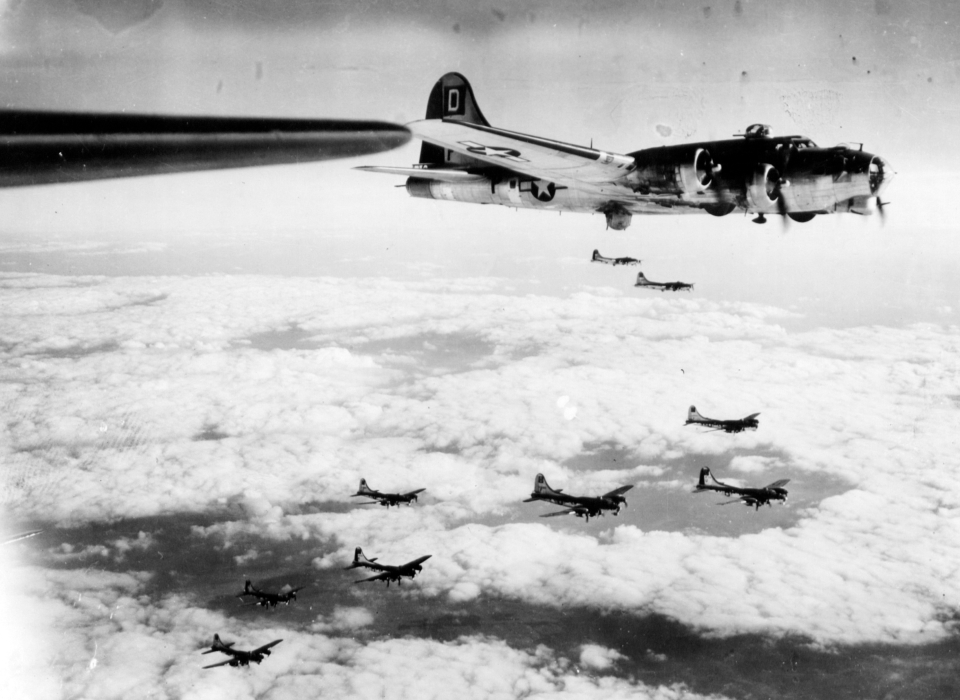
Masters of the Air
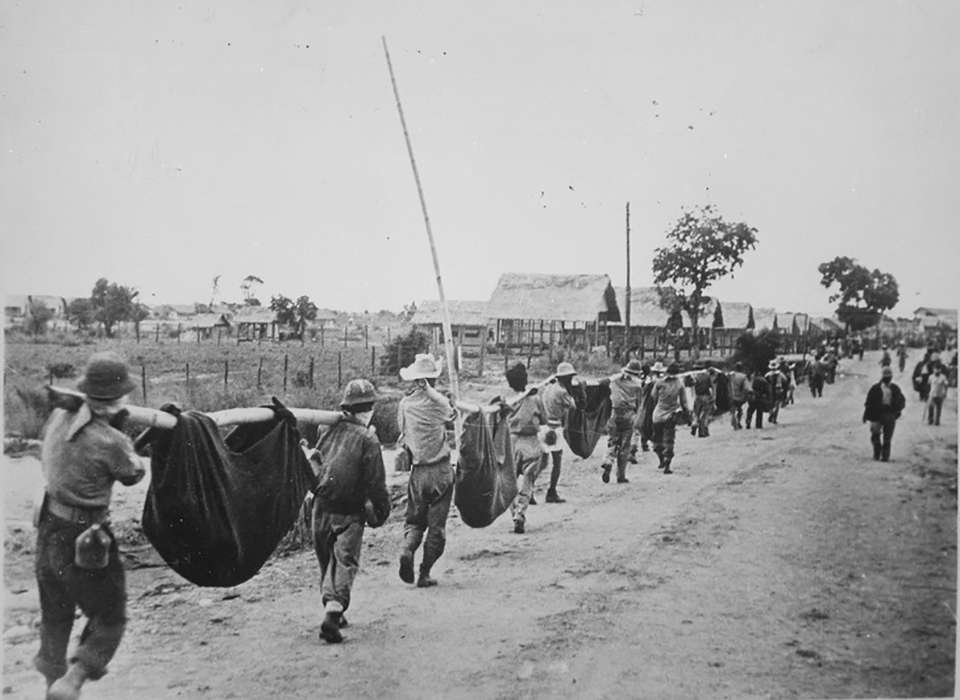
Battle of Bataan
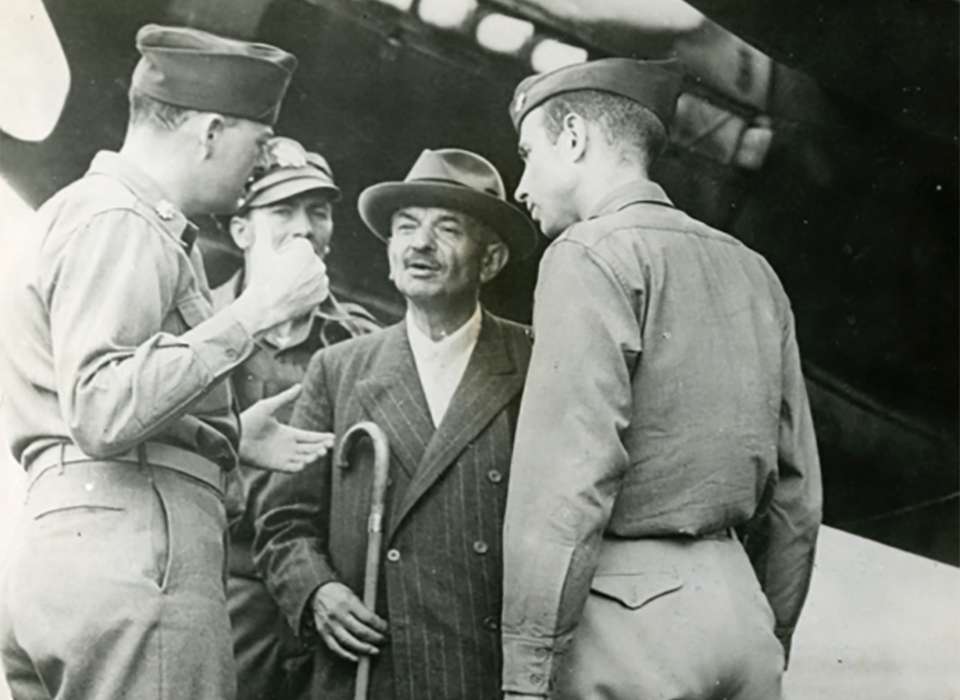
Vichy France
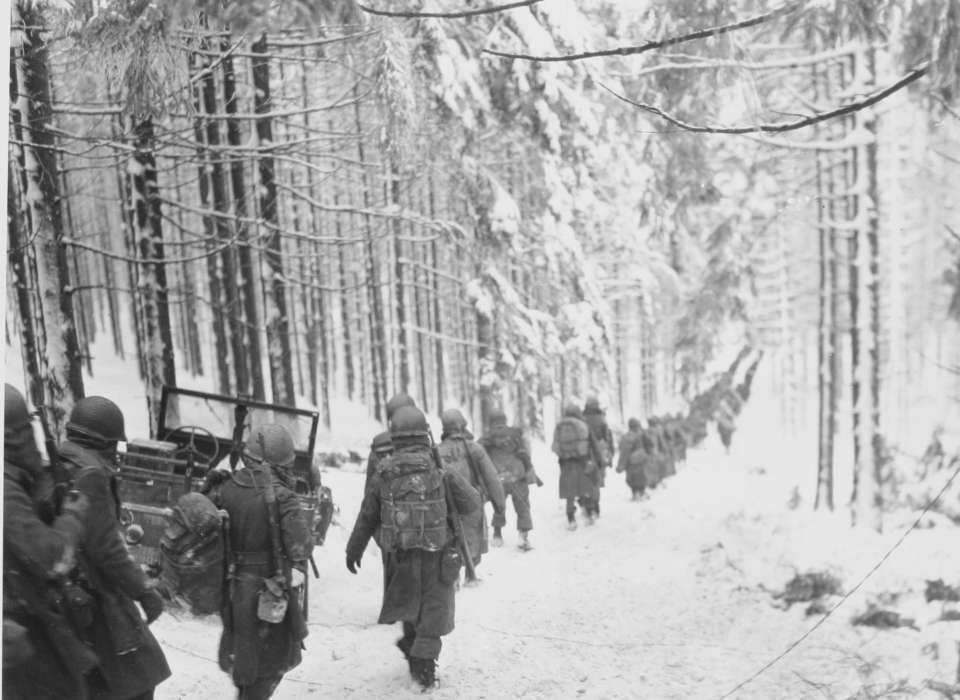
Battle of the Bulge
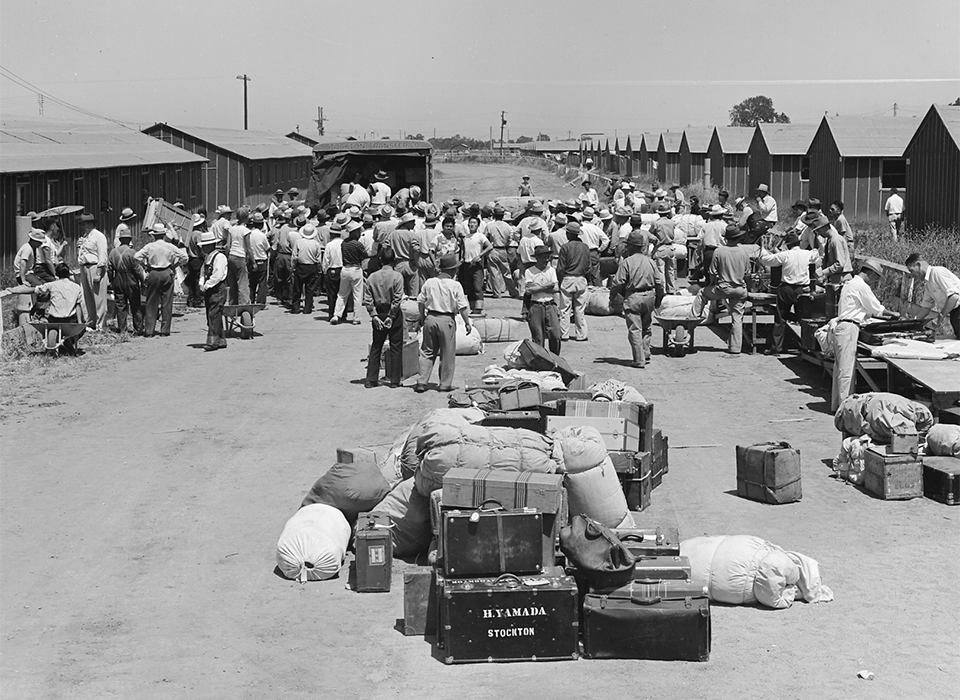
Japanese American Incarceration
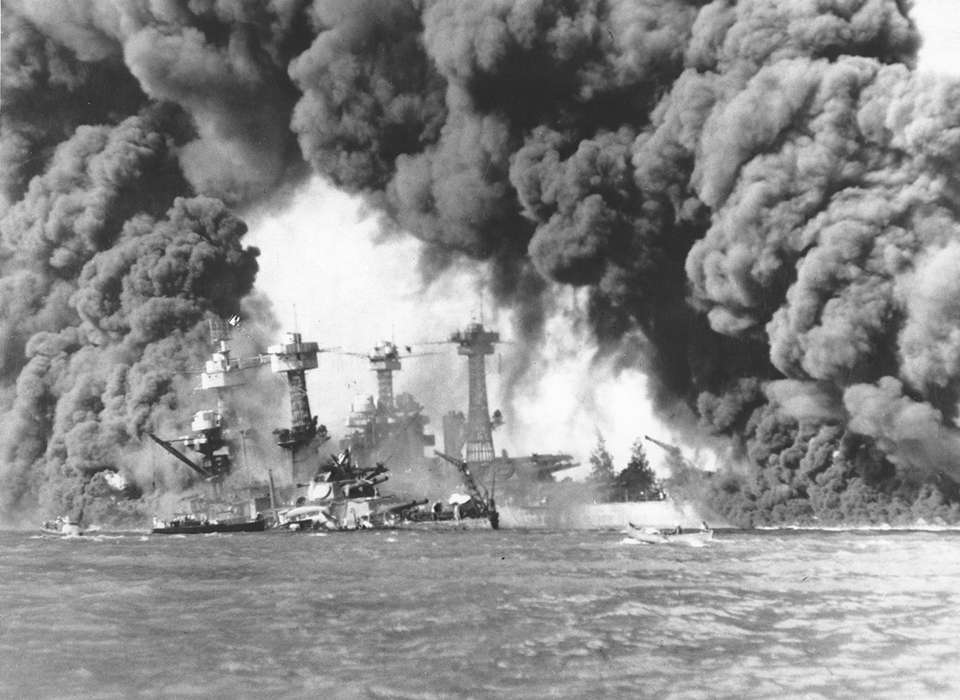
Pearl Harbor Attack, December 7, 1941
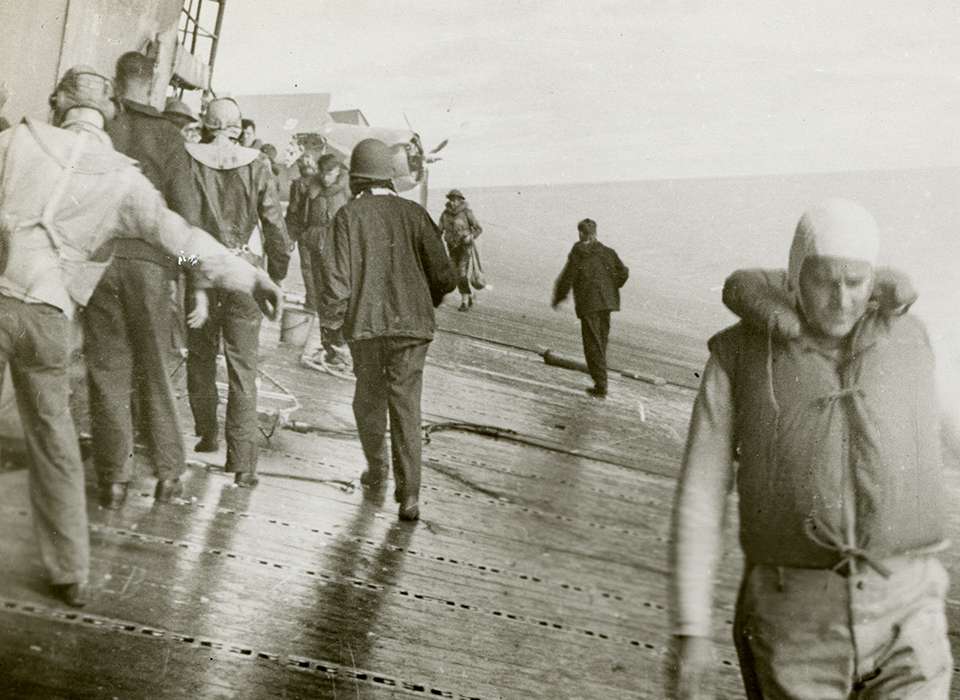
Battle of Midway
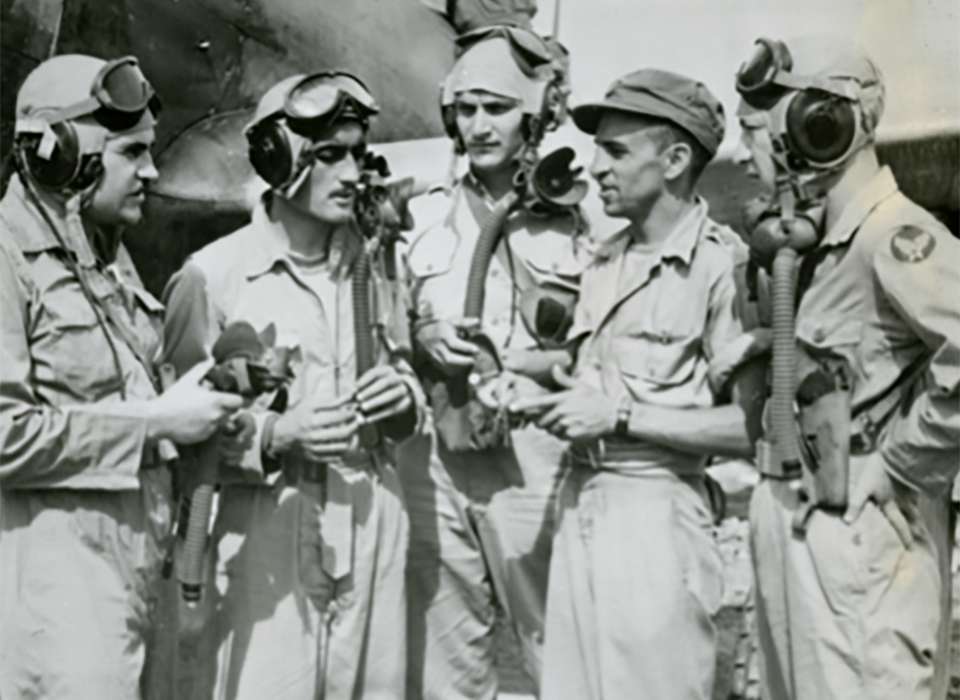
Hispanic and Latino Americans in World War II
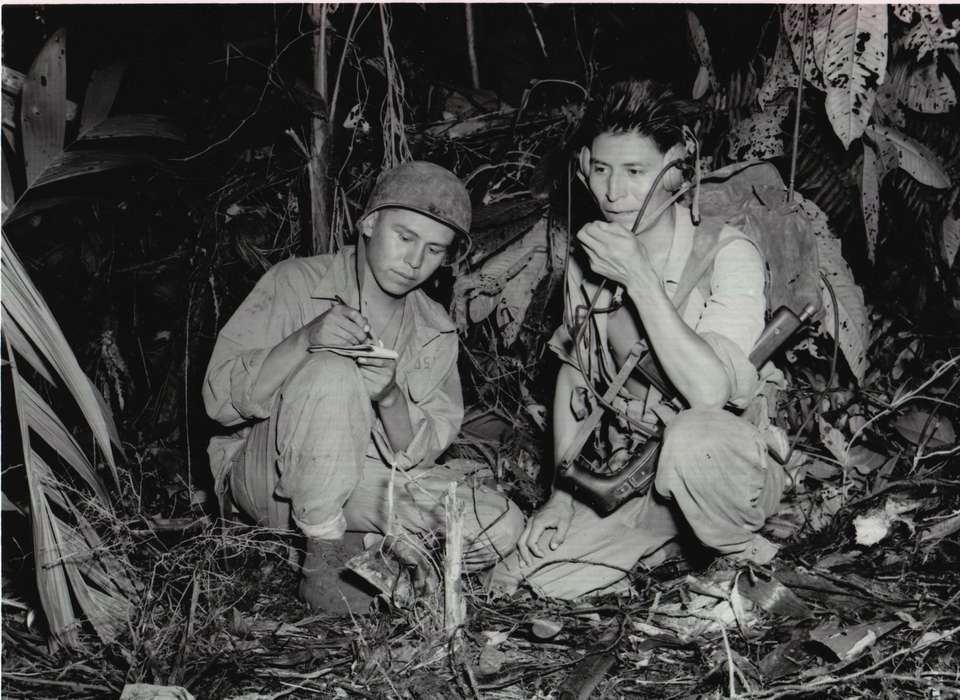
Native Americans in World War II
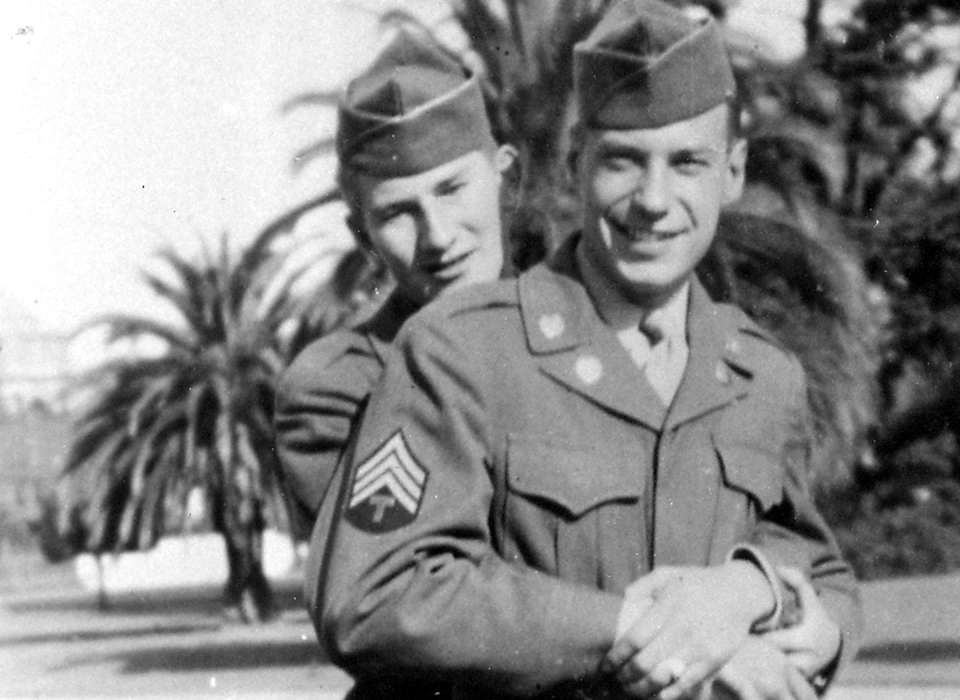
LGBTQ+ in World War II
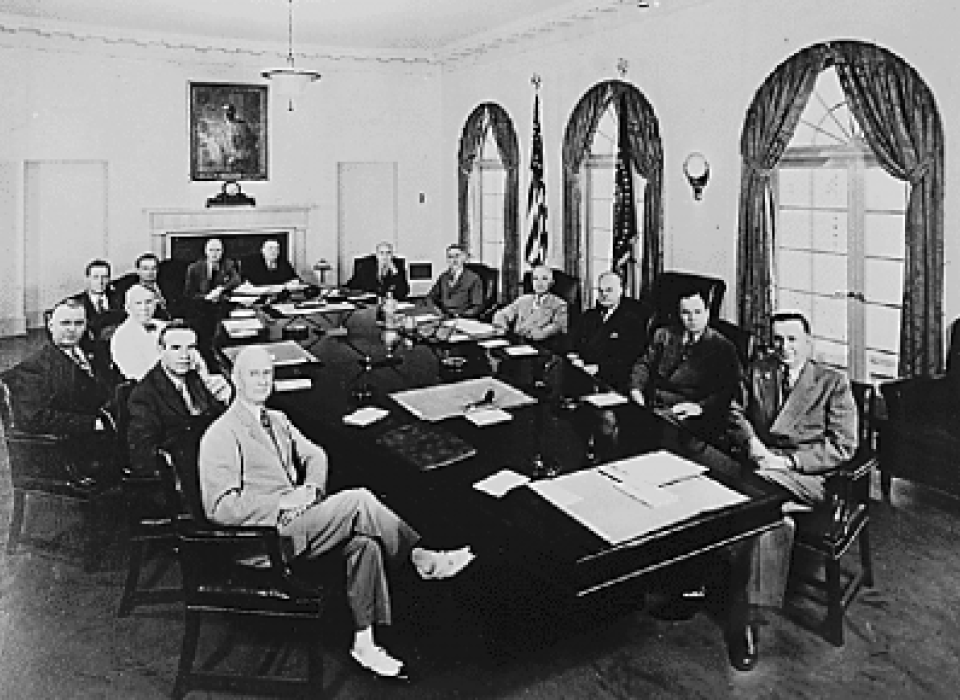
Immediate Aftermath of World War II
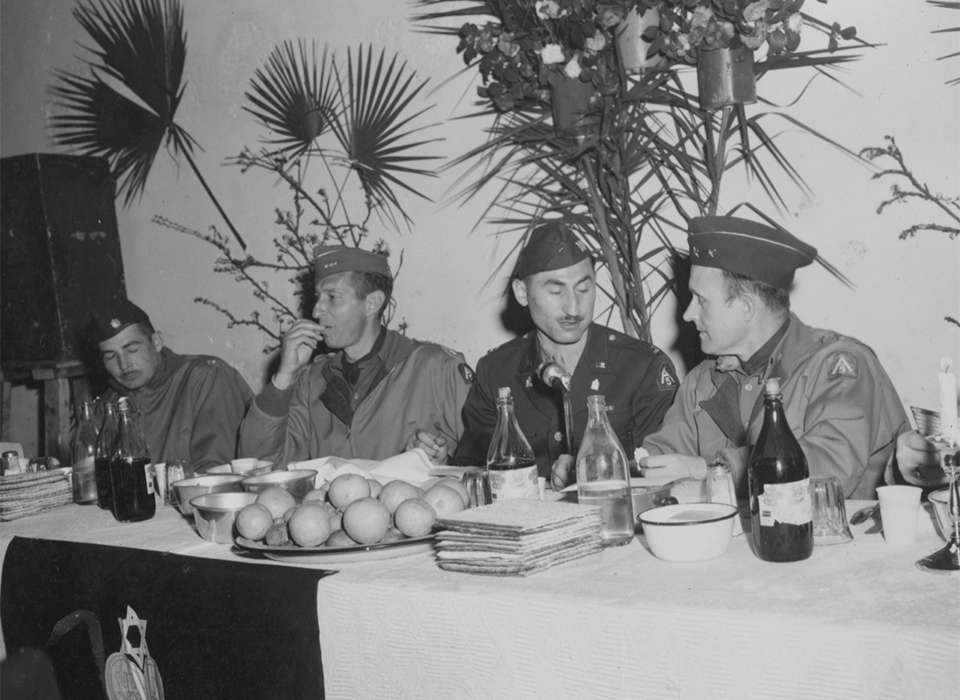
Jewish Americans in World War II
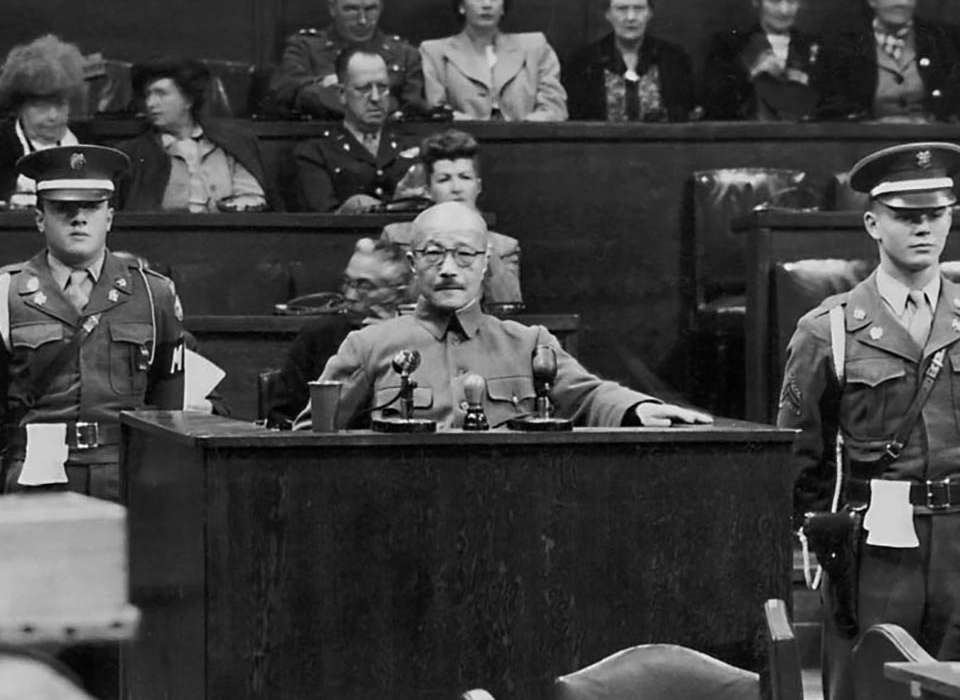
Tokyo War Crimes Trial
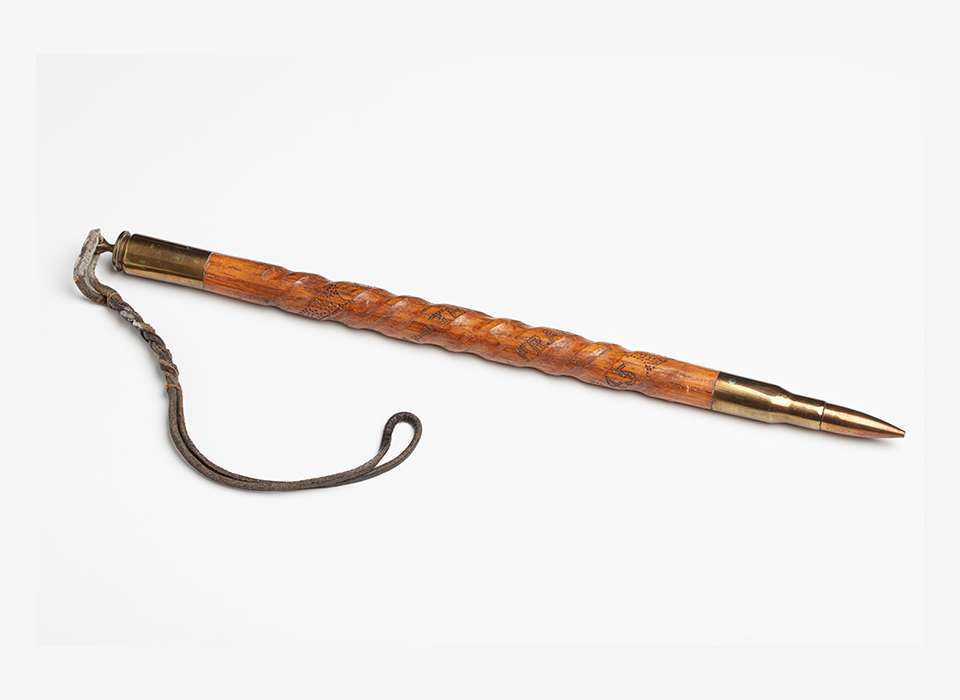
Curator's Choice
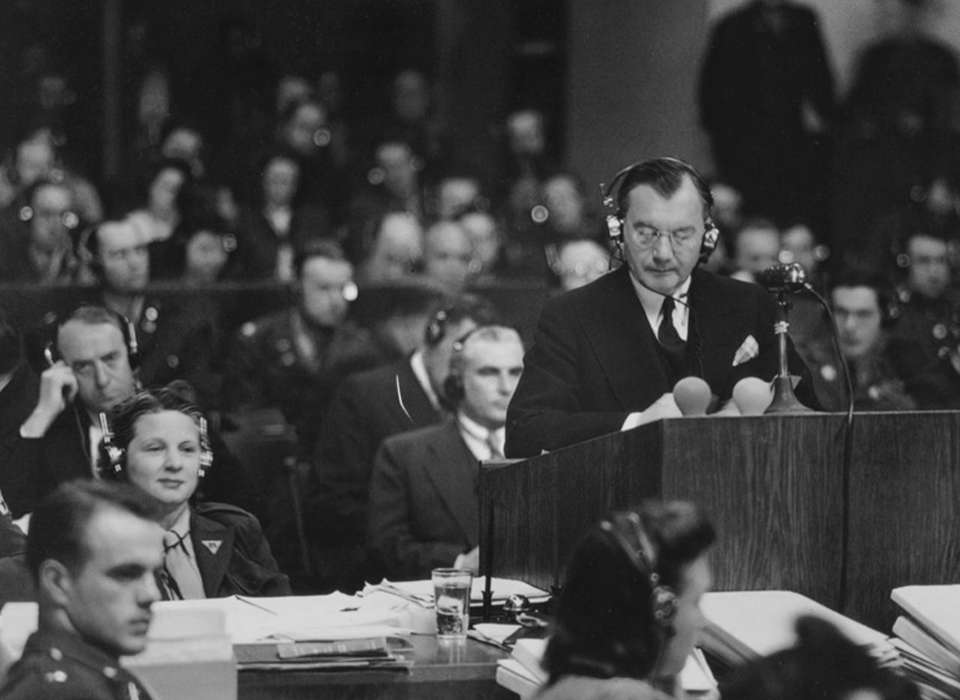
The Nuremberg Trials
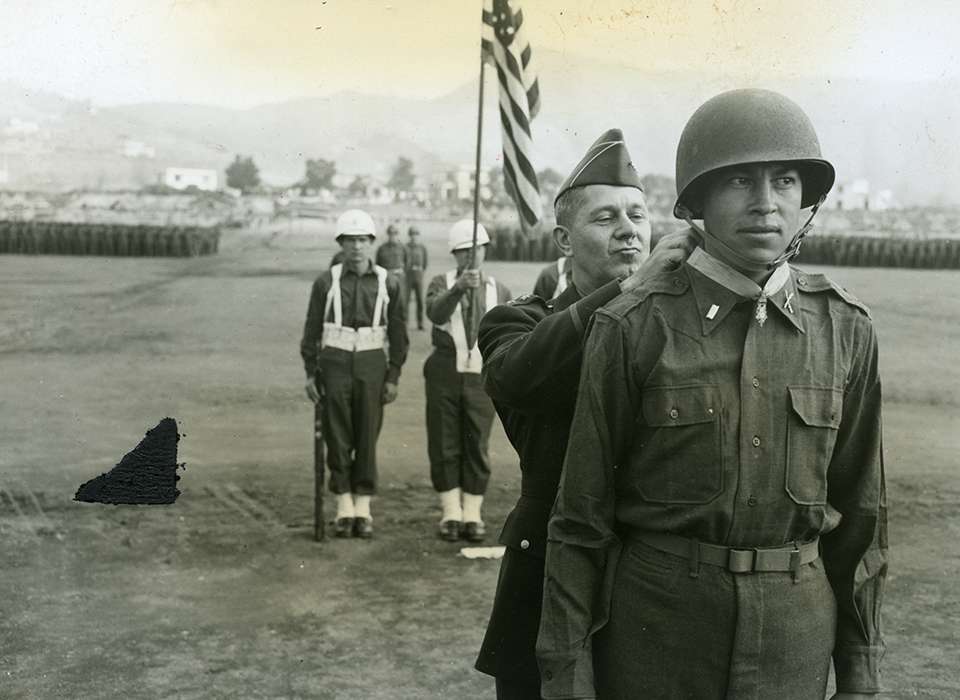
Medal of Honor Recipients of World War II
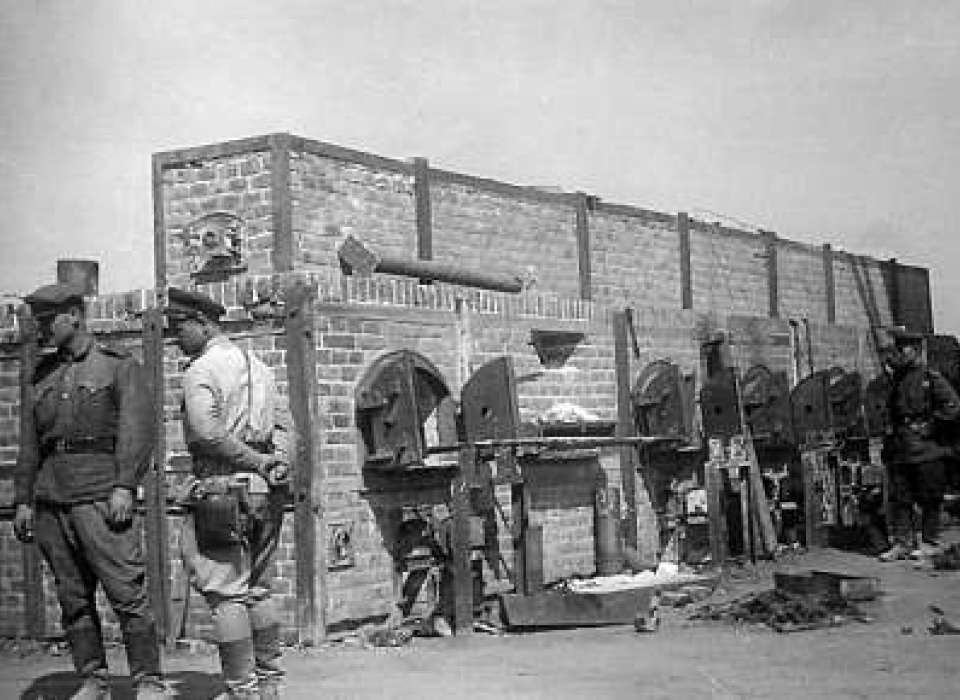
Liberation of Concentration Camps
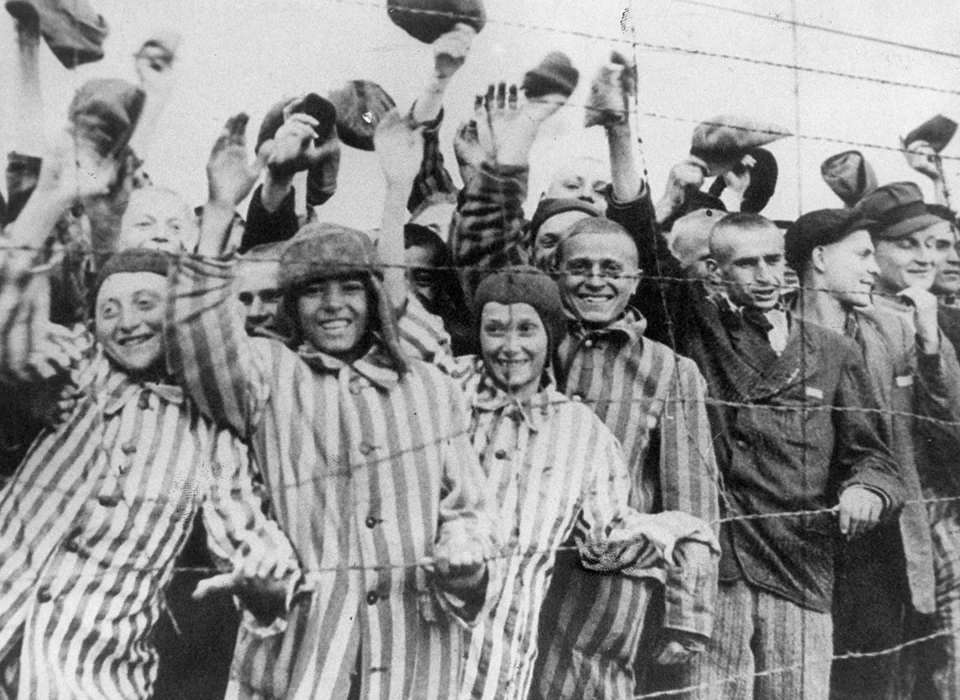
The Holocaust
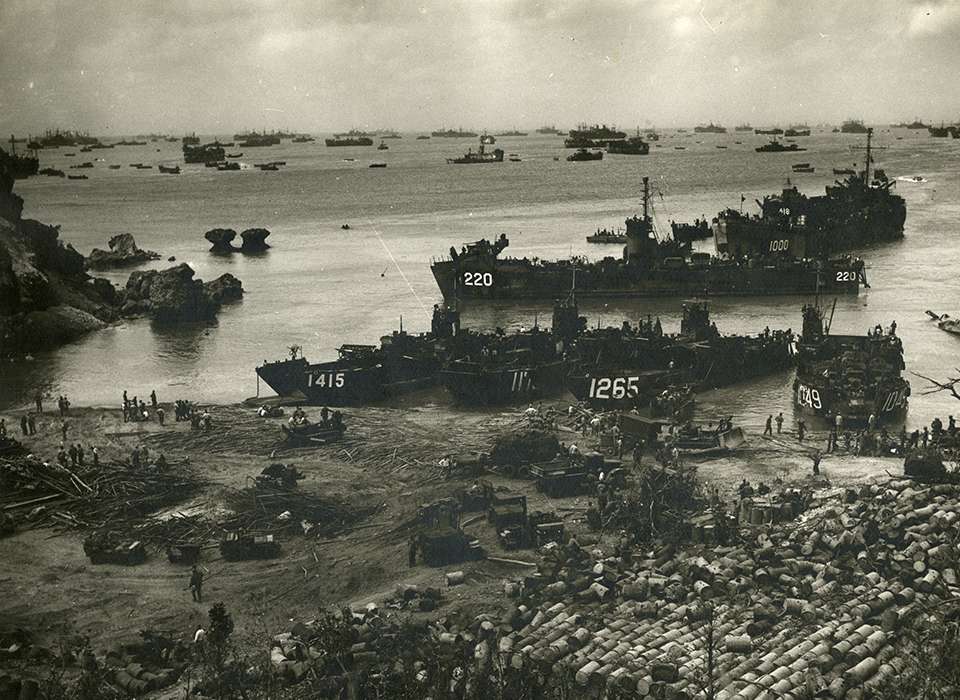
Battle of Okinawa
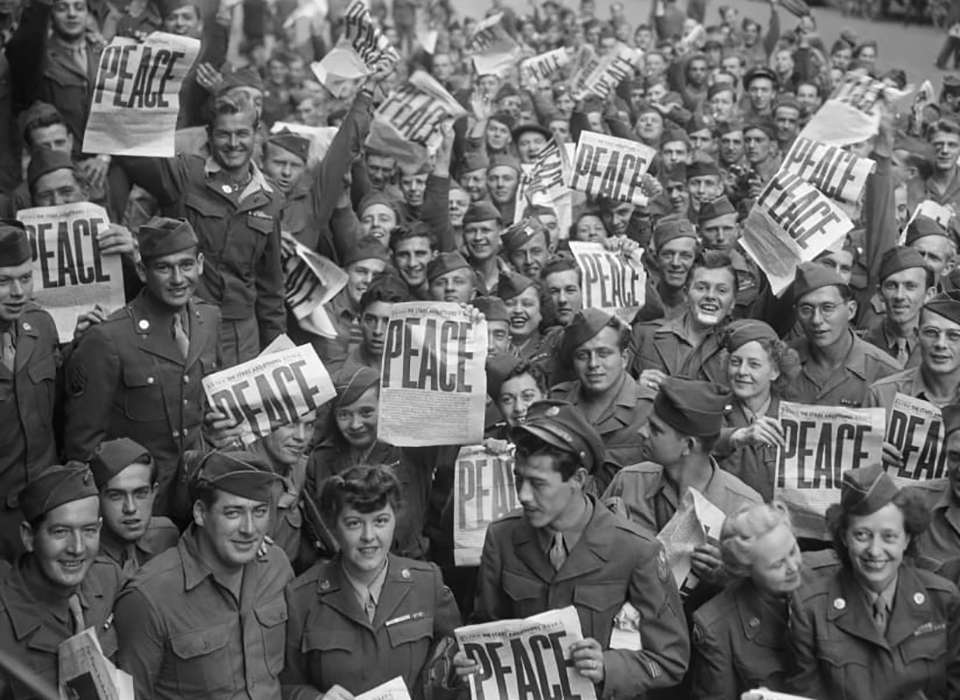
The End of World War II 1945
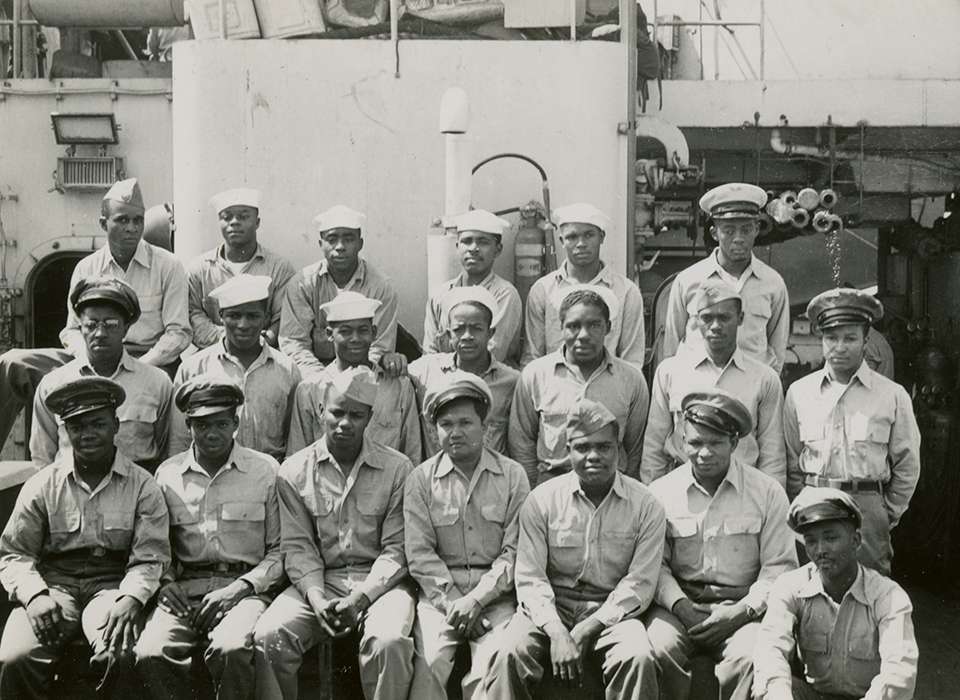
African Americans in World War II
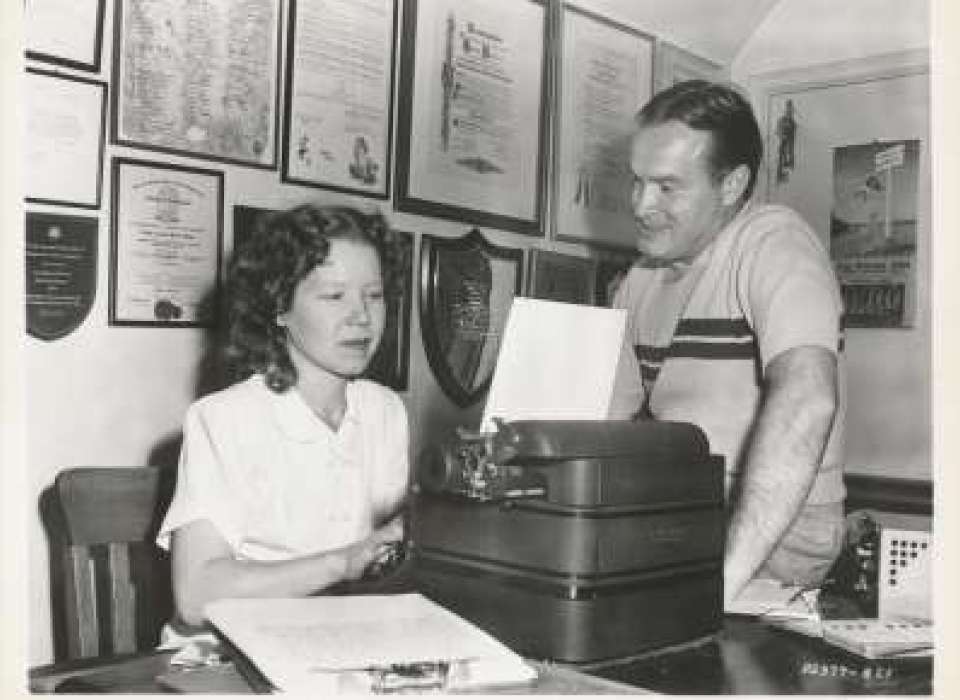
Higgins Industries
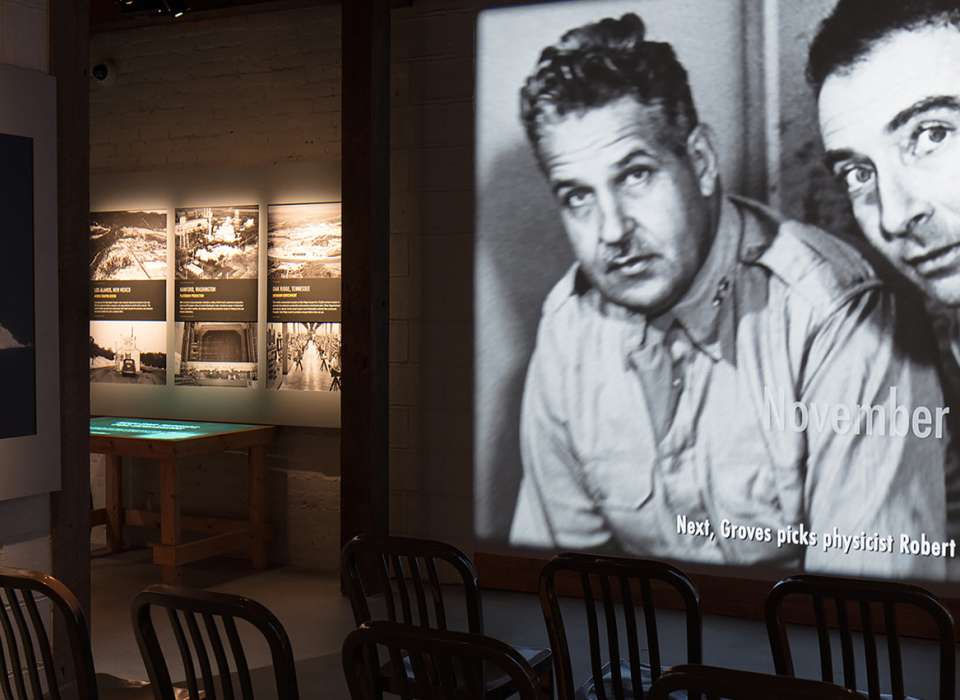
Manhattan Project
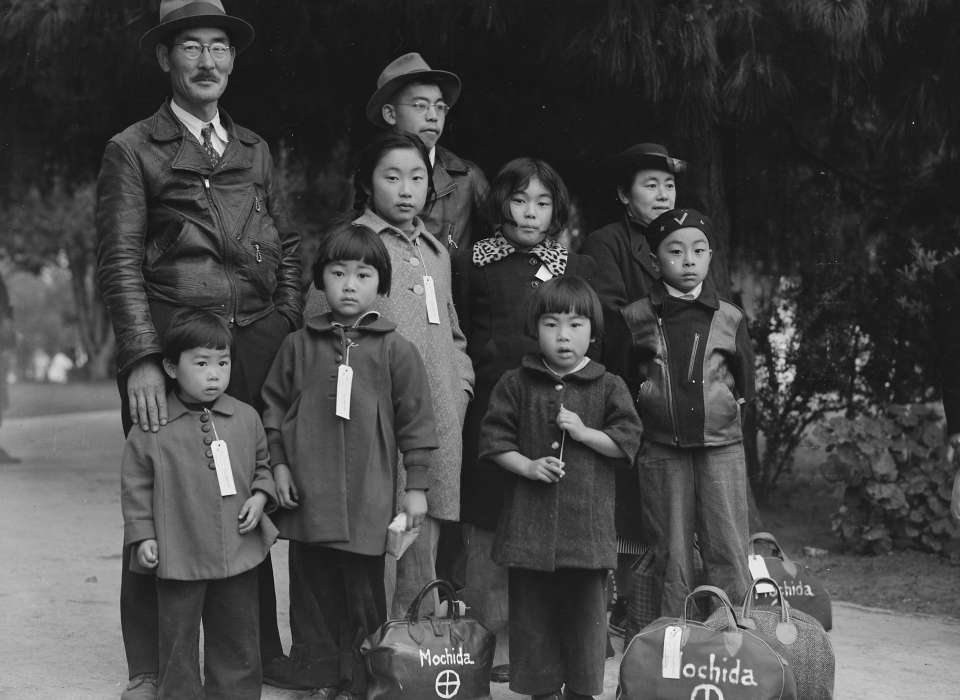
Asian Americans and Pacific Islanders in World War II
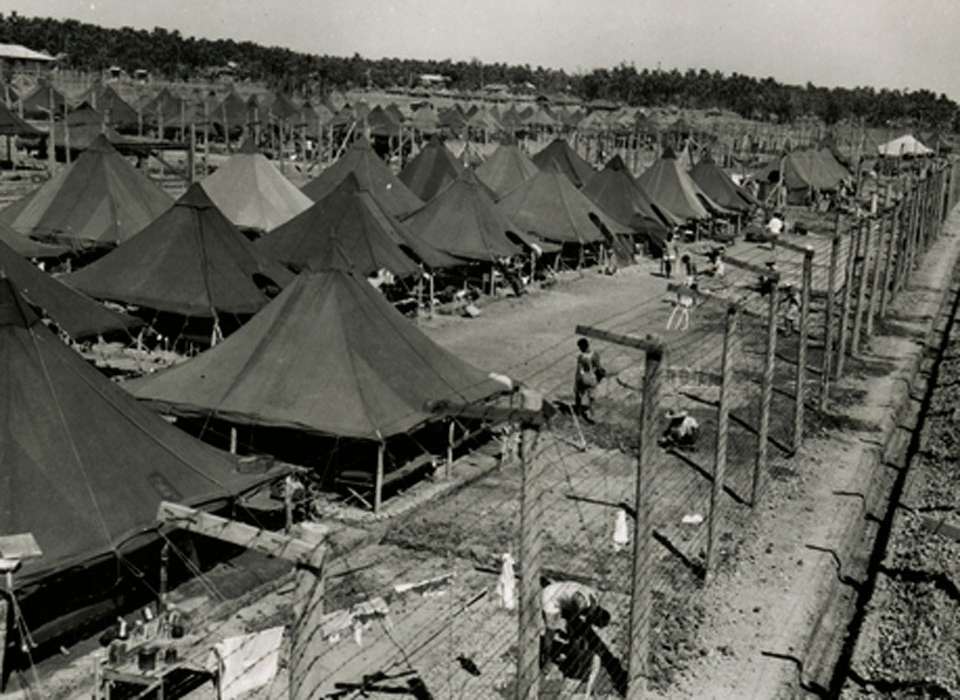
Prisoners of World War II (POWs)
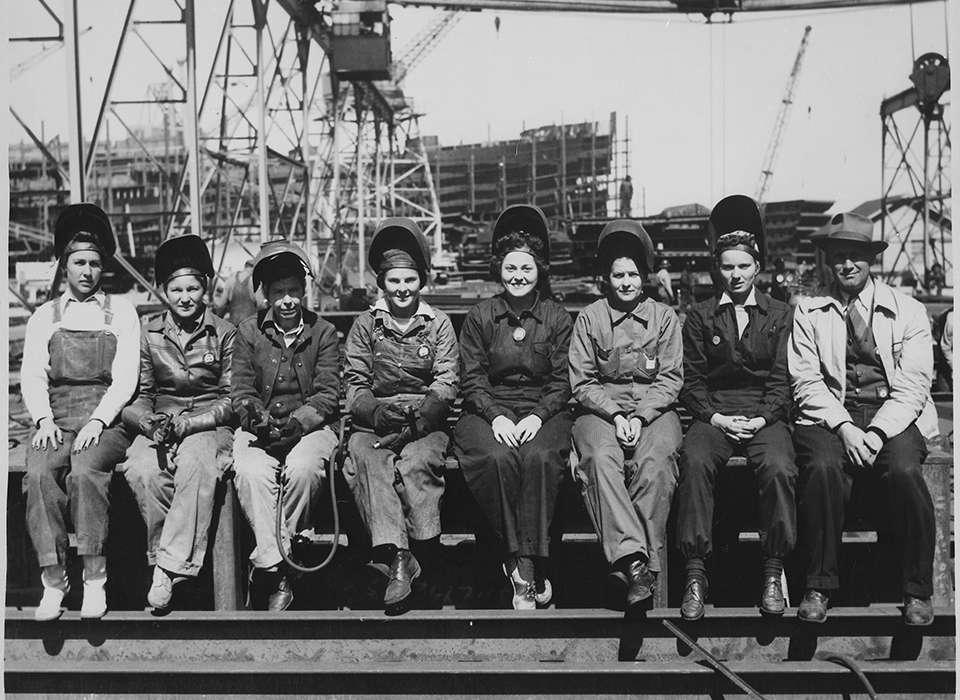
Women of World War II
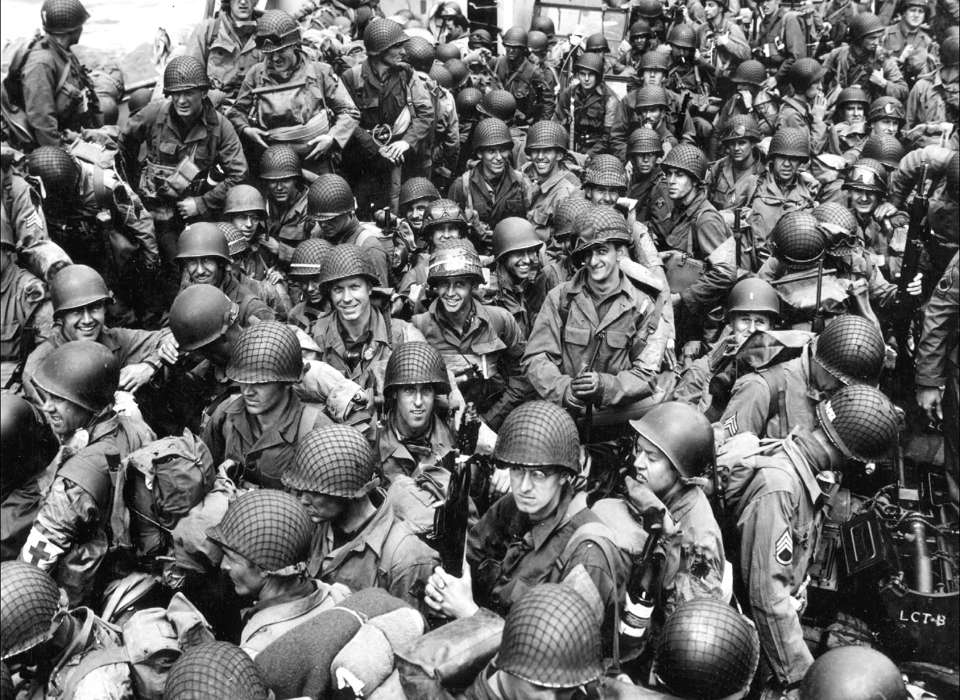
D-Day and The Normandy Campaign
Accelerating Data Modernization Efforts in Western and Central Africa - Republic of Congo and Gabonese Republic get World Bank support to enhance their statistical systems
WASHINGTON, March 22, 2024 - The World Bank today approved an additional $150 million in credit and loan from the International Development Association (IDA)* and from the International Bank for Reconstruction and Development (IBRD)** to improve and harmonize data systems in the Republic of Congo and Gabonese Republic, respectively. This operation is an Additional Financing of the Harmonizing and Improving Statistics in West and Central Africa Series of Projects-Two (HISWACA-SOP 2) project, designed to improve national statistical performance, promote regional harmonization, facilitate data access and utilization, and drive the modernization of statistical frameworks in Western and Central Africa.
“ This additional financing will enable the Republic of Congo and the Gabonese Republic to participate in the regional effort to modernize and harmonize statistical systems, and to produce and disseminate high-quality data critical to help improve the lives and livelihoods of people ,” said Cheick Fantamady Kante, Country Director for Cameroon, Central African Republic, Republic of Congo, Equatorial Guinea, and Gabonese Republic .
Within the project framework, a commitment has been made to strengthen human resource capacity, alongside sectoral coordination support to strengthen the statistical services in ministries for effective data production. The endeavor will focus on streamlining and enhancing data collection systems, modernizing human resources management, and bolstering National Statistical Offices (NSOs). Furthermore, ongoing national statistical system reforms will include the establishment of statistical training programs at universities or national schools in the Gabonese Republic, as well as support for the reform of the national statistics school in the Republic of Congo.
The first two phases of the HISWACA Project approved respectively in May 2023 ($460 million) and September 2023 ($290 million) spans 11 countries in Western and Central Africa: Benin, Cameroon, Chad, Central African Republic, Guinea, Guinea-Bissau, Mali, Mauritania, Niger, Senegal, and The Gambia. It also extends support to the statistical divisions of the Economic Community of West African States (ECOWAS), the West African Economic and Monetary Union (WAEMU), the Central African Economic and Monetary Community (CEMAC), and the African Union (AU) to strengthen coordination and enhance statistics harmonization across the region. The new financing for the Republic of Congo Republic and the Gabonese Republic brings the project’s total amount to $900 million.
" HISWACA underscores the World Bank’s commitment to help improve statistics production to better address the urgent needs of institutions and populations, and to advance the inclusive development agenda in Western and Central Africa ,” said Boutheina Guermazi, World Bank Director for Regional Integration for Africa and the Middle East.
** The International Development Association (IDA) is the World Bank’s fund for the poorest. Established in 1960, it provides grants and low to zero-interest loans for projects and programs that boost economic growth, reduce poverty, and improve poor people’s lives. IDA is one of the largest sources of assistance for the world’s 76 poorest countries, 39 of which are in Africa. IDA resources help effect positive change in the lives of the 1.6 billion people living in the countries that are eligible for its assistance. Since its inception, IDA has supported development work in 113 countries. Annual commitments are constantly on the rise and have averaged $21 billion over the past three years, with about 61% going to Africa.
** The International Bank for Reconstruction and Development (IBRD) is a global development cooperative owned by 189 member countries. As the world’s largest development bank, it works to create a world free of poverty on a livable planet by providing loans, guarantees, risk management products, and advisory services to middle-income and creditworthy low-income countries.
This site uses cookies to optimize functionality and give you the best possible experience. If you continue to navigate this website beyond this page, cookies will be placed on your browser. To learn more about cookies, click here .
Read our research on: Abortion | Podcasts | Election 2024
Regions & Countries
What the data says about abortion in the u.s..
Pew Research Center has conducted many surveys about abortion over the years, providing a lens into Americans’ views on whether the procedure should be legal, among a host of other questions.
In a Center survey conducted nearly a year after the Supreme Court’s June 2022 decision that ended the constitutional right to abortion , 62% of U.S. adults said the practice should be legal in all or most cases, while 36% said it should be illegal in all or most cases. Another survey conducted a few months before the decision showed that relatively few Americans take an absolutist view on the issue .
Find answers to common questions about abortion in America, based on data from the Centers for Disease Control and Prevention (CDC) and the Guttmacher Institute, which have tracked these patterns for several decades:
How many abortions are there in the U.S. each year?
How has the number of abortions in the u.s. changed over time, what is the abortion rate among women in the u.s. how has it changed over time, what are the most common types of abortion, how many abortion providers are there in the u.s., and how has that number changed, what percentage of abortions are for women who live in a different state from the abortion provider, what are the demographics of women who have had abortions, when during pregnancy do most abortions occur, how often are there medical complications from abortion.
This compilation of data on abortion in the United States draws mainly from two sources: the Centers for Disease Control and Prevention (CDC) and the Guttmacher Institute, both of which have regularly compiled national abortion data for approximately half a century, and which collect their data in different ways.
The CDC data that is highlighted in this post comes from the agency’s “abortion surveillance” reports, which have been published annually since 1974 (and which have included data from 1969). Its figures from 1973 through 1996 include data from all 50 states, the District of Columbia and New York City – 52 “reporting areas” in all. Since 1997, the CDC’s totals have lacked data from some states (most notably California) for the years that those states did not report data to the agency. The four reporting areas that did not submit data to the CDC in 2021 – California, Maryland, New Hampshire and New Jersey – accounted for approximately 25% of all legal induced abortions in the U.S. in 2020, according to Guttmacher’s data. Most states, though, do have data in the reports, and the figures for the vast majority of them came from each state’s central health agency, while for some states, the figures came from hospitals and other medical facilities.
Discussion of CDC abortion data involving women’s state of residence, marital status, race, ethnicity, age, abortion history and the number of previous live births excludes the low share of abortions where that information was not supplied. Read the methodology for the CDC’s latest abortion surveillance report , which includes data from 2021, for more details. Previous reports can be found at stacks.cdc.gov by entering “abortion surveillance” into the search box.
For the numbers of deaths caused by induced abortions in 1963 and 1965, this analysis looks at reports by the then-U.S. Department of Health, Education and Welfare, a precursor to the Department of Health and Human Services. In computing those figures, we excluded abortions listed in the report under the categories “spontaneous or unspecified” or as “other.” (“Spontaneous abortion” is another way of referring to miscarriages.)
Guttmacher data in this post comes from national surveys of abortion providers that Guttmacher has conducted 19 times since 1973. Guttmacher compiles its figures after contacting every known provider of abortions – clinics, hospitals and physicians’ offices – in the country. It uses questionnaires and health department data, and it provides estimates for abortion providers that don’t respond to its inquiries. (In 2020, the last year for which it has released data on the number of abortions in the U.S., it used estimates for 12% of abortions.) For most of the 2000s, Guttmacher has conducted these national surveys every three years, each time getting abortion data for the prior two years. For each interim year, Guttmacher has calculated estimates based on trends from its own figures and from other data.
The latest full summary of Guttmacher data came in the institute’s report titled “Abortion Incidence and Service Availability in the United States, 2020.” It includes figures for 2020 and 2019 and estimates for 2018. The report includes a methods section.
In addition, this post uses data from StatPearls, an online health care resource, on complications from abortion.
An exact answer is hard to come by. The CDC and the Guttmacher Institute have each tried to measure this for around half a century, but they use different methods and publish different figures.
The last year for which the CDC reported a yearly national total for abortions is 2021. It found there were 625,978 abortions in the District of Columbia and the 46 states with available data that year, up from 597,355 in those states and D.C. in 2020. The corresponding figure for 2019 was 607,720.
The last year for which Guttmacher reported a yearly national total was 2020. It said there were 930,160 abortions that year in all 50 states and the District of Columbia, compared with 916,460 in 2019.
- How the CDC gets its data: It compiles figures that are voluntarily reported by states’ central health agencies, including separate figures for New York City and the District of Columbia. Its latest totals do not include figures from California, Maryland, New Hampshire or New Jersey, which did not report data to the CDC. ( Read the methodology from the latest CDC report .)
- How Guttmacher gets its data: It compiles its figures after contacting every known abortion provider – clinics, hospitals and physicians’ offices – in the country. It uses questionnaires and health department data, then provides estimates for abortion providers that don’t respond. Guttmacher’s figures are higher than the CDC’s in part because they include data (and in some instances, estimates) from all 50 states. ( Read the institute’s latest full report and methodology .)
While the Guttmacher Institute supports abortion rights, its empirical data on abortions in the U.S. has been widely cited by groups and publications across the political spectrum, including by a number of those that disagree with its positions .
These estimates from Guttmacher and the CDC are results of multiyear efforts to collect data on abortion across the U.S. Last year, Guttmacher also began publishing less precise estimates every few months , based on a much smaller sample of providers.
The figures reported by these organizations include only legal induced abortions conducted by clinics, hospitals or physicians’ offices, or those that make use of abortion pills dispensed from certified facilities such as clinics or physicians’ offices. They do not account for the use of abortion pills that were obtained outside of clinical settings .
(Back to top)

The annual number of U.S. abortions rose for years after Roe v. Wade legalized the procedure in 1973, reaching its highest levels around the late 1980s and early 1990s, according to both the CDC and Guttmacher. Since then, abortions have generally decreased at what a CDC analysis called “a slow yet steady pace.”
Guttmacher says the number of abortions occurring in the U.S. in 2020 was 40% lower than it was in 1991. According to the CDC, the number was 36% lower in 2021 than in 1991, looking just at the District of Columbia and the 46 states that reported both of those years.
(The corresponding line graph shows the long-term trend in the number of legal abortions reported by both organizations. To allow for consistent comparisons over time, the CDC figures in the chart have been adjusted to ensure that the same states are counted from one year to the next. Using that approach, the CDC figure for 2021 is 622,108 legal abortions.)
There have been occasional breaks in this long-term pattern of decline – during the middle of the first decade of the 2000s, and then again in the late 2010s. The CDC reported modest 1% and 2% increases in abortions in 2018 and 2019, and then, after a 2% decrease in 2020, a 5% increase in 2021. Guttmacher reported an 8% increase over the three-year period from 2017 to 2020.
As noted above, these figures do not include abortions that use pills obtained outside of clinical settings.
Guttmacher says that in 2020 there were 14.4 abortions in the U.S. per 1,000 women ages 15 to 44. Its data shows that the rate of abortions among women has generally been declining in the U.S. since 1981, when it reported there were 29.3 abortions per 1,000 women in that age range.
The CDC says that in 2021, there were 11.6 abortions in the U.S. per 1,000 women ages 15 to 44. (That figure excludes data from California, the District of Columbia, Maryland, New Hampshire and New Jersey.) Like Guttmacher’s data, the CDC’s figures also suggest a general decline in the abortion rate over time. In 1980, when the CDC reported on all 50 states and D.C., it said there were 25 abortions per 1,000 women ages 15 to 44.
That said, both Guttmacher and the CDC say there were slight increases in the rate of abortions during the late 2010s and early 2020s. Guttmacher says the abortion rate per 1,000 women ages 15 to 44 rose from 13.5 in 2017 to 14.4 in 2020. The CDC says it rose from 11.2 per 1,000 in 2017 to 11.4 in 2019, before falling back to 11.1 in 2020 and then rising again to 11.6 in 2021. (The CDC’s figures for those years exclude data from California, D.C., Maryland, New Hampshire and New Jersey.)
The CDC broadly divides abortions into two categories: surgical abortions and medication abortions, which involve pills. Since the Food and Drug Administration first approved abortion pills in 2000, their use has increased over time as a share of abortions nationally, according to both the CDC and Guttmacher.
The majority of abortions in the U.S. now involve pills, according to both the CDC and Guttmacher. The CDC says 56% of U.S. abortions in 2021 involved pills, up from 53% in 2020 and 44% in 2019. Its figures for 2021 include the District of Columbia and 44 states that provided this data; its figures for 2020 include D.C. and 44 states (though not all of the same states as in 2021), and its figures for 2019 include D.C. and 45 states.
Guttmacher, which measures this every three years, says 53% of U.S. abortions involved pills in 2020, up from 39% in 2017.
Two pills commonly used together for medication abortions are mifepristone, which, taken first, blocks hormones that support a pregnancy, and misoprostol, which then causes the uterus to empty. According to the FDA, medication abortions are safe until 10 weeks into pregnancy.
Surgical abortions conducted during the first trimester of pregnancy typically use a suction process, while the relatively few surgical abortions that occur during the second trimester of a pregnancy typically use a process called dilation and evacuation, according to the UCLA School of Medicine.
In 2020, there were 1,603 facilities in the U.S. that provided abortions, according to Guttmacher . This included 807 clinics, 530 hospitals and 266 physicians’ offices.

While clinics make up half of the facilities that provide abortions, they are the sites where the vast majority (96%) of abortions are administered, either through procedures or the distribution of pills, according to Guttmacher’s 2020 data. (This includes 54% of abortions that are administered at specialized abortion clinics and 43% at nonspecialized clinics.) Hospitals made up 33% of the facilities that provided abortions in 2020 but accounted for only 3% of abortions that year, while just 1% of abortions were conducted by physicians’ offices.
Looking just at clinics – that is, the total number of specialized abortion clinics and nonspecialized clinics in the U.S. – Guttmacher found the total virtually unchanged between 2017 (808 clinics) and 2020 (807 clinics). However, there were regional differences. In the Midwest, the number of clinics that provide abortions increased by 11% during those years, and in the West by 6%. The number of clinics decreased during those years by 9% in the Northeast and 3% in the South.
The total number of abortion providers has declined dramatically since the 1980s. In 1982, according to Guttmacher, there were 2,908 facilities providing abortions in the U.S., including 789 clinics, 1,405 hospitals and 714 physicians’ offices.
The CDC does not track the number of abortion providers.
In the District of Columbia and the 46 states that provided abortion and residency information to the CDC in 2021, 10.9% of all abortions were performed on women known to live outside the state where the abortion occurred – slightly higher than the percentage in 2020 (9.7%). That year, D.C. and 46 states (though not the same ones as in 2021) reported abortion and residency data. (The total number of abortions used in these calculations included figures for women with both known and unknown residential status.)
The share of reported abortions performed on women outside their state of residence was much higher before the 1973 Roe decision that stopped states from banning abortion. In 1972, 41% of all abortions in D.C. and the 20 states that provided this information to the CDC that year were performed on women outside their state of residence. In 1973, the corresponding figure was 21% in the District of Columbia and the 41 states that provided this information, and in 1974 it was 11% in D.C. and the 43 states that provided data.
In the District of Columbia and the 46 states that reported age data to the CDC in 2021, the majority of women who had abortions (57%) were in their 20s, while about three-in-ten (31%) were in their 30s. Teens ages 13 to 19 accounted for 8% of those who had abortions, while women ages 40 to 44 accounted for about 4%.
The vast majority of women who had abortions in 2021 were unmarried (87%), while married women accounted for 13%, according to the CDC , which had data on this from 37 states.

In the District of Columbia, New York City (but not the rest of New York) and the 31 states that reported racial and ethnic data on abortion to the CDC , 42% of all women who had abortions in 2021 were non-Hispanic Black, while 30% were non-Hispanic White, 22% were Hispanic and 6% were of other races.
Looking at abortion rates among those ages 15 to 44, there were 28.6 abortions per 1,000 non-Hispanic Black women in 2021; 12.3 abortions per 1,000 Hispanic women; 6.4 abortions per 1,000 non-Hispanic White women; and 9.2 abortions per 1,000 women of other races, the CDC reported from those same 31 states, D.C. and New York City.
For 57% of U.S. women who had induced abortions in 2021, it was the first time they had ever had one, according to the CDC. For nearly a quarter (24%), it was their second abortion. For 11% of women who had an abortion that year, it was their third, and for 8% it was their fourth or more. These CDC figures include data from 41 states and New York City, but not the rest of New York.

Nearly four-in-ten women who had abortions in 2021 (39%) had no previous live births at the time they had an abortion, according to the CDC . Almost a quarter (24%) of women who had abortions in 2021 had one previous live birth, 20% had two previous live births, 10% had three, and 7% had four or more previous live births. These CDC figures include data from 41 states and New York City, but not the rest of New York.
The vast majority of abortions occur during the first trimester of a pregnancy. In 2021, 93% of abortions occurred during the first trimester – that is, at or before 13 weeks of gestation, according to the CDC . An additional 6% occurred between 14 and 20 weeks of pregnancy, and about 1% were performed at 21 weeks or more of gestation. These CDC figures include data from 40 states and New York City, but not the rest of New York.
About 2% of all abortions in the U.S. involve some type of complication for the woman , according to an article in StatPearls, an online health care resource. “Most complications are considered minor such as pain, bleeding, infection and post-anesthesia complications,” according to the article.
The CDC calculates case-fatality rates for women from induced abortions – that is, how many women die from abortion-related complications, for every 100,000 legal abortions that occur in the U.S . The rate was lowest during the most recent period examined by the agency (2013 to 2020), when there were 0.45 deaths to women per 100,000 legal induced abortions. The case-fatality rate reported by the CDC was highest during the first period examined by the agency (1973 to 1977), when it was 2.09 deaths to women per 100,000 legal induced abortions. During the five-year periods in between, the figure ranged from 0.52 (from 1993 to 1997) to 0.78 (from 1978 to 1982).
The CDC calculates death rates by five-year and seven-year periods because of year-to-year fluctuation in the numbers and due to the relatively low number of women who die from legal induced abortions.
In 2020, the last year for which the CDC has information , six women in the U.S. died due to complications from induced abortions. Four women died in this way in 2019, two in 2018, and three in 2017. (These deaths all followed legal abortions.) Since 1990, the annual number of deaths among women due to legal induced abortion has ranged from two to 12.
The annual number of reported deaths from induced abortions (legal and illegal) tended to be higher in the 1980s, when it ranged from nine to 16, and from 1972 to 1979, when it ranged from 13 to 63. One driver of the decline was the drop in deaths from illegal abortions. There were 39 deaths from illegal abortions in 1972, the last full year before Roe v. Wade. The total fell to 19 in 1973 and to single digits or zero every year after that. (The number of deaths from legal abortions has also declined since then, though with some slight variation over time.)
The number of deaths from induced abortions was considerably higher in the 1960s than afterward. For instance, there were 119 deaths from induced abortions in 1963 and 99 in 1965 , according to reports by the then-U.S. Department of Health, Education and Welfare, a precursor to the Department of Health and Human Services. The CDC is a division of Health and Human Services.
Note: This is an update of a post originally published May 27, 2022, and first updated June 24, 2022.

Sign up for our weekly newsletter
Fresh data delivered Saturday mornings
Key facts about the abortion debate in America
Public opinion on abortion, three-in-ten or more democrats and republicans don’t agree with their party on abortion, partisanship a bigger factor than geography in views of abortion access locally, do state laws on abortion reflect public opinion, most popular.
About Pew Research Center Pew Research Center is a nonpartisan fact tank that informs the public about the issues, attitudes and trends shaping the world. It conducts public opinion polling, demographic research, media content analysis and other empirical social science research. Pew Research Center does not take policy positions. It is a subsidiary of The Pew Charitable Trusts .

IMAGES
VIDEO
COMMENTS
Introduction to Major WWII Topics. Beginning a research paper on World War II can be daunting. With Research Starters, you can get a basic introduction to major WWII topics, see recommended secondary sources, and view primary sources you can use from the Museum's collection.
Economy and Workforce. For a nation that was still recovering from the Great Depression, World War II had a major impact on the economy and workforce. When the war began, the fate of the workforce changed overnight, American factories were repurposed to produce goods to support the war effort and women took jobs that were traditionally held by ...
Political Causes of WWII for America and Germany. This paper is an examination of the causes of involvement of America and Germany in the WWII. He is, in fact, said to be the person responsible for the start of the war. Thinking Government: Conservatism, Liberalism and Socialism in Post World War II Canada.
WWI was a conflict between the Central Powers and the Allied Powers. The former included Germany, the Ottoman Empire, Bulgaria, and Austria-Hungary. Social Changes Caused by World War II. This essay examines the most common social changes stemming from World War II and the reasons behind their occurrence.
We are specialists. Our team speaks English, German, French, Flemish and Yiddish. We have decades of experience: - conducting oral interviews with World War II veterans, - touring WWII battlefields, crash sites, and historical locations, - tenaciously uncovering WWII files for our clients in the: US National Archives in College Park, MD.
D-Day, June 6, 1944: the Climactic Battle of World War II by Stephen E. Ambrose. D-Day Normandy: The Story and Photographs by Donald Goldstein. The Americans at D-Day: The American Experience at the Normandy Invasion by John McManu. Background on D-Day and primary and secondary sources are provided in this WWII Research Starter from The ...
The Holocaust: The Darkest Chapter. The most harrowing part of WW2. World War 2 and the Global Economy. Economic shifts and consequences that laid the foundation for today's economic order. Naval Warfare: The Battle of the Seas. Understand the strategic importance of naval dominance. Intelligence and Espionage: Secrets of the War.
World War II Research Essay Topics. Overview websites. ... A collection of primary source documents from the Yale University Avalon Project. World War II Sourcebook. Documents from before, during and after World War II. Includes materials from Europe, Asia and the United States. Jewish immigration to the US.
The National WWII Museum is here to help you explore the history and lessons of WWII and to learn how WWII helped shape the world we live in today. Whether you're looking for resources for a school project or just want to learn more about WWII, check out our list of recommended books and websites, research starters and fact sheets, and annual ...
World War 2 Essay Topics: 50+ Ideas and Examples for Your Paper. Perhaps the most difficult part about writing an essay on World War 2 is to find a title. Brainstorming ideas and doing preliminary research to determine if a topic is good can take a lot of time. To make the ideation process easier for you, we've put together a list of 50 ...
Important Names, Dates, & Facts. 1939-1945. World War II is also known as "the Good War". Presidents during the War -- Franklin Roosevelt, 1939 - April 1945; Harry Truman, April 1945 - 1952. Bookends to US active involvement: 12/7/1941 - Pearl Harbor attacked by Japanese; Dropping of atomic bomb on Hiroshima (8/6/1945) and Nagasaki (8/9/1945)
A web of suggested ideas for linking science with the topic World War II. This web acts as a tool to support topic planning and the embedding of cross-curricular links. Each topic is split into three age ranges to cover different abilities.
World War II was a conflict that involved virtually every part of the world during 1939-45. The main combatants were the Axis powers (Germany, Italy, and Japan) and the Allies (France, Great Britain, the United States, the Soviet Union, and China). It was the bloodiest conflict, as well as the largest war, in human history.
3) Salute to Service Plaque Project. If you teach US History, it's very likely that your state standards include the ways varied groups contributed to the war effort. The most common include: Women aka Rosie the Riveter. Japanese American Nisei soldiers. African Americans and the Tuskegee Airmen.
For this project, students will be working with the Digital Collection of the National World War II Museum to piece together a collection of images that tell the story of World War II. Begin the ...
Ernestine R. Etienne (1921-1996) Ernestine R. Etienne was an African American member of the Women's Army Corps during World War II. Etienne, from New Roads, Louisiana, enlisted in the Women's Army Auxiliary Corps in Houston, Texas, on December 17, 1942, when she was 21 years old. She trained at Fort Des Moines, Iowa, and worked as a baker for ...
I. Research Paper (250 Points) Students will create and write a minimum 3-page research paper on a topic related to the Second World War. Research papers should be typed and double-spaced with 12-point font and 1-inch margins all around. Proper spelling, grammar, capitalization, and punctuation is expected. Title Page.
Secondary Sources. Her War: American Women in WWII by Kathryn S. Dobie and Eleanor Lang. On Silver Wings: The Women Airforce Service Pilots of World War II, 1942-1944 by Marianne Verges. American Women and World War II by Doris Weatherford. Our Mothers' War: American Women at Home and at the Front During World War II by Emily Yellin. Rosie the Riveter: Women Working on the Home Front in ...
World War II was a global war that lasted from 1939 to 1945. Rising to power in an unstable Germany, Adolf Hitler and his National Socialist (Nazi Party) rearmed the nation and signed treaties ...
Books on World War II. TFS has a large collection on World War II. You may view these titles by clicking below. Click here for a list of books available through TF South's library. If you are interested in a book from a public library, please consider calling the library to check availability before making the trip to pick up an item.
Specifically, we examine publicly financed plants built in dispersed locations outside of major urban centers for security reasons during the United States' industrial mobilization for World War II. Wartime plant construction had large and persistent impacts on local development, characterized by an expansion of relatively high-wage ...
From Pearl Harbor to V-J day: The American armed forces in World War II. Chicago: Ivan Dee. Keegan, J. (1990). The Second World War. New York: Penguin Books. Kitchen, M. (1990). A world in flames: A short history of the Second World War in Europe and Asia, 1939-1945. New York: Longman. Levine, A. J. (1995).
DNA study IDs descendants of George Washington from unmarked remains, findings to aid service member IDs going back to World War II. ScienceDaily . Retrieved March 29, 2024 from www.sciencedaily ...
Get 14 interactive PowerPoint slides, perfectly aligned with the free interactive Notebook pages, saving you weeks of prep time. These captivating slides bring World War II to life, providing a dynamic visual experience for your students. While this freebie offers a glimpse, the complete WW2 PowerPoint Presentation boasts over 60 slides of ...
The timeline for the WW II project is flexible, though it is helpful to build in some planning and research time into the classroom, and then allow students at least a week to complete the video, editing, and presenting portion of the assignment. The World War 2 presentations will take 2-3 days
WWII Research Services. Explore By Topic; All Articles; Profiles; From the Collection ... Manhattan Project. Learn More; Asian Americans and Pacific Islanders in World War II. ... D-Day and The Normandy Campaign. Learn More; Every day, memories of World War II—its sights and sounds, its terrors and triumphs—disappear. Give Today. Open today ...
The World Bank today approved an additional $150 million in credit and loan from the International Development Association (IDA) and from the International Bank for Reconstruction and Development (IBRD) to improve and harmonize data systems in the Republic of Congo and Gabonese Republic, respectively. This operation is an Additional Financing of the Harmonizing and Improving Statistics in West ...
There have been occasional breaks in this long-term pattern of decline - during the middle of the first decade of the 2000s, and then again in the late 2010s. The CDC reported modest 1% and 2% increases in abortions in 2018 and 2019, and then, after a 2% decrease in 2020, a 5% increase in 2021. Guttmacher reported an 8% increase over the ...